

Types Of Water Transport
There are mainly three modes of transportation: airways, waterways and land routes. While land transportation includes everything from cars to buses, trucks to scooters, and bikes to railways, air transportation is mainly comprised of planes and choppers.
Speaking of water transportation, the only picture that emerges in the minds of most of us, especially those of us hailing from outside this industry, is that of a large ship, mostly resembling The Titanic, with large funnels bellowing out wafts of blackish smoke, and gently treading somewhere in the middle of the deep blue waters. For those of us from within the boundaries of this field, the picture is much more detailed, with varied characteristics of various types of watercraft.
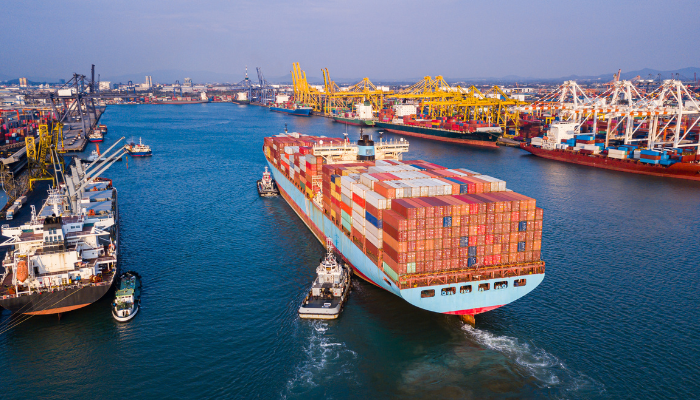
Now, regarding water transport, there can be various classifications other than the types of vessels or watercraft. Let us look at a few of them.
Types of Water Transport Based on routes or types of waterways catering to the traffic
Based on the waterways, water bodies, and routes catering to maritime or waterborne traffic, water or marine transport can be declassified into the following types:
River: This is a local form of water transport that is responsible for transport in a river. Rivers, as we know, are shallow freshwater bodies within a country that may span varying lengths. Riverine transportation further comes under the purview of inland waterways. This means that the channels or bodies catering to the given traffic are limited only to shallow water bodies under local consideration.
Mostly inland water transportation is only meant for short-distance travel from one place to another. So likewise, river transport includes small to medium-sized vessels for both commercial and public as well as personal transportation across varying distances within the geographical limits of a country or state.
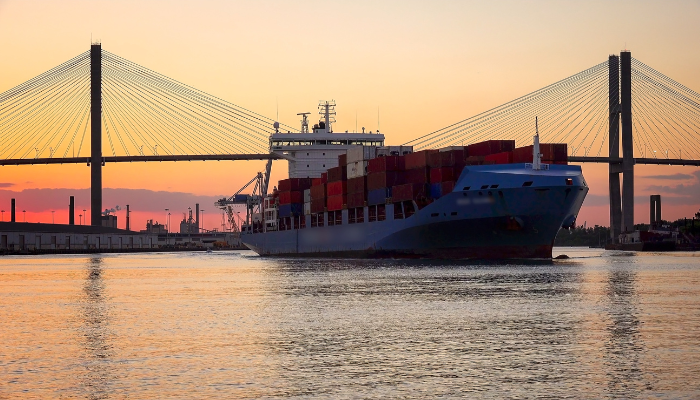
They may include a simple and austere fisherman’s boat lazily basking in the mellow sunlight of dusk to a medium-sized cargo vessel transporting food stock or industrial goods across distances of maybe 1000 or 2000 kilometres from one tip of a country to another.
Modes of river transport include conventional goods or cargo carriers, fishing vessels, barges, speedcrafts, steamers, trawlers, dinghies, pleasure yachts, high-speed planing boats, river ferries, and so on. Because of the limited or restricted depths of the waterbody, all river vessels are classified as shallow draft vessels .
Lakes: In a technical sense, lakes are enclosed or bounded bodies of water with varying surface areas. This means they can range from the size of Bhopal Lake in India to the size of Lake Superior in the United States, which is the single largest freshwater lake in the world! Not only the areas but also the depths vary accordingly. So, the modes of transport and the type of traffic also depend on the extent and size of the lake. However, for all practical purposes, this is also considered under the study of inland waterways where there is a low draft.
Coastal: This comes under the purview of deep-water transportation. The coastal mode of transportation encompasses vessels that tread close to the shoreline. They include both commercials as well as passenger vessels .
For example, there are two ports of call, A and B, along a particular coastline at a separation of 2000 kilometres. A typical coastal vessel travels from A to B and back during a short span of a voyage, say in a period of 4 to 5 days. Fishing trawlers, coastal coal carriers, and tankers that transport coal and petroleum products within two locations in the same country are good examples of commercial coastal vessels.
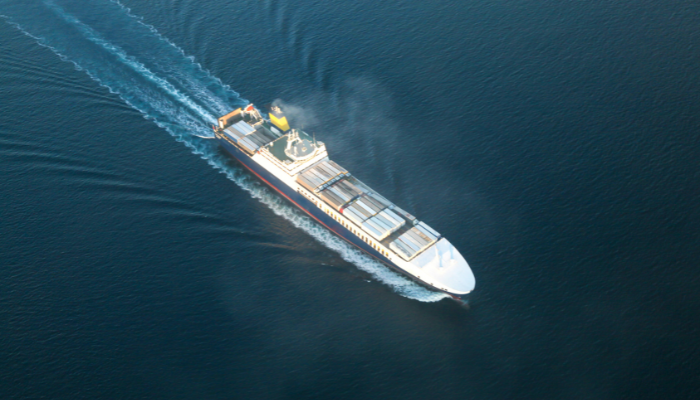
Similarly, ferries carrying holiday-seekers from the port of a city to some famous beach destination some hundred or thousand kilometres away on a charter basis are examples of passenger vessels under the coastal classification.
Coastal vessels have different regulations for design and construction under classification guidelines. They adhere to their routes up a certain distance from the coastline and are not regulated to go into deep seas.
Since they are designed to sail only up to the extent of distance, they are said to have a much lower range than deep-sea vessels. In terms of their structural design, they are stronger and have higher levels of endurance than shallow-draft vessels but much lesser than their deep-water counterparts. Such vessels are also used for shorter distances, like a coastal region to a nearby island, which may be a popular tourist hotspot.
International and Intercontinental : Most maritime traffic is deemed for international or intercontinental travel. While international travel may be between two countries within the same continental boundary, for example, Germany and Sweden or Italy and Greece, intercontinental travel spans across large oceans, separating two continents.
Most of the marine maritime traffic is in the Atlantic and Pacific, the world’s two biggest oceans. Vessels designed for intercontinental travel are structurally in the highest levels of superiority and have very high degrees of endurance. Due to the global monopoly of aviation for the last several decades, most intercontinental maritime traffic comprises commercial vessels, mostly bulkers, tankers, and containerships, along with defence and research vessels .
Polar Vessels: They come under a particular type of vessel classification. Polar vessels are designed and constructed to ply in icy waters containing ice sheets, floes, bergs, or slabs. Since they often need to overcome the forces and the higher degree of hydrodynamic forces from the ice, they are structurally strengthened to a very high level and have arrangements to survive in adversely cold weather conditions for days at a stretch. Icebreakers are in the top category of polar vessels as they are designed to break through greater thicknesses of ice and often clear the path for an entailing ship to follow.
Types of Water Transport Based on ownership and utility
Most of the vessels are categorized based on their ownership or utilization per the following categories:
Commercial: These vessels comprise the highest share of maritime traffic. All inland or deep-sea vessels dedicated to trade, commerce, and industrial purposes are termed commercial vessels. Commercial vessels can be anything from an oil barge to a bulk carrier, a fishing trawler to a containership, and a rice carrier to an LPG carrier. All commercial vessels comprise vital and indispensable links in the global trade and supply chain at multifarious levels. Commercial vessels are either private or government-owned.
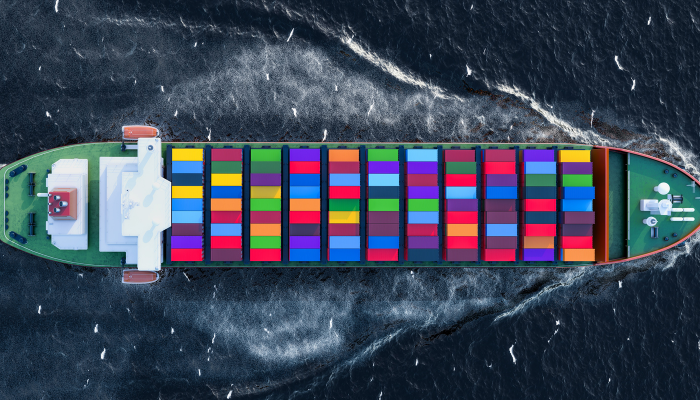
Passenger and public vessels: They comprise vessels dedicated to passenger travel as a mode of waterborne public transportation. As mentioned earlier, the utility of ships for passenger travel has deprecated considerably over time after the monopoly of aviation for the last many years. However, for pleasure and luxury recreation purposes, they are used at many places for holiday-seekers and travellers. Shallow water vessels for public transport are still very popular worldwide in water taxis, river cruises, ferries, steamers, launches, and so on, especially for short-distance travel.
Private Vessels: These small to medium-sized, sometimes bigger, vessels are liable to private ownership only. Ownership may be limited to a single person or a body like an organization or concern. However, as mentioned above, private vessels may not be confused with commercial vessels under private ownership. Commercial vessels are usually bigger (though smaller ships are very much there), which pertains to a more extensive fleet of a shipping or international fleet transport organization solely dedicated to cargo transport and supply chain. They operate round the clock across varying distances for the transport or carriage of a wide range of cargo or supplies in various quantities.
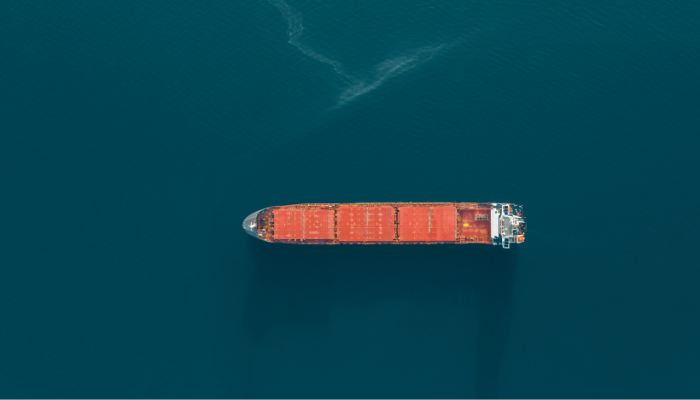
A containership owned, managed, and operated by Maersk or an oil tanker belonging to Scorpio or Euronav Tankers are examples of mainstream commercial vessels under private or corporate ownership.
But a medium-sized survey vessel owned and operated by a coastal engineering organization or a couple of small or medium fishing trawlers run by a significant seafood processing chain are examples of privately-owned ships. Vessels owned by an individual are primarily for pleasure and recreation for the affluent class. Yachts are classic examples of them.
Defence: These vessels, too, are exceptionally prominent among the global fleet, especially for superpowers. However, irrespective of the size, population, and so-called global dominance, every country has its dedicated naval fleet as a part of its military capabilities.
Defence vessels may range from warships, carriers, frigates, destroyers, and corvettes to small patrol vessels for the Coast Guard or high-speed rescue boats used by the Navy. Submarines are a crucial part of several nations’ naval fleets.
Special Purpose Vessels: These vessels are mainly research or exploration vessels used for scientific purposes. They may be government-owned or operated by institutions or bodies.
Types of Water Transport Based on Submersibility
Last but not least, water transport can be based on submergibility:
Surface Vessels: All forms of ships and boats which stay afloat in water are surface vessels. They may be further divided into the following types: displacement, planing, and semi-planing.
Submarines and submersibles: As we already know, these vessels remain submerged below a certain height for a diverse read on submarines and submersibles.
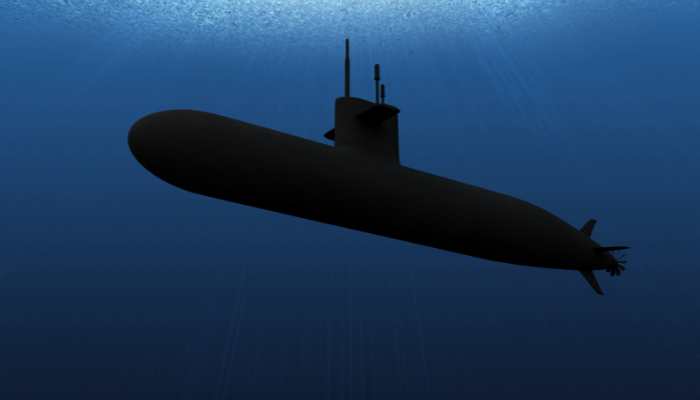
You might also like to read-
- 8 Major Types of Cargo Transported Through the Shipping Industry
- Life on the water: 11 Floating Villages across the World
- IMO: Preparation Is The Key In Ballast Water Management
- Different Technologies For Ballast Water Treatment
- What are Deep Water Ports?
Do you have info to share with us ? Suggest a correction

About Author
Subhodeep is a Naval Architecture and Ocean Engineering graduate. Interested in the intricacies of marine structures and goal-based design aspects, he is dedicated to sharing and propagation of common technical knowledge within this sector, which, at this very moment, requires a turnabout to flourish back to its old glory.
Latest Marine Navigation Articles You Would Like :
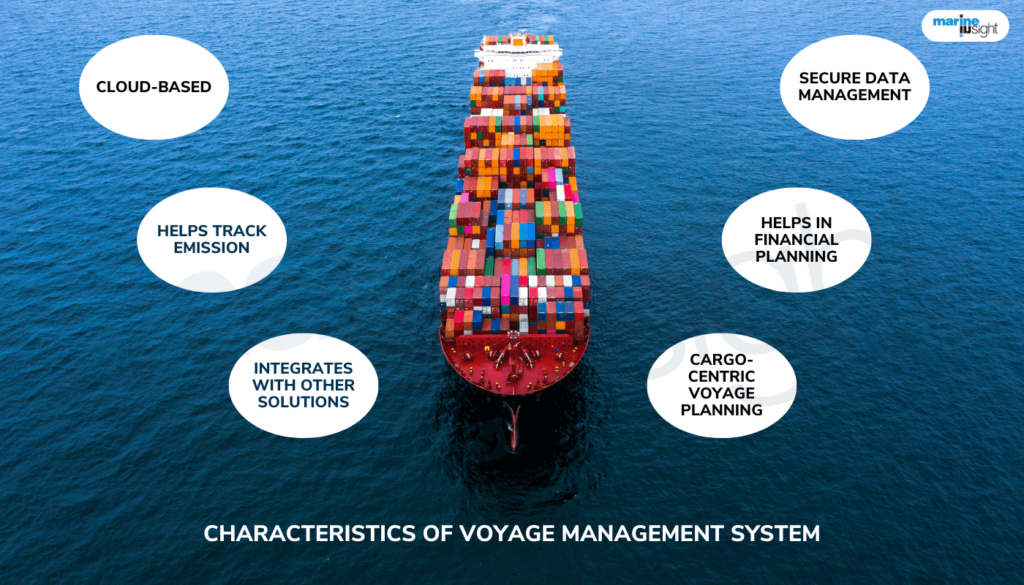
What is Voyage Management System?
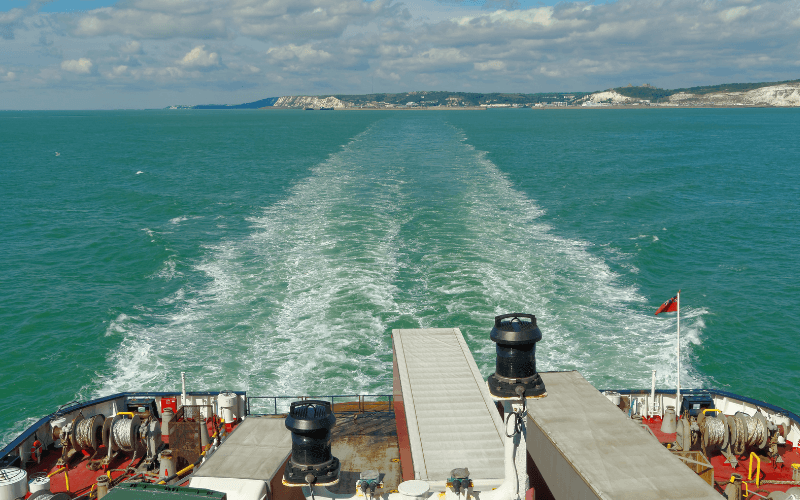
The Strait Of Dover – The Busiest Shipping Route In The World
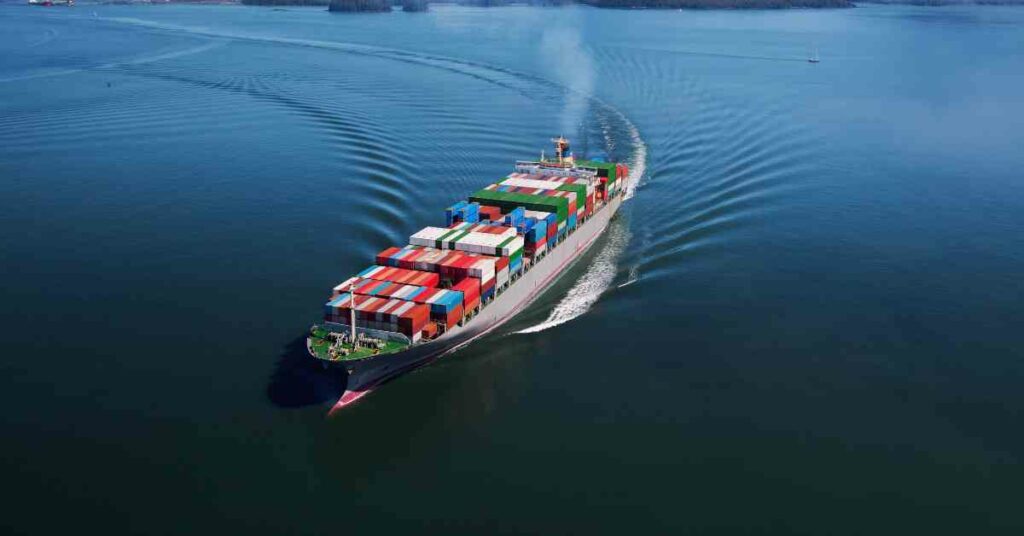
What is Transverse Thrust in Ships?
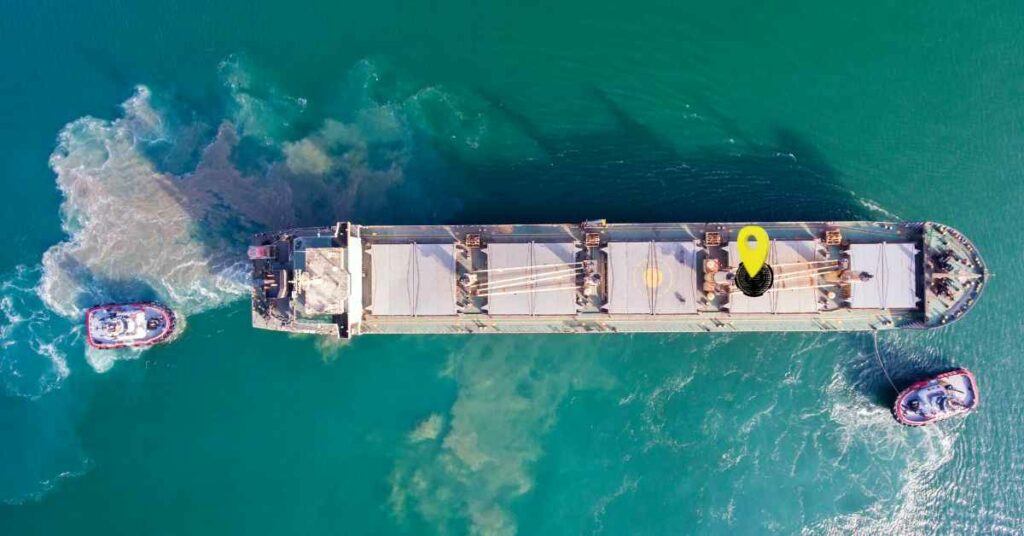
What Is The Pivot Point Of A Vessel?
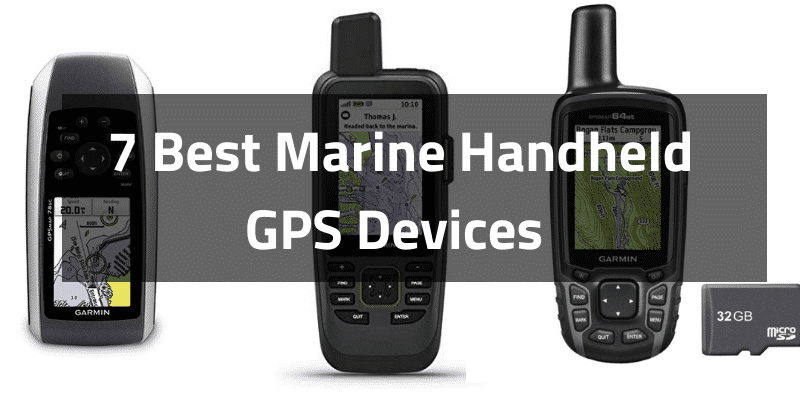
7 Best Handheld Marine GPS in 2024
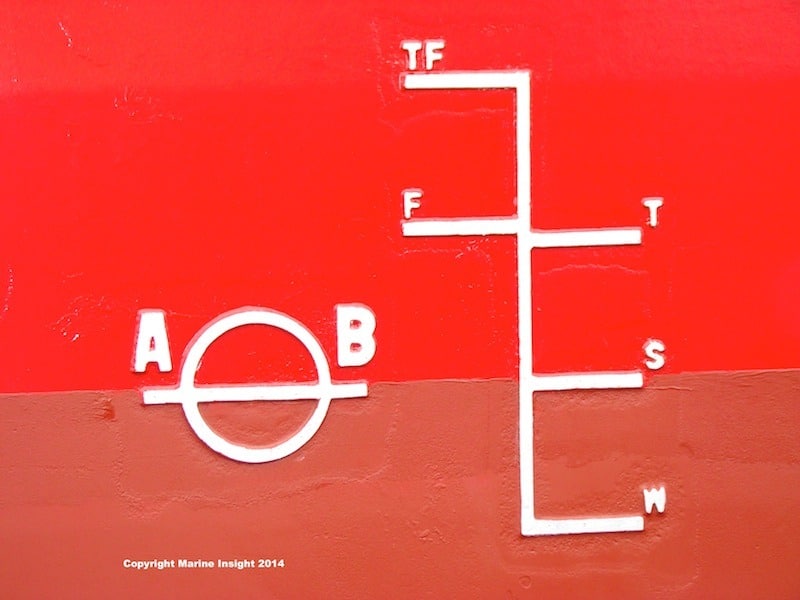
Introduction To Ship Load Lines
Daily maritime news, straight to your inbox.
Sign Up To Get Daily Newsletters
Join over 60k+ people who read our daily newsletters
By subscribing, you agree to our Privacy Policy and may receive occasional deal communications; you can unsubscribe anytime.
Leave a Reply
Your email address will not be published. Required fields are marked *
Subscribe to Marine Insight Daily Newsletter
" * " indicates required fields
Marine Engineering
Marine Engine Air Compressor Marine Boiler Oily Water Separator Marine Electrical Ship Generator Ship Stabilizer
Nautical Science
Mooring Bridge Watchkeeping Ship Manoeuvring Nautical Charts Anchoring Nautical Equipment Shipboard Guidelines
Explore
Free Maritime eBooks Premium Maritime eBooks Marine Safety Financial Planning Marine Careers Maritime Law Ship Dry Dock
Shipping News Maritime Reports Videos Maritime Piracy Offshore Safety Of Life At Sea (SOLAS) MARPOL
WAIT! Did You Download 13 FREE Maritime eBooks?
Sign-up and download instantly!
We respect your privacy and take protecting it very seriously. No spam!
WAIT! Did You Download 12 FREE Maritime eBooks?
Transportation
Historically, societies have always located near water, due partly to the fact that water enables more efficient travel compared to going over land. Waterways are critically important to the transportation of people and goods throughout the world. The complex network of connections between coastal ports, inland ports, rail, air, and truck routes forms a foundation of material economic wealth worldwide.
Within the United States, waterways have been developed and integrated into a world-class transportation system that has been instrumental in the country's economic development. Today, there are more than 17,700 kilometers of commercially important navigation channels in the lower 48 states.
Early History of Water-based Transportation
From the sixteenth to the eighteenth centuries, small subsistence farms were prevalent among the American colonies. Eventually larger farms emerged and produced crops such as wheat, tobacco, rice, indigo, and cotton that were commercially marketable in Europe. Ocean vessels transported the bulk, low-value goods from the colonies to Europe and returned with high-value, low-density goods such as inks, linens, and finished products that had a much higher return on the investment per vessel trip.
Agricultural production continued to grow and support the growing colonies' economic development. The speed and low cost of transporting goods by water influenced the locations of population settlements near navigable water (rivers, lakes, canals, and oceans). Goods produced on inland farms were transported via inland waterways to the coastal ports. Goods shipped by smaller vessels from surrounding ports were transported to New York, Boston, and Philadelphia, and exported on larger oceangoing ships. These ships from the smaller ports then transported imported goods back to the surrounding ports.
During the 1700s, the British government passed many acts, such as the Navigation Acts and the Stamp Act of 1765, designed to collect taxes from the colonists. The acts affected trade, and were met with opposition from the colonist. In Philadelphia during the fall of 1774, the "Declarations and Resolves of the First Continental Congress" called for non-importation of British goods, and became a catalyst for the American Revolutionary War (1775–1784). The resulting independence for the United States allowed trade a free rein, and it flourished.
Westward Expansion.
The westward expansion of the United States exposed a wealth of natural resources and an increased production in agricultural goods. The inland transportation infrastructure of roads, railroads, canals, and rivers connected the early western settlers with the rest of the nation, and enabled goods to move from the west back to more populated areas in the east and onto other parts of the world. The River and Harbor (Appropriations) Act of 1876 established federal funding of waterways to promote national commerce but not to benefit any particular state nor to allow waterway tolls.
Twentieth and Twenty-First Centuries
Increased levels of world trade resulted from the economic growth occurring since the end of World War II in 1945. The United States was in the position to take advantage of new trading opportunities as new world markets opened. Developing countries demanded capital goods, agricultural products, consumer goods, and commercial services, which the United States could provide. As these nations produced goods for export, the United States became a market for these goods.
A significant factor in the opening of the inland waterway system (and the resultant world trade superiority of the United States) was the advances in ship technology and the application of steam power to ships that traveled the extensive water network. Larger and faster ships emerged from the advances in ship and engine design and improvements in construction materials.
Methods of cargo handling evolved to keep pace with the larger vessel sizes. The introduction of palletization and roll-on/roll-off cargoes enabled vessels to be loaded and unloaded in less time. The emergence of containerization in the late 1950s dramatically affected the shipping industry and port infrastructure. The increasing size of containerized cargo vessels became a driving force in the demand for expanded ports and improved facilities.
Importance to Foreign Trade.
About 95 percent of U.S. foreign trade passes through its port system. Ports function as the transfer point between land and water transportation of cargo. * For vessels to transport the foreign traded cargo, they must be able to access the ports through established channels. The channels provide adequate water depths for the vessels and navigational aids.
Today's Global Trade.
Today the world economy has become globalized. The economic system is changing from one with distinct local and national markets, separated by trade barriers, distance, time, and culture, to one that is increasingly converging and integrating into a global economy.
According to the National Oceanic and Atmospheric Administration (NOAA), the United States was the world's leading trader in 1998, accounting for about one billion tons of ocean-bound trade (about 20 percent of the world's total ocean-bound trade) out of about 2.4 billion tons of total foreign trade. In 2000, according to the U.S. Department of Transportation, approximately $736 billion of goods (about 40 percent of the total U.S. foreign trade by dollar amount) were shipped via ocean vessels and passed through U.S. ports. By 2020, international trade is estimated to more than double (by weight) within the United States, with the majority of this trade projected to move via ocean shipping.
Marine Transportation System.
According to the Department of Transportation, when cargo is transported by water within the United States, 95 percent of the time it involves the Marine Transportation System (MTS). This comprehensive system resulted from years of water transport development involving such U.S. organizations as the Coast Guard, Maritime Administration, Army Corps of Engineers, NOAA, and Environmental Protection Agency.
The MTS is a complex and diverse national network of waterways, ports, and intermodal landside connections that allows various modes of water-based transportation. The system includes: navigable waterways (such as the Great Lakes-St. Lawrence Seaway); publicly and privately owned commerce-carrying vessels; over 3,500 bulk oil transfer facilities; more than 350 ports located at approximately 4,000 marine terminals; about 40,000 kilometers of navigable channels; more than 235 locks and dams at over 190 locations; shipyards; rail yards; vessel repair facilities, over 10,000 recreational marinas; and a trained labor staff that operates and maintains the entire infrastructure. Users of the waterway system each year include 70,000 port calls for commercial vessels, 110,000 fishing vessels, and 20 million recreational vessels.
International Maritime Fleets and Law
Many nations around the world have built up their fleets to become very profitable. Since World War II, the size of the U.S. flag merchant fleet has declined, partly due to improved technologies and partly due to foreign competition among fleets. But while this number of ships has declined, the productivity has greatly increased. Since 1970, these fewer ships carry 42 percent more cargo. However, the U.S. fleet accounts for less than 5 percent of all commercial foreign trade by weight. Data from the U.S. Army Corps of Engineers and the Maritime Administration indicate the following composition and carrying capacity of the U.S.-flag fleet in 2000:
Composition Capacity
Passenger 1 : 1,265 Passenger: 368,000 passengers
Dry Bulk: 10 Dry Bulk: 2,124,000 metric tons
Dry Cargo/Offshore Support: Dry Cargo: 47,253,000 metric tons 2,910
Containership: 61——
Tanker: 173 Tanker: 19,172,000 metric tons
Vehicular/Railroad Car Ferry: Railroad/Car Float: 89,000 metric 229 tons
Towboat: 5,098——
Dredge: 570 Other 2 : 1,072,000 metric tons
Other 2 : 45 Total: 72,078,000 metric tons/
368,000 passengers
1 Includes ferries and day excursion vessels
2 Includes certain general cargo, roll-on/roll-off, multipurpose, LASH (Lighter Aboard Ship) vessels, and deck barges
All ships must be registered to one of the world's nations so that responsibility for violations of international laws and conventions may be assigned. This causes many shipping companies to shop around for nations that give them the best values on taxes, wages, and legal restrictions.
Liberia has the largest shipping fleet in the world. Relatively smaller countries like the Bahamas, Honduras, the Marshall Islands, Panama, and Vanuatu have large fleets as well. The United Nation's International Maritime Organization (IMO) is responsible for improving the safety of international shipping, preventing marine pollution, and facilitating international maritime traffic. The Department of Transportation has the overall lead on all maritime issues for the United States, and works with the IMO on these issues.
Economics, National Security, and the Environment
The United States dependence on seas and waterways has been vital to its economic success and national security. The pool of skilled labor working on U.S. flag vessels is also a national security asset. This workforce is relied upon to meet surges in shipping needs in the advent of emergencies. The merchant marine has played a historical role in military conflicts. In 1996, the Maritime Security Act established the maritime security program to support a fleet of U.S. commercial vessels with American crews to support the military and economic security of the country; approximately 47 vessels participate in this program.
The inland waterways are also a national security asset. The 1920 Jones Act required domestic waterborne commerce to be transported in vessels built in the United States, documented under U.S. laws, and owned by U.S. citizens. The Jones Act covers over 42,000 commercial vessels, 124,000 jobs, and $15 billion in economic activity. Many other countries have similar laws restricting foreign access to domestic trade shipped via waterways.
The MTS is also vital to national security. The ability to rapidly deploy troops and materials worldwide is critical to the country's defense. The Voluntary Intermodal Sealift Agreement (VISA) is a standby agreement intended to make commercial, intermodal dry cargo capacity and supporting infrastructure available to meet contingency deployment needs of the Department of Defense. Since World War II, approximately 95 percent of all military equipment and material sent to combat and crisis areas was ship cargo transported by ocean vessels. For example, during the Persian Gulf War (1990–1991), nearly all domestic supplies intended for U.S. military forces traveled by ship.
Marine transportation is an important use of the ocean. Increased demands will be placed on U.S. ports and waterways as domestic and international trade continues to expand. These increases in the use of waterways and port facilities must be achieved while still protecting human health and the environment.
SEE ALSO Navigation at Sea, History of ; Ports and Harbors.
Terri A. Thomas
and William Arthur Atkins
Bibliography
Bauer, K. Jack. A Maritime History of the United States: The Role of America's Seas and Waterways. Columbia, SC: University of South Carolina Press, 1988.
Hershman, Marc J. Urban Ports and Harbors Management. New York: Taylor & Francis, 1988.
Hill, Forest G. Roads, Rails, and Waterways: The Army Engineers and Early Transportation. Norman, OK: University of Oklahoma Press, 1957.
Kendall, Lane C. The Business of Shipping. Centreville, MD: Cornell Maritime Press, 1979.
Marcus, Henry et al. Federal Port Policy in the United States. Cambridge, MA: The MIT Press, 1976.
Internet Resources
Great Lakes and Seaway Shipping. N. Schultheiss. <http://www.boatnerd.com> .
Navigation Data Center. U.S. Army Corps of Engineers. <http://www.iwr.usace.army.mil/ndc/index.htm> .
U.S. Port Totals by Type Service. U.S. Foreign Waterborne Transportation Statistics Program, U.S. Army Corps of Engineers and Department of Transportation. <http://www.marad.dot.gov/statistics/usfwts/index.html> .
What is the Marine Transportation System? U.S. Department of Transportation. <http://www.dot.gov/mts/about.htm> .
* See "Oil Spills: Impact on the Ocean" and "Ports and Harbors" for photographs of busy U.S. ports.
User Contributions:
Comment about this article, ask questions, or add new information about this topic:.

Different Types of Water Transportation
If you think of water transport, the first thing that should pop in your mind is boats, ships and any size they’re possibly available in. However, there are more types of water transportation, and given that the ocean is so big, there’s no limit to what could be discovered, or how far one can travel by ship.
Water transportation was invented to move people, mails and freight by either boat, sailboat, ship or barge over the ocean, sea lakes, canals and rivers.
It is considered a very important mode of transport, and it’s all due to shipping and the role it plays in business, retail, society and travel, primarily to travel long distances. If you think about the thousands of products being loaded onto a container, there is entirely no way that would be able to be transported from Africa to the U.S. by plane. Since aircraft and sea-craft are the only two means of transportation across the water, we can understand why ships, for instance, are so incredibly important.
Different Types of Water Transport
There are various types of water vehicles. These include cruise ships, racing boats, off-road riding boats, windsurfer boats, riverboats, jet skis, battleships, raft boats, canoes, ferries, yachts, submarines, as well as tugboats.
It’s important to remember that water transportation isn’t only required for use on the sea/ ocean, but also for inland rivers and canals.
Even though ships that allow for the transportation of people, as well as goods over the water, is extremely important, transporting individuals and using smaller boats for travelling over lakes, rivers and canals, are also very important, especially when it comes to trading goods in small quantities from island to island.
Water transportation is only classified in two different categories, and these include both inland and ocean water transportation.
Water cooler London and water dispensers from Living-Water.
Share This Story, Choose Your Platform!
About the author: living-water ltd - content team.
Related Posts

Bottled water coolers | Hydration hubs + wellness wealth

Here’s to the hydration revolution | Bottled water coolers are transforming lives everywhere

Hot & cold bottled water coolers | Festive drinks to keep guests hydrated
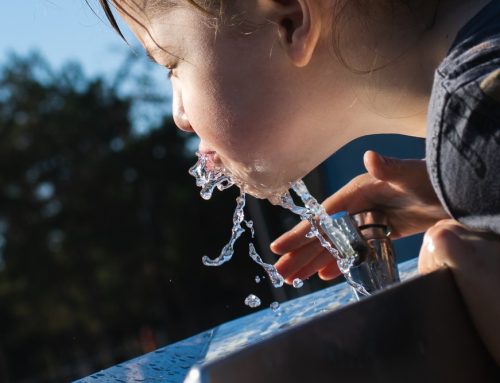
The art of staying hydrated: A water solution that works for you
Water Transport Name: A Comprehensive Guide to Nautical Vessels
Understanding the various forms of water transport is essential in today's globalized world. Water transport plays a crucial role in connecting different regions and facilitating trade, as well as contributing to the overall functioning of ecosystems. From oceans and rivers to canals and lakes, water bodies provide an efficient means of transportation for both goods and people. The use of water for transportation dates back to ancient civilizations, and its importance continues to grow as technology advances and industries evolve.

In addition to the movement of goods and people across bodies of water, water transport also refers to the circulation of water within living organisms. An example of this phenomenon can be observed in plants, where water is absorbed through the roots and then transported throughout the plant structure via a process known as transpiration. This process not only helps maintain the plant's structural integrity but also aids in the absorption of essential nutrients.
Key Takeaways
- Water transport is vital for trade, travel, and ecosystem functions.
- Different types of water transport systems facilitate movement across oceans, rivers, canals, and lakes.
- Plant life relies on water transport processes, such as transpiration, for nutrient absorption, structural maintenance, and overall growth.
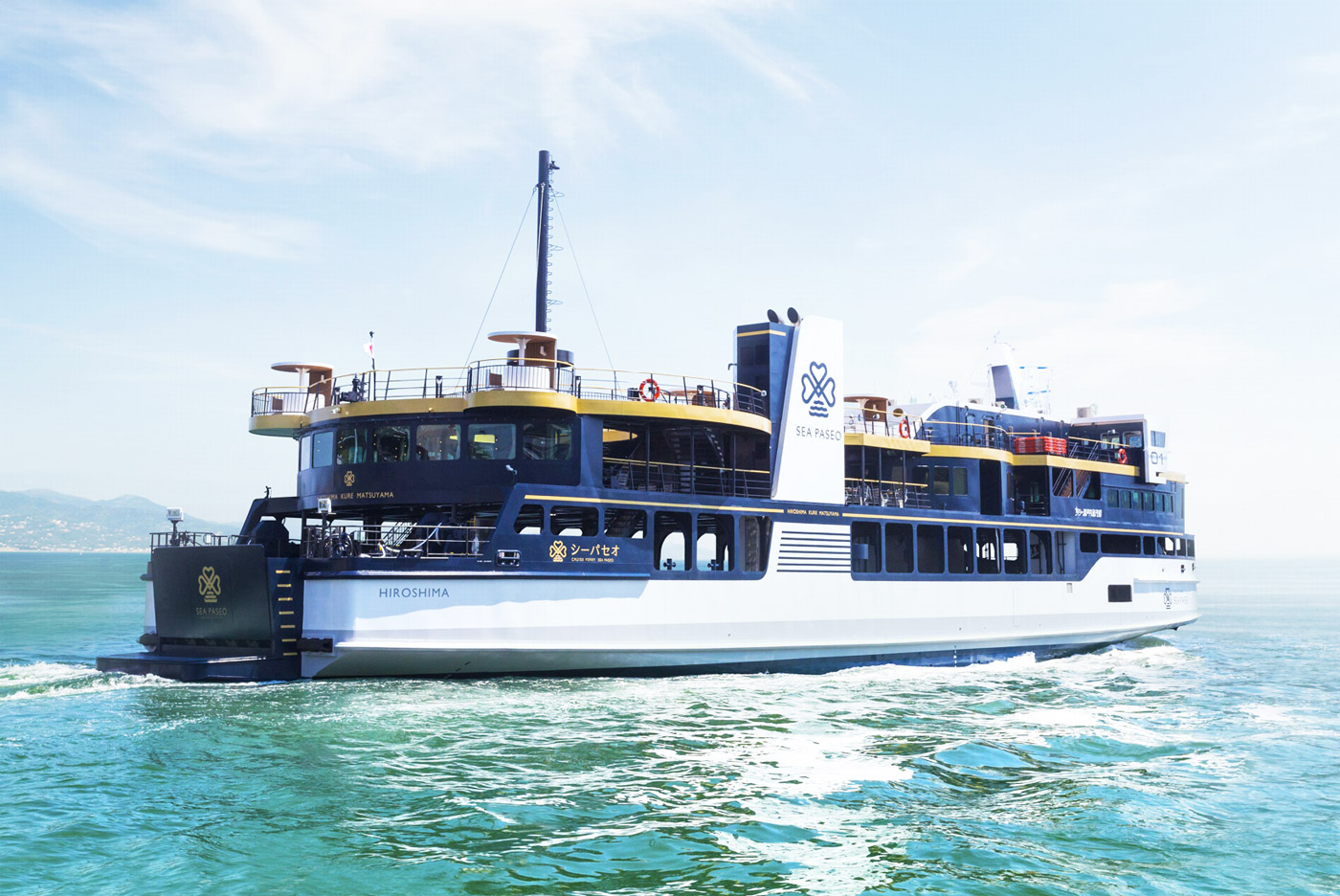
Understanding Water Transport
Water transport is a vital mode of transportation that plays a significant role in connecting different regions and countries, greatly contributing to the global economy. It involves the usage of various water vessels to move goods, passengers, and other cargo across large bodies of water like seas, lakes, and rivers.
This category of transportation relies on a diverse range of water vessels such as ships, barges, ferries, and boats , each designed for specific purposes and conditions. Ships and large cargo carriers are usually utilized for long-distance and high-capacity transport, while smaller vessels like ferries are employed for shorter distances and ferrying passengers.
One of the main advantages of water transport is its cost-effectiveness, owing to the fact that it can handle large amounts of cargo at minimal expenses per unit. Additionally, it is a more sustainable and environmentally friendly mode of transportation compared to land and air options, as it produces less pollution and requires less energy for operations.
Water transportation has existed for centuries, evolving from primitive rafts and canoes to sophisticated modern vessels like container ships and cruise liners. The continuous development of technologies in areas like navigation, communication, and propulsion systems has significantly improved the efficiency and reliability of water transport.
Another aspect of water transport is the complex network of routes and infrastructure that enables its smooth functioning. Various seaports, harbors, and inland waterways form the basis for effective water transportation, facilitating the seamless movement of vessels and transfer of cargo between different points within the network.
In summary, water transport is a crucial and essential component of global transportation systems, providing numerous economic and environmental benefits. With the ongoing advancements in technology and infrastructure, it will continue to serve as a sustainable and efficient means of connecting the world.

Types of Water Transport
Ships and boats.
Various types of ships and boats are commonly used for water transportation. Some examples include:
- Cargo Ships and Bulk Carriers: These ships transport goods, materials, and commodities across oceans and seas. Common cargo ships include container ships , bulk carriers, and oil tankers.
- Cruise Ships: Large passenger ships designed for recreational voyages on oceans and seas, typically featuring various amenities and entertainment options.
- Ferries and Water Taxis: Smaller vessels that transport passengers across shorter distances, often between islands or coastal cities.
- Fishing Boats and Trawlers: Vessels specifically designed for fishing activities; can range from small fishing boats to larger commercial trawlers.
- Motorboats and Sailboats: Recreational watercraft powered by engines or sails, commonly used for leisure activities or personal transportation on bodies of water like lakes and rivers.

Submarines and Underwater Vessels
Submarines and other underwater vessels are designed to travel below the surface of the water, with many different types serving various purposes:
- Military Submarines: Mainly used by armed forces for stealth and reconnaissance missions, some equipped with torpedoes and missiles for combat situations.
- Research Submersibles: Smaller underwater vehicles specifically designed for deep-sea exploration, marine life observation, and oceanographic research.
- Recreational Submarines and Personal Submersibles: Smaller, privately-owned vessels designed for underwater exploration and leisure activities.
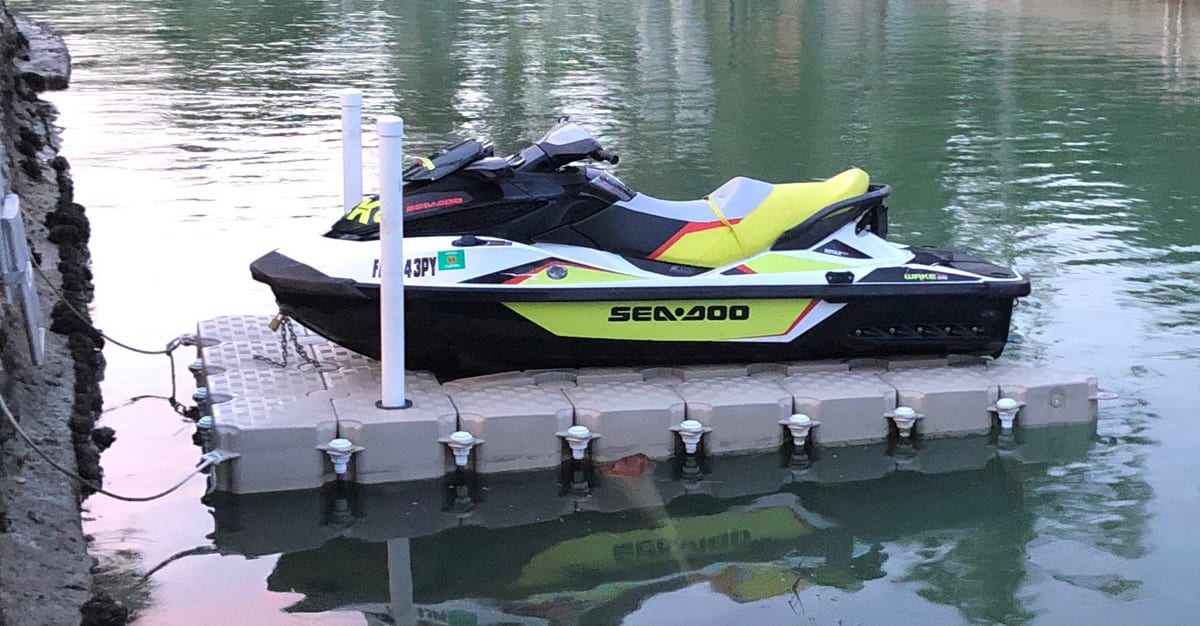
Sport and Recreational Watercraft
A wide range of sport and recreational watercraft are designed for personal enjoyment, including:
- Kayaks and Canoes: Small, lightweight boats typically propelled by paddles, used for river and lake activities or exploring coastal waters.
- Jet Skis and Personal Watercraft: Small, motorized water vehicles designed for fast, agile movement on water, typically used for recreational purposes.
- Pontoons and Houseboats: Larger, more stable watercraft that provide living spaces and amenities, allowing for extended stays on the water.
- Windsurfers and Kitesurfers: Watercraft that combines elements of sailing and surfing, using wind power to ride waves and perform jumps and tricks.
- Swimming and Seaplanes: Unconventional methods of water transportation, such as swimming or using seaplanes that can take off and land on water.
These are just a few examples of the different types of water transport available, with many more vessels and watercraft designed for specific purposes and diverse situations.
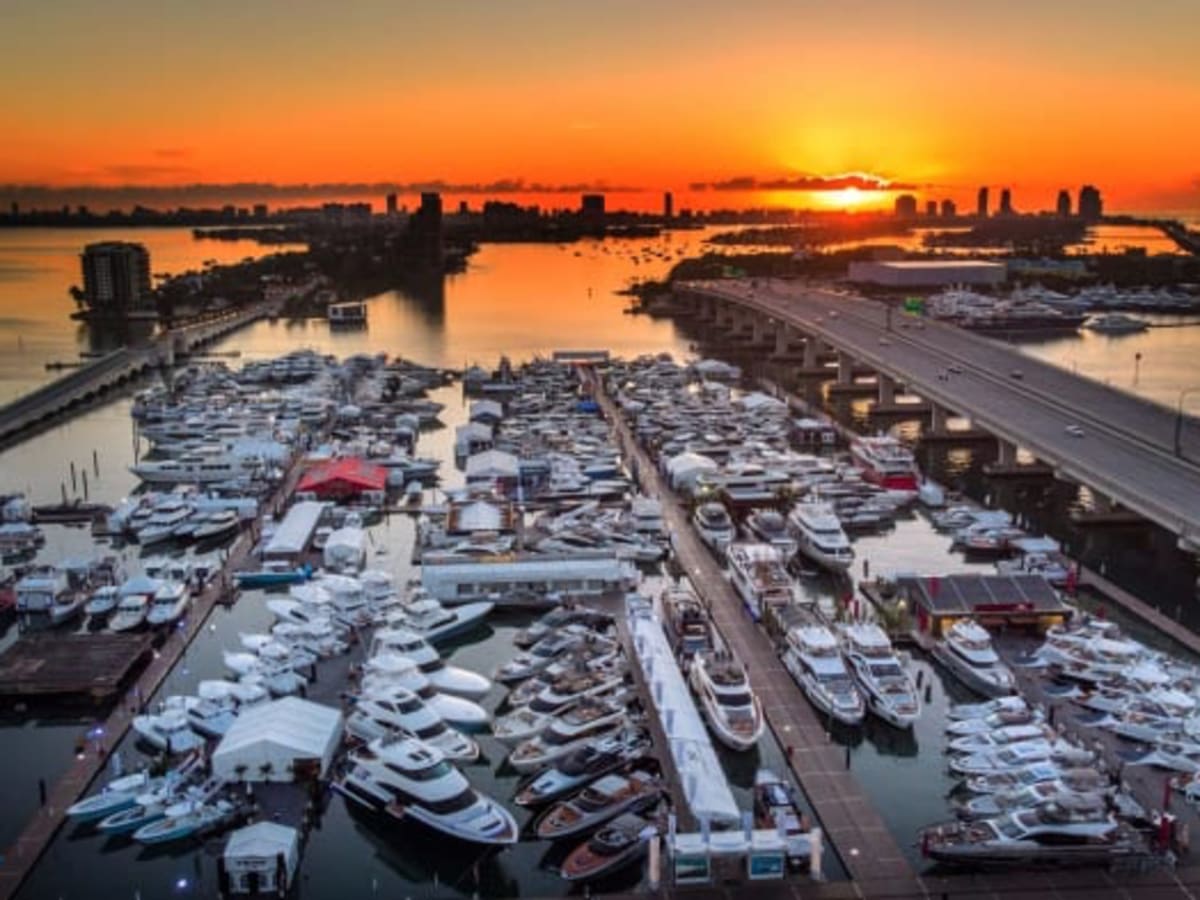
Water Bodies for Transport
Water transport is an essential part of human civilization, providing avenues for trade, transportation, and exploration. There are various types of water bodies that facilitate this critical aspect of human development, including rivers, lakes, coastal waterways, and canals. These natural and man-made passages connect different regions, allowing for efficient movement of goods and people over long distances.
Rivers are natural waterways that have been used for transportation since ancient times. They provide an effective means of moving heavy loads and large volumes of cargo with minimal energy consumption. Many major cities and ancient civilizations were established along rivers to capitalize on their transportation potential. Notable examples include the Nile, Amazon, and Mississippi, which play crucial roles in the regional economies and cultures.
Lakes, on the other hand, are large bodies of water usually situated inland, formed by natural geological processes or human intervention. They also serve as important transportation hubs, connecting different regions through a network of water routes. The Great Lakes in North America, for example, are a significant transportation resource supporting trade and transportation in the United States and Canada.
Coastal waterways encompass various bodies of water near the coast, including bays, harbors, and estuaries. These provide access to the vast expanse of the world's oceans, such as the Atlantic and Pacific. Coastal waterways have been essential to the development of global trade, linking continents and facilitating the movement of goods, people, and ideas across nations.
Canals are human-made waterways built to improve transport and navigation by connecting different bodies of water or bypassing challenging natural water routes. Canals have played a transformative role in global trade and transportation, such as the Panama Canal, which connects the Atlantic and Pacific Oceans, significantly reducing the maritime distance between the east and west coasts of the Americas.
Water transport, reliant on these various water bodies, has enabled civilizations to thrive and expand their reach. Rivers, lakes, coastal waterways, and canals have all played essential roles in the development of trade, transportation, and the exchange of ideas throughout history.

Land vs Water Transport
Transportation plays a crucial role in today's world, as it facilitates the movement of people and goods from one place to another. Land and water transport are the two major categories of transportation modes that are delivering these essential services.
Land transport comprises vehicles such as cars, buses, trucks, and trains that operate on various types of roads and rail tracks. Cars, in particular, have become a ubiquitous mode of land transportation, offering convenience and flexibility in navigating cities and rural areas. Additionally, land transportation includes air travel as airplanes provide faster, long-distance service by flying across continents and oceans.
Water transport, on the other hand, consists of ships, boats, and other waterborne vehicles that navigate oceans, rivers, and canals. This type of transportation is an essential part of global trade and commerce, as more than 70% of the world's goods are transported across oceans by sea. Marine transportation can effectively and efficiently move almost any cargo, ranging from raw materials to finished products.
When comparing land and water transport, several factors come into play, including speed, cost, capacity, and environmental impact. Generally, land transport can achieve faster travel times, especially for shorter distances. Cars, buses, and planes provide faster and more convenient service for passengers and smaller cargo when comparing travel times. However, this convenience is traded for a higher cost, as land transport can be more expensive than water transport.
In contrast, water transport is a more cost-effective option for transporting large volumes of cargo. Ships can carry enormous amounts of goods, enabling economies of scale that help reduce the overall cost of transportation. Despite its lower speed, water transport is the preferred choice for long-distance, bulk, and heavy cargo transportation. Importantly, waterborne transport contributes significantly less to greenhouse gas emissions and pollutant emissions than land-based transport, which makes it a more environmentally-friendly choice.
In conclusion, both land and water transport play essential roles in connecting people and facilitating global trade. The choice between the two depends on the specific requirements of the transportation task at hand, with factors such as speed, volume, cost, and environmental impact being decisive in selecting the most suitable mode.
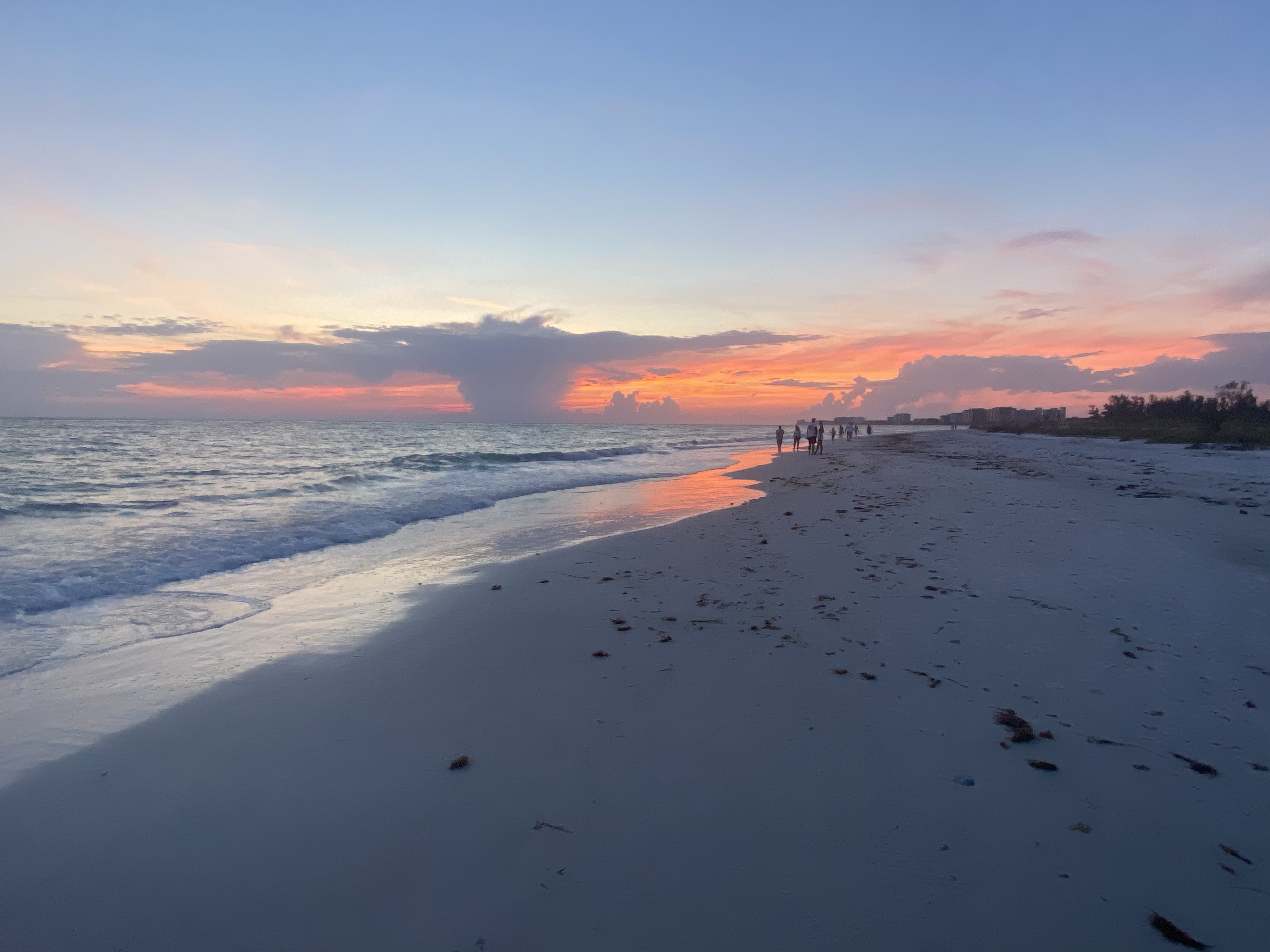
Plant Water Transport
Understanding xylem and phloem.
In plants, water and nutrients are transported through two specialized tissues: xylem and phloem. Xylem mainly transports water and minerals from the roots to the aerial parts of the plant, while phloem transports sugars and other organic compounds synthesized during photosynthesis from the leaves to other parts of the plant. Both xylem and phloem are composed of specialized cells, with xylem containing tracheid and vessel elements, and phloem containing sieve tube elements and companion cells.
Water moves through the xylem via cohesion, a process in which water molecules are attracted to one another, and at the cellular level, water moves primarily by osmosis. The movement of water across the cells in phloem also utilizes osmosis, but the process is more complex since phloem transports sugars and other substances in addition to water.
Water Potential and Osmosis
Water transport in plants is greatly influenced by water potential, which is the potential energy of a water sample relative to pure water in reference conditions. Water moves from areas of high water potential to areas of low water potential. Osmosis, a type of passive transport, plays a significant role in water movement as it is the process through which water molecules move across a semi-permeable membrane from a region of higher water potential to a region of lower water potential.
Water can move through the plant via two pathways: the symplast and the apoplast. The symplast pathway involves movement through the cytoplasm of the cells, while the apoplast pathway involves movement through cell walls and intercellular spaces. Water potential influences the balance of water transport between these two pathways.
Transpiration
Transpiration is the process of water movement through the plant and its evaporation from aerial parts, primarily from the leaves via stomata. Stomata are small openings on the leaf surface that regulate gas exchange, allowing carbon dioxide in and releasing oxygen and water vapor. The opening and closing of stomata are controlled by guard cells, which respond to various environmental factors.
A water potential gradient exists between the leaf interior and the atmosphere, driving the process of transpiration. As water evaporates from the leaf surface, it creates a negative pressure in the xylem, pulling water upward from the roots. Transpiration, therefore, has a critical role in the overall process of water transport in plants, facilitating the movement of water and nutrients from the roots to the aerial parts of the plant.
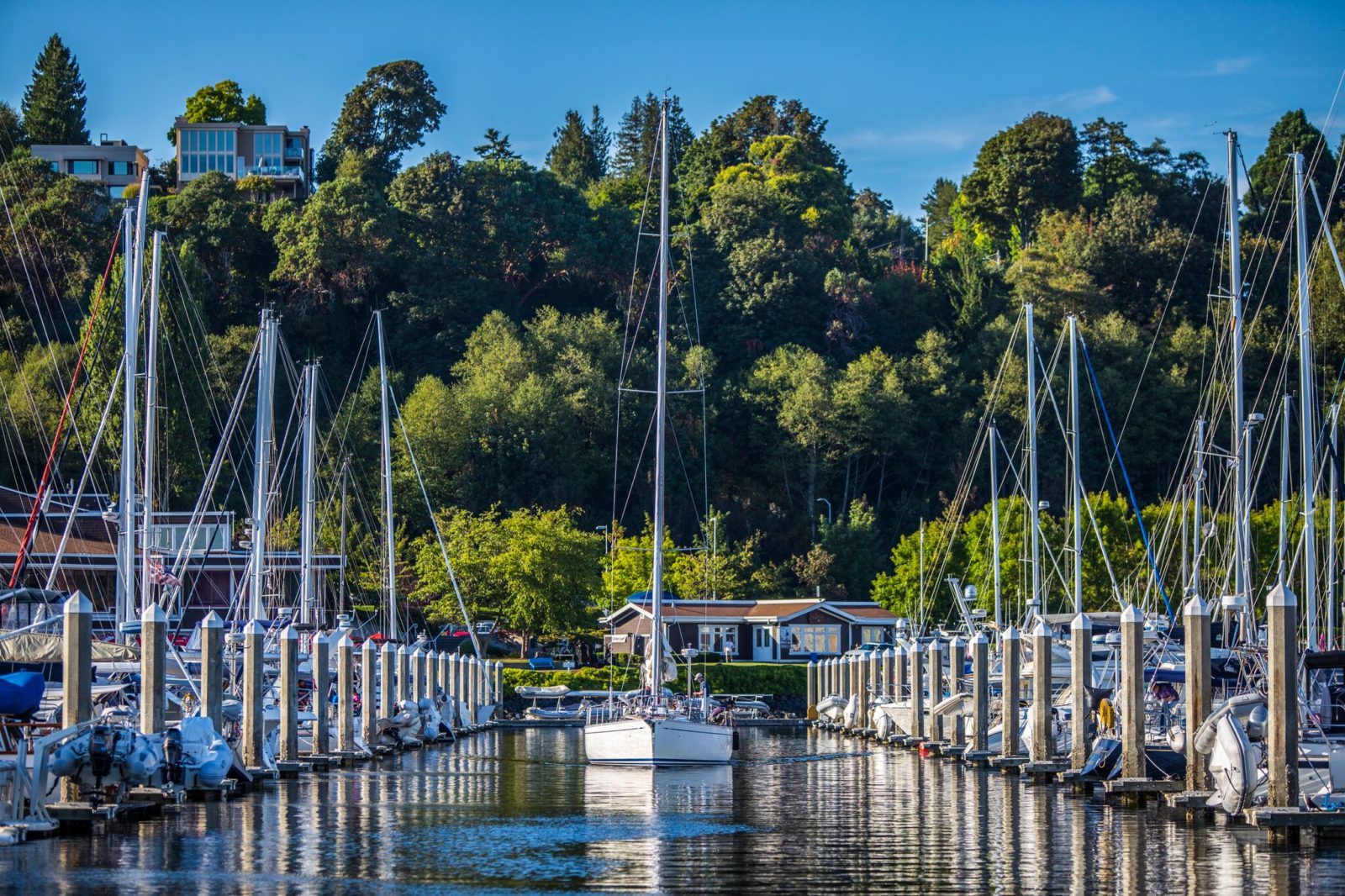
Impact of Pressure on Water Transport
Pressure plays a crucial role in water transport across various systems, particularly in situations involving filtration and fuel cell technology. Maintaining an optimal pressure ensures efficient water movement, helping to alleviate bottlenecks and achieve desired results in both natural and artificial applications.
In the context of filtration, pressure-driven water transport is highly dependent on the properties of the membranes used. A study on two-dimensional nanomaterial laminated membranes revealed that functional groups of graphene oxide exhibited a more significant influence on water transport under pressurized filtration conditions. Adjusting the pressure allows users to control the filtration efficiency and antifouling performance of the system.
Another application where pressure impacts water transport is within proton exchange membrane (PEM) fuel cells. These fuel cells require optimal management of water to maintain performance and prevent flooding or drying in the cell. Studies involving neutron radiography have demonstrated that adjusting pressure levels can directly affect the rates of water accumulation and dissipation, leading to better control of water transport through the porous structures of the fuel cell.
In the realm of biomimetic reverse osmosis membranes, pressure also plays a crucial role. Researchers have found that peptide-attached pillararenes water channels show a promising ability to mimic biological water transport systems. By adjusting feed pressure, the study reported an increase in water transport efficiency through these biomimetic membranes. As a result, regulating pressure can directly impact the performance of osmotic filtration systems.
In summary, pressure significantly affects water transport in various applications, ranging from filtration systems to fuel cells. Mastery over pressure levels can help improve transport efficiency, antifouling performance, and overall system control, making it a vital variable to consider in water transport processes.

Roots and Water Transport
Roots play a vital role in water transport within plants. They absorb water from the soil through their root hairs and transport it to other parts of the plant, including the leaves, stems, and flowers. This process enables plants to maintain essential physiological functions such as photosynthesis, nutrient transport, and growth.
One critical aspect of water transport in roots is the transport of water across cell membranes. This occurs through a process called osmosis, which involves the movement of water molecules across a semipermeable barrier such as the root surface or an air-water interface 1 . Osmotic pressure drives the water movement from areas of high water concentration to areas of low water concentration, leading to an even distribution of water molecules throughout the plant.
Another essential element in the water transport process in roots is the xylem, a specialized tissue responsible for transporting water and nutrients from the roots to the aerial parts of the plant. Xylem consists of elongated tube-like cells called vessels, allowing for efficient and rapid water transport. The driving force behind this water movement is the difference in water potential between the soil and the plant's shoots, which creates a tension that propels water upward through the xylem 2 .
Roots can also adjust their growth and development in response to water stress, such as drought conditions. They have the capability to alter their growth rate and morphology, increasing the surface area available for water absorption and transportation 3 . This adaptability helps the plant survive and thrive under various environmental conditions and is vital for maintaining adequate water transport.
In conclusion, roots are essential for water transport in plants, absorbing water from the soil and transporting it to other parts of the plant through osmosis and xylem vessel movement. Their adaptability to water stress conditions and their ability to regulate growth ensure that plants can maintain essential physiological functions even under challenging environmental conditions.

- https://royalsocietypublishing.org/doi/abs/10.1098/rstb.1976.0024 ↩
- https://academic.oup.com/jxb/article-abstract/65/2/381/485940 ↩
- https://academic.oup.com/jxb/article-abstract/51/350/1595/738124 ↩
Environmental Impact of Water Transport
Water transport, particularly marine transportation, has various environmental effects that need careful consideration. One major concern is the emission of greenhouse gases such as CO2 and NOx, which contribute to climate change and air pollution [^1^] . Ships also emit sulfur oxides (SOx), leading to the formation of acid rain and adverse effects on both human health and ecosystems.
Another environmental impact of water transport is the accidental release of harmful substances like oil, which can cause severe damage to marine life and aquatic ecosystems [^2^] . Invasive species can be introduced through ballast water discharge, disrupting the balance of native ecosystems and threatening biodiversity [^3^] .
Noise pollution from shipping operations can also have negative effects on marine animals, particularly those that rely on sound for communication, navigation, and hunting. This disturbance can lead to behavioral changes and even physical harm for the affected species.
Strategies to mitigate the environmental impacts of water transport include the adoption of alternative clean fuels, improving energy efficiency, implementing stricter regulations for emissions, and investing in innovative technologies to reduce the risks associated with vessel operations ^4^ . Planning and management of marine transportation also play a crucial role in minimizing the overall environmental consequences.
As water transport continues to grow in importance in global trade, it is essential to recognize its environmental impacts on aquatic ecosystems and related habitats, while developing and implementing strategies to manage such challenges sustainably and responsibly.

Frequently Asked Questions
What are the different types of water transport vehicles.
There are various types of water transport vehicles used for different purposes. Some common ones include ships, boats, ferries, barges, and canoes. These vehicles come in different sizes and designs, which are tailored to their specific use and the environment they operate in, such as rivers, lakes, and oceans.
What is the primary use of water transportation?
Water transportation serves various purposes, including cargo transport, passenger transport, military operations, and recreational activities. Ships and barges are primarily used for cargo transport, while passenger transport is facilitated through ferries, cruise ships, and water taxis. In addition, boats, canoes, and kayaks are also used for recreational purposes like fishing, touring, and water sports.
What are some examples of water vehicles?
Some examples of water vehicles are:
- Cargo ships, which are used for large-scale transportation of goods
- Containerships, specifically designed to carry standardized shipping containers
- Ferries, which transport passengers and vehicles across water bodies
- Cruising vessels, which offer luxury travel and leisure experiences
- Tugboats, which assist larger ships in maneuvering and docking
- Fishing boats, used by fishermen for commercial and recreational fishing
- Kayaks and canoes, widely used for recreational activities and water sports

Which water transport methods are most widely used?
Cargo shipping dominates the global water transportation industry, with large-scale vessels such as container ships, tankers, and bulk carriers being most widely used. Passenger transportation is another significant segment, facilitated by ferries, cruise ships, and water taxis. Moreover, recreational activities like boating, canoeing, and kayaking are also popular.
How does water transportation impact the environment?
While water transportation is generally more fuel-efficient compared to land or air transport, it still has an environmental impact. The burning of marine fuels produces greenhouse gas emissions, contributing to climate change. Ship-based activities can cause water pollution due to oil spills, waste discharge, and the release of harmful chemicals into the water. Invasive aquatic species can also be introduced through ballast water discharge, affecting local ecosystems.
What innovations are being made in the water transport industry?
There are ongoing efforts to improve the environmental sustainability of water transport by utilizing cleaner fuels, developing energy-efficient propulsion systems, and exploring alternative power sources, such as solar and wind energy. Innovations in vessel design aim to optimize fuel efficiency and minimize air and noise pollution. Furthermore, advancements in navigation technology and automation are expected to enhance safety, efficiency, and cost-effectiveness in the water transport industry.
Related Articles
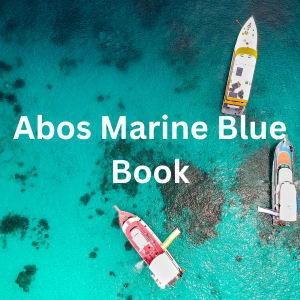
Abos Marine Blue Book: Ultimate Guide to Mastering Boat Valuation and More
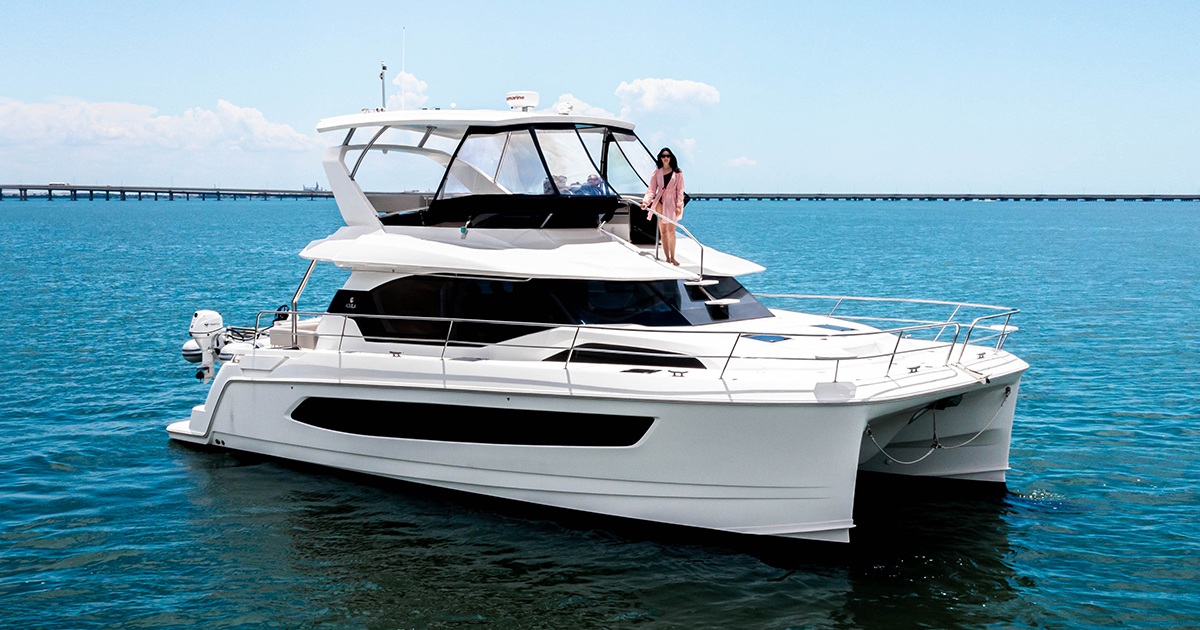
Aquila 44: Exploring the Luxury Power Catamaran Experience

Sailing Kayaks: A Complete Guide to Mastering the Waves

Bass Boat Central: A Comprehensive Overview of the Iconic Website

Jon Boat: Essentials, Maintenance, and Tips for Every Boat Owner

Sunworld Watersports Sarasota: Your Guide to Exciting Aquatic Adventures
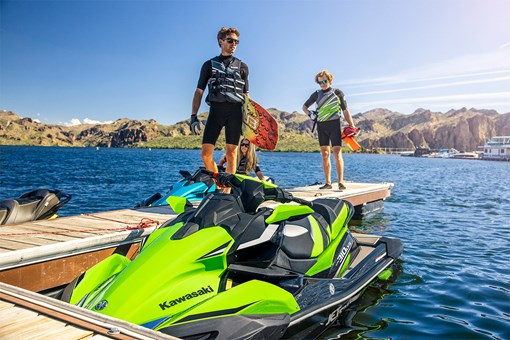
Jet Ski for Sale 2024: Ultimate Buying Guide and Top Models

Cobia Boats: An Insight on Performance and Accessibility
An official website of the United States government Here's how you know
Official websites use .gov A .gov website belongs to an official government organization in the United States.
Secure .gov websites use HTTPS A lock ( Lock A locked padlock ) or https:// means you’ve safely connected to the .gov website. Share sensitive information only on official, secure websites.
Maritime and Waterways
The Maritime Administration promotes the use of waterborne transportation and its seamless integration with other segments of the transportation system, and the viability of the U.S. merchant marine
Programs and Projects
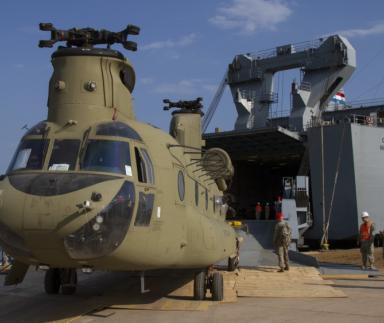
National Security and Emergency Response
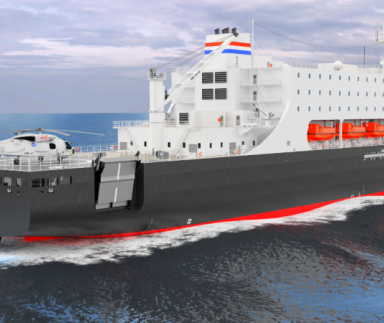
NSMV - National Security Multi-Mission Vessels
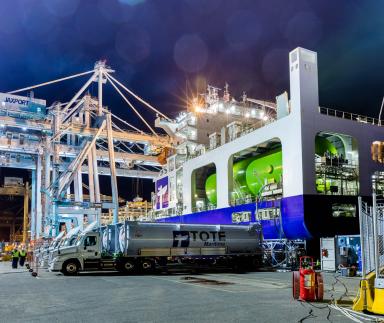
Economic Security and Maritime Trade
Other associated agencies, connect with marad.
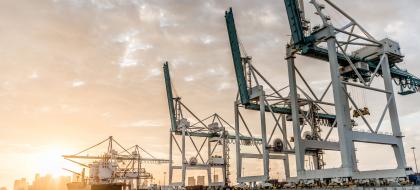
Learn more about how the Maritime Administration (MARAD) promotes the use of waterborne transportation by visiting its website.
Connect with the GLS
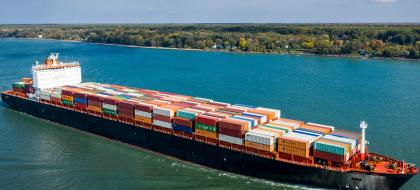
Learn more about how the Great Lakes St. Lawrence Seaway Development Corporation (GLS) improves the operation and maintenance of an efficient deep-draft waterway by visiting its website.
The Geography of Transport Systems
The spatial organization of transportation and mobility
5.4 – Maritime Transportation
Authors: dr. jean-paul rodrigue and dr. theo notteboom.
Maritime transportation concerns the movement of passengers and freight over water masses, from oceans to rivers.
1. Maritime Geography and Routes
From its modest origins as Egyptian coastal and river sailships around 3,200 BCE, maritime transportation has always been the dominant support of global trade. By 1,200 BCE, Egyptian ships traded as far as Sumatra, representing one of the longest maritime routes of that time. By the 10th century, Chinese merchants frequented the South China Sea and the Indian Ocean, establishing regional trade networks. During the same period, maritime trade routes between the Middle East and Asia were established, mainly under the control of Arab merchants. In the early 15th century, Admiral Zheng He led a large Chinese fleet of more than 300 vessels manned by a crew of 28,000 to conduct seven major expeditions, one of which reached the East African coast. However, China’s attempt to assert regional maritime dominance was short-lived. Such expeditions were not permitted to continue mainly because China perceived itself as a continental power with maritime trade of limited interest.
However, for other nations, the projection of maritime power became of strategic interest of vital economic importance. European colonial powers, mainly Spain, Portugal, England, the Netherlands, and France, were the first to establish a dependable global maritime trade network in the 16th century. Most maritime shipping activities focused around the Mediterranean, the northern Indian Ocean , Pacific Asia, and the North Atlantic , including the Caribbean. Thus, access to trade commodities remains historically and contemporarily the main driver in the setting of maritime networks.

With the development of the steam engine in the mid-19th century, trade networks expanded considerably as ships were no longer subject to dominant wind patterns. Accordingly, and in conjunction with the opening of the Suez Canal, the second half of the 19th century saw an intensification of maritime trade to and across the Pacific. In the 20th century, maritime transport grew exponentially as changes in international trade and seaborne trade became interrelated. Maritime transportation, like all transportation, is a derived demand that exists to support trade relations, which are influenced by the existing maritime shipping capacity and the changes in the composition of maritime shipping services . Thus, there is a level of reciprocity between trade and maritime shipping capabilities. As of 2018, seaborne trade accounted for 80% of global trade in volume and 70% in value. Maritime shipping is one of the most globalized industries in ownership and operations.
Maritime transportation, like land and air modes, operates on its own space, which is concomitantly geographical by its physical attributes, strategic by its control, and commercial by its usage. While geographical considerations tend to be constant in time (except for the seasonality of weather patterns), strategic and especially commercial considerations are much more dynamic. The physiography of maritime transportation is composed of two major elements, which are rivers and oceans. Although they are connected, each represents a specific domain of maritime circulation . The notion of maritime transportation rests on the existence of regular itineraries , better known as maritime routes.
Maritime routes . Corridors trying to avoid the discontinuities of land transport by linking ports. Maritime routes are a function of obligatory points of passage, physical constraints (coasts, winds, marine currents, depth, reefs, ice), and political borders. Maritime routes draw arcs on the ocean surface as they try to follow the great circle distance .
The most recent technological transformations affecting water transport have focused on modifying water channels , such as dredging port channels to deeper depths and expanding the capacity of transoceanic passages such as Panama and Suez. Increasing the size, automation, and specialization of vessels (e.g. container ships, tankers, bulk carriers) has also been the focus. This has required the development of massive port terminal facilities to support the technical requirements of maritime transportation. Maritime traffic has been adapting to increasing energy demand (mainly fossil fuels), the movements of raw materials, the location of major grain markets, and the growth in intermediate and finished goods trade. Yet, this process is not uniform, and various levels of connectivity to global shipping networks are being observed. The massification of transport into regular flows over long distances is not without consequences when accidents affecting oil tankers can lead to major ecological disasters (e.g. Amoco Cadiz, Exxon Valdez). The growing importance of container shipping is also associated with risks related to the immobilization of ship assets, such as the grounding of the Ever Given in the Suez Canal in 2021 .
Fluvial transportation, even if slow and inflexible, offers a high capacity and a continuous flow. The fluvial / land interface often relies less on transshipment infrastructures and is thus more permissive for the location of dependent activities. Ports are less relevant to fluvial transportation, but fluvial hub centers experience a growing integration with maritime and land transportation, notably with containerization. The degree of integration for fluvial transportation varies from totally isolated distribution systems to well-integrated ones. In regions well supplied by hydrographic networks, fluvial transportation can be a privileged mode of shipment between economic activities. In fact, several industrial regions have emerged along the major fluvial axis, as this mode was initially an important vector of industrialization. More recently, river-sea navigation provided a new dimension to fluvial transportation by establishing a direct interface between fluvial and maritime systems.

Most maritime circulation occurs along coastlines , and two continents have limited fluvial trade; Africa and Australia. Large fluvial waterway systems in North America, Europe, Southeast Asia, and China have significant fluvial circulation. Fluvial-maritime ships can go directly from fluvial to oceanic maritime networks. Despite regular services on selected fluvial arteries, such as the Yangtze, the potential of waterways for passenger transport remains limited to fluvial tourism (river cruises). Most major maritime infrastructures involve maintaining or modifying waterways to establish more direct routes (navigation channels and canals). This strategy is very expensive and undertaken only when necessary. Significant investments have been made to expand the transshipment capacities of ports, which is also very expensive as ports have a large footprint.
Not every region has direct access to the ocean and maritime transport. Maritime enclaves ( landlocked countries ) are such countries that have difficulties in undertaking maritime trade since they are not directly part of an oceanic domain of maritime circulation. This requires agreements with neighboring countries to access a port facility through a highway, a rail line, or a river. However, being landlocked does not necessarily imply exclusion from international trade, but substantially higher transport costs which may impair economic development. Further, being landlocked can be a relative concept since a coastal country could be considered relatively landlocked if its port system is insufficient to handle its maritime trade or if its importers or exporters are using a port in a third country. For instance, France has significant nautical accessibility, but the primary port handling containerized traffic is Antwerp in Belgium.
The importance and configuration of maritime routes have changed with economic development and technical improvements. Among those, containerization changed the configuration of freight routes with innovative services. Before containerization, loading or unloading a ship was a costly and time-consuming task, and a cargo ship typically spent more time docked than at sea. While sailing time represented around 25% of the annual ship time for standard break-bulk ships, this figure is now around 70% for containerships. With faster and cheaper port operations, inter-range routes have emerged as a dominant configuration of containerized maritime networks.
Inter-range service . Involves a set of sequential port calls from at least two maritime ranges, commonly including a transoceanic service and structured as a continuous loop. They are almost exclusively used for container transportation with the purpose of servicing a market by balancing the number of port calls and the frequency of services.
The main advantage of inter-range services is the ability to call several ports and increase the ship load factor. This sequence of ports tends to be highly flexible in terms of which ports are serviced to maximize the market potential. However, there is the risk of empty trips (particularly backhauls) and longer service times between distant port pairs along the route. The first inter-range route was set in 1962 by Sea-Land between the ports of New York (Newark facilities), Los Angeles, and Oakland using the Panama Canal. The return trip also included a stop in San Juan (Puerto Rico). The most extensive inter-range services are known as “round-the-world” routes, as major maritime ranges of the world are services along a continuous loop. Another recent trend has been the integration and specialization of several routes with feeder ships converging at major maritime intermediate hubs. This is notably the case for Europe (Mediterranean, North Sea, and the Baltic) in light of the negative impacts of deviations from main maritime shipping routes regarding service length and frequency of port calls.
2. Maritime Traffic
Before the era of intercontinental air transportation, long-distance passenger services were assumed by liner passenger ships , dominantly over the North Atlantic. Long-distance passenger movements are now a marginal leisure function solely serviced by cruise shipping in specific regional markets such as the Caribbean and the Mediterranean. Still, several oceanic ferry services operate over short distances, namely in Europe ( English Channel , Baltic Sea, Aegean), Japan, and Southeast Asia (Indonesia and the Philippines).
Maritime transportation is dominantly focused on freight since there is no other effective alternative to the long-distance transportation of large amounts of freight. The systematic growth of maritime freight traffic has been fueled by the following:
- Absolute advantages. They are linked with the geographical distribution of resources, implying that the places of extraction usually differ from the places of consumption. Therefore, large quantities of cargo need to be carried over long distances. The growth in mineral and energy trades , the dominant cargo carried by maritime shipping, is the outcome of conventional demands from developed countries and new demands from developing economies. For instance, coal is mainly used for energy generation and steel-making, activities that grew substantially in the developing world.
- Comparative advantages. Concerns cargoes that under ideal circumstances would likely not be carried. Substantial shipping is generated because of cost and capabilities differentials. Outsourcing, offshoring, and trade liberalization resulted in parts and finished goods being carried over long distances, supporting the growth in container shipping. This has been associated with a change in the balance of maritime trade flows , where developing economies have more extensive involvement. However, due to economic conditions, such cargo can be temporary and subject to changes in their origins and destinations.
- Technical improvements. Ships and maritime terminals have become more efficient in terms of their throughput and their ability to handle several types of cargoes (e.g. containers, natural gas, refrigerated goods), enabling them to support long-distance trade.
- Economies of scale. The growth in the size of ships permitted maritime transportation to become increasingly cost-effective, a trend that has been strengthened by containerization.

Maritime traffic is commonly measured in deadweight tons , which refers to the cargo that can be loaded on an “empty” ship without exceeding its operational design limits. This limit is often identified as a loadline, which is the maximal draft of the ship and does not account for the ship’s weight but includes fuel and ballast water. Maritime freight is conventionally considered in two main markets :
Bulk cargo . Refers to freight, both dry and liquid, that is not packaged, such as minerals (oil, coal, iron ore , bauxite) and grains. It often requires the use of specialized ships such as oil tankers as well as specialized transshipment and storage facilities. Conventionally, this cargo has a single origin, destination, and client and is prone to economies of scale. Services tend to be irregular, except for energy trades, and part of vertically integrated production processes (e.g. oil field to port to refinery). The dynamics of the bulk market are mainly attributed to industrialization and economic development, creating additional demand for resources and energy.
Break-bulk cargo . Refers to general cargo that has been packaged in some way with the use of bags, boxes, drums, and particularly containers. This cargo tends to have numerous origins, destinations, and clients. Before containerization, economies of scale were difficult to achieve with break-bulk cargo as loading and unloading were very labor and time-consuming. The dynamics of the breakbulk market are related to manufacturing and consumption.
The composition of maritime traffic has shifted from being dominated by liquid bulk (petroleum) to dry bulk and containers. Technical improvements tend to blur the distinction between bulk and break-bulk cargo, as both can be unitized on pallets and increasingly in containers . For instance, it is possible, and increasingly common, to ship grain and oil, both bulk cargoes, in a container. Consequently, the amount of containerized freight has grown substantially, from 9.8% of total tons-km in 2000 to 15.2% in 2021.
Geographically, maritime traffic has evolved considerably over the last decades, especially through growth in Asia-Europe and transpacific trade. By establishing commercial linkages between continents, maritime transport supports considerable traffic. The advantage of maritime transport does not rest on its speed, but on its capacity and on the continuity of its services. Railway and road transportation cannot support traffic at such a geographical scale and intensity. Heavy industrial activities that use bulk raw materials are generally adjacent to port sites , benefiting from load breaks. The average haul length was about 4,200 miles.
The global maritime shipping industry is serviced by about 55,000 registered commercial vessels of more than 1,000 tons falling into four broad categories:
- Passenger vessels historically played an essential role since they were the only mode available for long-distance transportation. In a contemporary setting, passenger vessels can be divided into two categories: passenger ferries , where people are carried across relatively small bodies of water (such as a river or a strait) in a shuttle-type service, and cruise ships, where passengers are taken on vacation trips of various duration, usually over several days. The former tend to be smaller and faster vessels. The latter are generally very large capacity ships having a full range of amenities. In 2019, about 27.5 million passengers were serviced by cruise ships, underlining an industry with much growth potential since it services several seasonal markets where the fleet is redeployed during the year. However, because of the COVID-19 pandemic, 2020 turned out to be the most disastrous year in cruise shipping history, with the number of passengers dropping to just above 7 million, a 75% drop in traffic.
- Bulk carriers are ships designed to carry specific commodities and are differentiated into liquid bulk and dry bulk vessels. They include the largest vessels afloat . The largest tankers, the Ultra Large Crude Carriers (ULCC) are up to 500,000 deadweight tons (dwt), with the more typical size being between 250,000 and 350,000 dwt; the largest dry bulk carriers are around 400,000 dwt, while the more typical size is between 100,000 and 150,000 dwt. The emergence of liquefied natural gas (LNG) technology enabled the maritime trade of natural gas with specialized ships .
- General cargo ships are vessels designed to carry non-bulk cargo. The traditional ships were less than 10,000 dwt, because of extremely slow loading and off-loading. Since the 1960s, these vessels have been replaced by container ships because they can be loaded more rapidly and efficiently, permitting a better application of the principle of economies of scale. Like any other ship class, larger containerships require larger drafts, with the current largest ships requiring a draft of 16 meters.
- Rol-on Roll-off (RORO) vessels are designed to allow cars, trucks, and trains to be loaded directly on board. Originally appearing as ferries, these vessels are used in deep-sea trades and are much larger than the typical ferry. The largest are car carriers that transport vehicles from assembly plants to the main markets. Their capacity is measured in the amount of parking space they can offer to the vehicles they carry, mostly measured in lane meters.
The distinctions in vessel types are further differentiated by the type of services on which they are deployed. Bulk ships tend to operate on a regular schedule between two ports or on a voyage basis to reflect fluctuations in demand. This demand may be seasonal, such as for grain transport, or niche, such as for project cargo (e.g. carrying construction material or windmills). General cargo vessels operate on liner services, in which the vessels are deployed on a regularly scheduled service between fixed ports of call, or as tramp ships, where the vessels have no schedule and move between ports based on cargo availability.

3. Maritime Shipping
The maritime shipping industry is one of the most globalized and is part of a life cycle that includes building, registration, operations, and the final scrapping of the ship. All these activities are substantially fragmented in their ownership and operations. Maritime shipping is dominated by bulk cargo , with dry bulk cargoes such as iron ore, coal, and grain roughly accounting for 28% of all the ton-miles shipped in 2021. Due to containerization, the share of break-bulk cargo is increasing steadily, which accounted for 15% of all ton-miles in 2021. Maritime shipping has traditionally faced two drawbacks in relation to other modes. First, it is slow , with speeds at sea averaging 15 knots for bulk ships (26 km/hr), although container ships are designed to sail at speeds above 20 knots (37 km/hr). Secondly, delays are encountered in ports where loading and unloading take place. The latter may involve several days of handling when break-bulk cargo is concerned. These drawbacks are particularly constrained where goods must be moved over short distances or shippers require rapid deliveries.
Maritime shipping has seen several major technical innovations aiming at improving the performance of ships or their access to port facilities, notably in the 20th century.
a. Ship size and speed
The last century has seen growth in the number of ships as well as their average size . Size is a common denominator for ships as it expresses type as well as capacity . Each time the size of a ship is doubled, its capacity is cubed (tripled). Although the minimum size for cost-effective bulk handling is estimated to be around 1,000 deadweight tons, economies of scale have pushed for larger ship sizes to service transportation demand. For ship owners, the rationale for larger ships implies reduced crew, fuel, berthing, insurance, and maintenance costs. The largest tankers (ULCC) are around 500,000 dwt (dominant size between 250,000 and 350,000 dwt), while the largest dry bulk carriers are around 350,000 dwt (dominant size between 100,000 and 150,000 dwt). For container shipping, the scale effect on ships has been an important driving force in the growth of its capacity. Each generation of containership comes with defined specifications and capacity ranges. Standards such as Panamax, Neo-Panamax, and Suezmax remain important factors in ship design, capacity and class . The remaining constraints on ship size are the capacity of ports, harbors, access channels, and canals to accommodate them.
The average speed of ships is about 15 knots (1 knot = 1 marine mile = 1,853 meters), which is 28 km per hour. Under such circumstances, a ship would travel about 575 km per day. More recent ships can travel between 25 to 30 knots (45 to 55 km per hour), but it is uncommon for a commercial ship to travel faster than 25 knots due to energy requirements. To cope with speed requirements, propulsion and engine technology have improved from sails to steam, diesel, gas turbines, and nuclear (only for military ships; civilian attempts were abandoned in the early 1980s). Since the invention of the helix, propulsion has improved considerably, notably by the usage of double helixes, but peaks were reached by the 1970s. Reaching higher maritime speeds remains a challenge that is excessively costly to overcome. As a result, limited improvements in commercial maritime speeds are foreseen. An emerging commercial practice, particularly in container shipping, concerns “ slow steaming “, where the operating speed is reduced to about 19-20 knots to reduce energy consumption.

b. Ship specialization and design
Economies of scale are often linked with market specialization and segmentation since many ships are designed to carry only one type of cargo . In maritime transportation, ships have a commercial openness in terms of the diversity of customers they can serve and a functional openness in terms of the diversity of cargo they can carry. In time, ships became increasingly specialized, including general cargo ships, tankers , grain carriers, barges , mineral carriers, bulk carriers, Liquefied Natural Gas (LNG) carriers, RO-RO ships (roll-on roll-off; for vehicles), and container ships .
Ship design significantly improved from wood hulls (before the 16th century) to wood hulls with steel armatures (18th century), to steel hulls (19th century; the first were warships), and to steel, aluminum, and composite materials hulls in the 20th and 21st centuries. The hulls of contemporary ships result from considerable efforts to minimize energy consumption and construction costs and improve safety. Depending on its complexity, a ship can take between 4 months (container and crude carriers) and one year to build (cruise ship).
Different automation technologies are possible, including self-unloading ships, computer-assisted navigation (crew needs are reduced, and safety is increased), global positioning systems, and Automatic Identification Systems (AIS). Automation has resulted in smaller crews being required to operate larger ships.

4. Maritime Economics
An important feature of the economics of shipping relates to its capital costs , which require financing. Because of their size, ships represent a significant capital outlay, which is associated with an impressive specialization of maritime actors involved in financing, operations, insurance, and even terms of the origin of seafarers. Cruise ships represent the most expensive class of vessels, with an Oasis Class cruise ship costing $1.2 billion. Still, even container ships of the largest class represent initial capital outlays of $190 million. The annual cost of servicing the purchase of these vessels represents the largest single item of operating expenditures, typically accounting for over half of the annual operating costs. Under these financial constraints, shipowners and operators seek to maximize the utilization of their ship assets by carefully considering the market in which they are deployed.
Container shipping requires the deployment of many vessels to maintain a regular service (14 ships in the case of a typical Far East – Europe service), which is a severe constraint on the entry of new players. On the other hand, older second-hand vessels may be purchased for much smaller amounts, and sometimes the purchase price can be easily covered by a few successful voyages. Therefore, in some regards, the shipping industry is quite open and historically has provided opportunities for entrepreneurs to accumulate vast fortunes. Many of the largest fleets are privately owned by individuals or family groups.
The main advantage of maritime transportation is its economies of scale , making it the cheapest per unit of all transport modes, which fits well for heavy industrial activities. On the other hand, maritime transportation has one of the highest entry costs in the transport sector. Typically, a ship has an economic life between 15 and 20 years and thus represents a significant investment that must be amortized. For instance, a Panamax containership can cost $50,000 per day to operate , with most of the expenses related to fuel and port charges. The operation of the maritime transport system requires financing that can come from two sources:
- Public . The public sector is commonly responsible for guidance infrastructures (beacons and charts), public piers, dredging, security, and in several cases, the administration of ports (under the umbrella of port authorities).
- Private . The private sector is mostly concerned with specific facilities such as piers, transshipment infrastructures, and ships, which are commonly owned by private maritime companies.
In the past, governments have often intervened in the maritime sector to fulfill different goals such as economic development, national defense, prestige, the balance of payments, and the protection of domestic industries (e.g. energy and steel). To reach these goals, governments relied on regulations, subsidies, national fleets, preference of cargo, and ports of entry. Cabotage regulations have been one of the privileged measures to protect the domestic maritime transportation industry.
Cabotage . Transport between two terminals located in the same country irrespective of the country in which the mode providing the service is registered. Cabotage is often subject to restrictions and regulations. Under such circumstances, each nation reserves for its national carriers the right to move domestic freight or passenger traffic.
Many cabotage laws were implemented, such as the Passenger Services Act of 1886, which restricted seaborne passenger travel in the United States. Further, the Merchant Marine (Jones) Act of 1920 implemented cabotage regulations for freight that could only be carried using US-registered ships. A similar situation applies in China, where cargo between domestic ports, including coastal ports, can only be carried by Chinese-flagged ships. The emergence of short-sea shipping has challenged this setting in recent years. Defining short-sea shipping is complex as it can involve different vessels (container feeder vessels, ferries, fast ships, etc..), tramp or liner operations, a variety of cargo handling techniques (horizontal, vertical, or a mixture of both), and different types of ports of loading or discharge. In an intermodal freight context, two major types of short-sea shipping can be distinguished:
- Feeder services from transshipment hubs to feeder ports and vice versa. These services can be arranged on a direct hub port to feeder port base or can follow a line bundling set-up with several feeder port calls per vessel rotation. They tend to use regular containerships, but of smaller size (often aptly named feeder ships).
- Cabotage services between ports of the same economic region, as within Europe or North America .

5. Shipping Services and Networks
A. internationalization.
The shipping industry is very international in character , particularly in ownership and country of registry. The ownership of ships is extensive. While a vessel may be owned by a Greek family or a Japanese corporation, it may be flagged under another nationality. There are two types of registers, national registers , and open registers , which are often labeled as flags of convenience. Open registers ( flags of convenience ) allow ship owners to obtain lower registration fees, lower operating costs, and fewer restrictions while meeting standards acceptable to shipping markets. The maritime industry is now more deregulated than before because of technical changes, mainly containerization and open registry ships operating under fiscal shelters. As of 2021, about 72% of the global tonnage was registered under a flag of convenience, with Panama and Liberia being the most prevalent. The maritime shipping industry offers two major types of services:
- Charter services (also known as Tramp). In this service, an ocean carrier rents a ship to a cargo owner for a specific purpose, commonly between a particular port of origin and destination. This type of shipping service is notably used in the case of bulk cargo, such as petroleum, iron ore, grain, or coal, often requiring specialized cargo ships that become the load unit (the entire contents of the ship are usually traded).
- Liner shipping services . It involves a regularly scheduled shipping service, often calling several ports along an inter-range route. The emergence of post-Panamax containerships has favored the setting of inter-range services since the maritime landbridge of Panama was no longer accessible to ship class until its expansion in 2016. To ensure schedule reliability, which rarely exceeds 50%, frequency, and a specific level of service (in terms of port calls), many ships can be allocated to a single route, taking different configurations. For instance, eight vessels must be allocated for an inter-range service between Europe and Pacific Asia and about five vessels for trans-Atlantic service to ensure a weekly port call. These maritime shipping services are available to any cargo owner, implying that the cargo carried on any given ship belongs to different corporate interests. A growing share of liner services is containerized.

b. From conferences to alliances
An important historic feature of oceanic liner transport is the operation of conferences , which were formal agreements between companies engaged in particular trading routes. They fixed the rates charged by the individual lines, operating, for example, between Northern Europe and the East Coast of North America, or eastbound between Northern Asia and the West Coast of North America. Over the years, in excess of 100 such conference arrangements have been established. While they may be seen as anti-competitive, the conference system escaped prosecution from national anti-trust agencies. This is because they were seen as a mechanism to stabilize rates in an inherently unstable industry, with significant variations in the supply of ship capacity and market demand. By fixing rates, exporters are given protection from price swings and guaranteed a regular level of service provision. Firms competed based on service provision rather than price.
A new form of inter-firm organization has emerged in the container shipping industry since the mid-1990s, and conferences have almost disappeared. Because the costs of providing ship capacity to markets are escalating beyond the means of many carriers, many of the largest shipping lines have formed strategic alliances . They offer joint services by pooling vessels on the main commercial routes and making capacity available among them. In this way, they can commit fewer ships to a particular service route and deploy the extra ships on other routes maintained outside the alliance. Alliance services are marketed separately and subject to intense competition, but operationally involve close cooperation in ports of call selection and in establishing schedules. Alliances, with a concentration of ownership , have led to significant developments in route alignments and economies of scale in container shipping.
The 20 largest carriers controlled 26% of the world slot capacity in 1980, 42% in 1992, 58% in 2003, 81% in 2013, and 90% in 2022. The concentration level is causing concerns among various national regulatory bodies that see such developments as potentially unfair competitive practices. For instance, in 2013, a large alliance dubbed P3 was being planned between the world’s three largest carriers, Maersk, MSC, and CMA CGM, to help mitigate overcapacity along several major trade routes, particularly between Asia and Europe. However, in 2014 the Chinese government rejected the alliance because it created an undue concentration level and the possibility of unfair competition with its state-owned carriers. Therefore, Maersk and MSC decided to form a smaller alliance called 2M, which began operations in 2015. Further, CMA CGM, China Shipping Container Lines, and United Arab Shipping Company (UASC) formed an alliance called Ocean Three, which became the Ocean Alliance in 2017 when COSCO joined. As of 2022, three major alliances (2M, Ocean Alliance, and The Alliance) controlled 83% of container shipping capacity. With the capacity shortages and rate increases related to demand surges following the COVID-19 pandemic, alliances were subject to additional scrutiny from regulating agencies such as the Federal Maritime Commission (United States) and the Directorate-General for Competition (European Union).
c. Shipping network configuration
Carriers are responsible for establishing and maintaining profitable routes in a competitive environment. This involves three major decisions about how such a maritime network takes shape:
- Frequency of service . Frequency is linked with more timely services since the same port will be called more often. A weekly call is considered to be the minimum level of service, but since a growing share of production is time-dependent, there is pressure from customers to have a higher frequency of service. A trade-off between the frequency and the capacity of service is commonly observed. This trade-off is often mitigated on routes that service significant markets since larger ships can be used with the benefits of economies of scale.
- Fleet and vessel size . Due to the basic maritime economics, large ships, such as post-Panamax containerships, offer significant advantages over long distances. Shipping lines will obviously try to use this advantage over their long-distance routes, keeping smaller ships for feeder services. In addition, a large enough number of vessels must be allocated to ensure a good frequency of service. Shippers also try to have ships of similar size along their long-distance inter-range routes to keep their operations consistent. This is not an easy undertaking since economies of scale force the introduction of ever-larger ships, which cannot be added all at once due to extensive financial requirements and the capacity of shipbuilders to provide them. So, each time a bigger ship is introduced on a regular route, the distribution system must adapt to this change in capacity.
- Number of port calls . A route that involves fewer port calls is likely to have lower average transit times and require fewer ships. Conversely, too few port calls could involve difficulties for the cargo to reach inland destinations remote from the serviced ports. This implies additional delays and potentially the loss of customers. An appropriate selection of port calls along a maritime facade will help ensure access to a vast commercial hinterland.
Since many container shipping services have an inter-range structure, cabotage imposes some restrictions on which port of entry can be used and if transshipment is necessary between a major deepsea service and a feeder service to small ports.
The global maritime transportation system has substantially evolved to form networks within networks , connecting circulation systems and enabling global trade. Without maritime shipping, globalization could not have taken place to such an extent in part because of the capacity of maritime shipping to carry large quantities of goods across distances.

Related Topics
- 6.3 – Port Terminals
- Interoceanic Passages (PEMP external link)
- Maritime Shipping and International Trade (PEMP external link)
Bibliography
- Brooks, M. (2000) Sea Change in Liner Shipping. New York: Pergamon.
- Couper, A.D. (1972) The Geography of Sea Transport, London: Hutchinson.
- Ducruet, C. (2016) Maritime Networks: Spatial Structures and Time Dynamics, London: Routledge.
- Ducruet, C. (ed) (2018) Advances in Shipping Data Analysis and Modeling: Tracking and Mapping Maritime Flows in the Age of Big Data, New York: Routledge.
- Ducruet, C. and T. Notteboom (2012) “The Worldwide Maritime Network of Container Shipping: Spatial Structure and Regional Dynamics”, Global Networks, Vol. 12, No. 3, pp. 395-423.
- Fremont, A. (2007) Le monde en boîtes. Conteurisation et mondialisation, Paris: Les collections de l’Inrets.
- Hansen, C.O. et al. (2016), “Arctic Shipping – Commercial Opportunities and Challenges”, CBS Maritime, Copenhagen.
- International Transportation Forum (2015) The Impact of Mega Ships: Case-Specific Policy Analysis., Paris: OECD.
- Levinson, M. (2006) The Box: How the Shipping Container Made the World Smaller and the World Economy Bigger, Princeton: Princeton University Press.
- Notteboom, T. and R. Konings (2004) “Network dynamics in container transport by barge”, Belgeo, Vol. 5, pp. 461-477.
- Notteboom, T. (2004) “Container Shipping and Ports: An Overview”, Review of Network Economics, Vol. 3, No.2, pp. 86-106.
- Notteboom, T. (2006) “The Time Factor in Liner Shipping Services”, Maritime Economics & Logistics, Vol. 8, pp. 19-39.
- Notteboom, T. (2013) “Maritime Transportation and Seaports”, in J-P Rodrigue, T. Notteboom and J. Shaw (eds) The Sage Handbook of Transport Studies, London: Sage.
- Notteboom, T. and J-P Rodrigue (2009) “The Future of Containerization: Perspectives from Maritime and Inland Freight Distribution”, Geojoural, Vol. 74, No. 1, pp. 7-22.
- Notteboom, T., A. Pallis and J-P Rodrigue (2022) Port Economics, Management and Policy, New York: Routledge.
- Rodrigue, J-P and T. Notteboom (2009) “The Geography of Containerization: Half a Century of Revolution, Adaptation and Diffusion”, Geojournal, Vol. 74, No. 1, pp. 1-5.
- Song, D-W and P.M. Panayides (2012) Maritime Logistics: Contemporary Issues. Wagon Lane, Bingley, UK: Emerald Group Publishing.
- Stopford, M. (2009) Maritime Economics, Third Edition, London: Routledge.
- Talley, W.K. (ed) (2012) The Blackwell Companion to Maritime Economics, New York: Wiley-Blackwell.
- UNCTAD (various years) Review of Maritime Transport, United Nations Conference on Trade and Development.
Share this:
Register to access Secure Tools, Applications and Reports to help simplify your business.
Union Pacific
Emergencies:
- UP Emergencies: 1-888-877-7267
- Communities
- MyUPRR Customer Sign In
Emergencies: 1-888-877-7267

From big ideas to the basics, your source for improved transportation performance.
Pros & Cons of Water Transport: Ship Speed, Shipment Visibility, More
Transporting goods by ship or barge is a cost-effective freight transportation mode. Learn the advantages and disadvantages of marine transport.
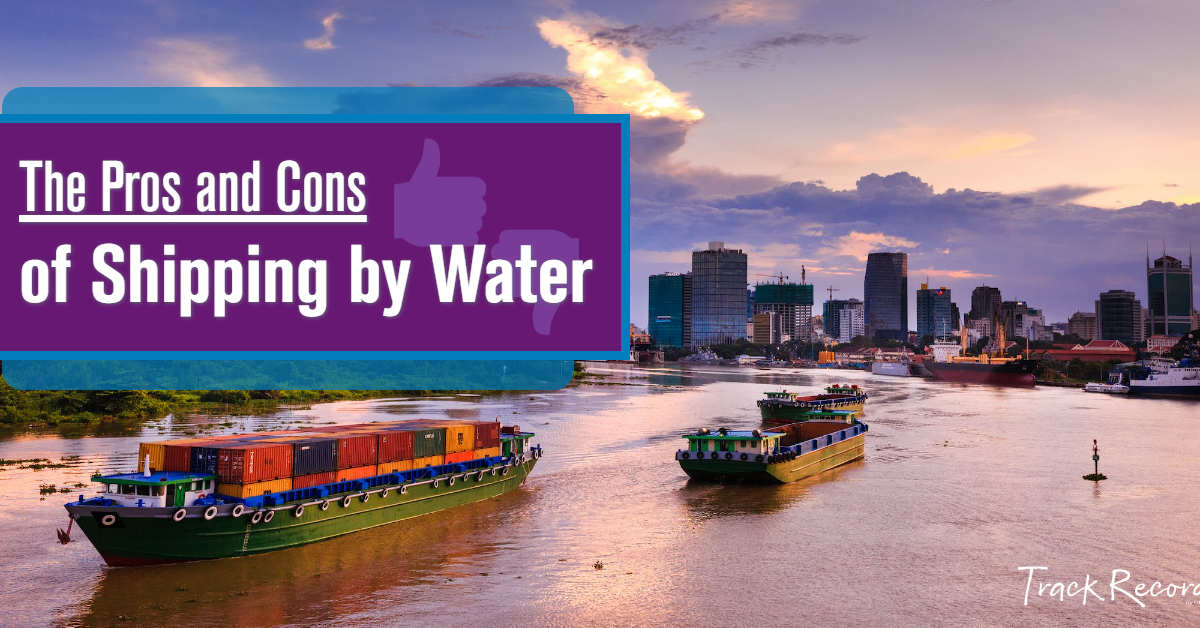
Shipping freight over the water comes with slow transit times but is also cost effective. See how it fares in other key categories... And don't miss the printable infographic and video .
In Part IV of our transportation mode comparison series, we look to the water. Boats, barges and cargo ships can navigate canals, rivers and oceans to move goods from point A to point B. Is water shipping right for your freight?
Water shipments often have slow transit times, but on the positive side of the water shipping equation are lower costs and environmental impacts. Is water transportation reliable? Will cargo owners know where their freight is on its shipping journey? Keep reading to get these answers and more.
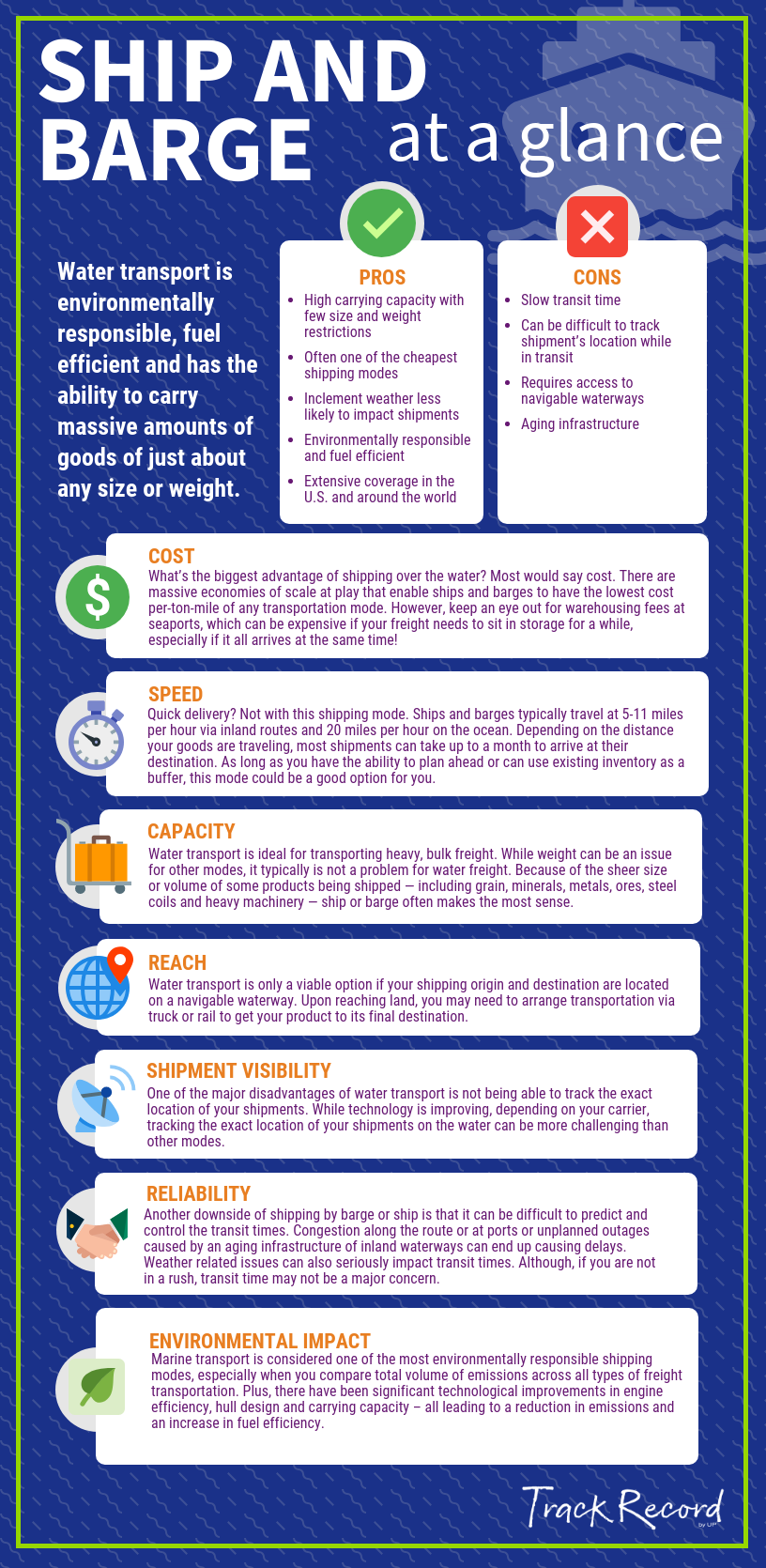
- Download a printer-friendly version of the Ship and Barge infographic
Shipping by Barge and Ship
Transporting goods by barge or ship is a great option for those looking to move bulk items at a low cost. While it is the slowest mode, water transport is environmentally responsible, fuel efficient and has the ability to carry massive amounts of goods of just about any size or weight. Is it right for you?
- High carrying capacity with few size and weight restrictions
- Often one of the cheapest shipping modes
- Inclement weather less likely to impact shipments
- Environmentally responsible and fuel efficient
- Extensive coverage in the U.S. and around the world
- Slow transit time
- Can be difficult to track shipment’s location while in transit
- Requires access to navigable waterways
- Aging water infrastructure
Cost What’s the biggest advantage of shipping over the water? Most would say shipping costs. Massive economies of scale come into play that enable container ships and barges to have the lowest cost per-ton-mile of any transportation mode. However, keep an eye out for warehousing fees at seaports, which can be expensive if your freight needs to sit in storage for a while, especially if it all arrives at the same time!
Speed Quick delivery? Not with this shipping mode. Ships and barges typically travel at 5-11 miles per hour via inland routes and 20 miles per hour on the ocean. Depending on the distance your goods are traveling, most water shipments can take up to a month to arrive at their destination. As long as you have the ability to plan ahead or can use existing inventory as a buffer, this mode could be a good option for you.
Capacity Water transport is ideal for transporting heavy, bulk freight. While weight can be an issue for other modes, it typically is not a problem for water freight. Because of the sheer size or volume of some products being shipped – including grain, minerals, metals, ores, steel coils and heavy machinery -- ship or barge often makes the most sense. To put things in perspective, an average single 15-barge tow is equivalent to the amount carried by approximately 225 rail cars or 870 tractor-trailer trucks.
Reach Water transport is only a viable option if your shipping origin and destination are located on a navigable waterway. Upon reaching land, you may need to arrange transportation via truck or rail to get your product to its final destination. Barges travel on large rivers, or inland waterways, and can transport goods from one city to the next. The inland waterways of the U.S. include more than 25,000 miles of navigable waters , many of them stemming from the Mississippi River. Container ships travel across the ocean carrying enormous amounts of standard shipping containers that can also move by truck or rail. Carrying approximately 90% of the world's manufactured goods , ships are key to international trade. You can bet that many household products and items of clothing you own have spent time in a container aboard a ship on its way to you.
Shipment Visibility One of the major disadvantages of water transport is not being able to track the exact location of your shipments. While technology is improving, depending on your carrier, tracking the exact location of your shipments on the water can be more challenging than other modes.
Reliability Another downside of shipping by barge or ship is that it can be difficult to predict and control the transit times due to unforeseen circumstances. Congestion along the route or at ports or unplanned outages caused by an aging infrastructure of inland waterways can end up causing delays. Although, if you are not in a rush, transit time may not be a major concern. Weather related issues can also seriously impact transit times. Periods of high water, low water or ice can negatively impact a barge’s ability to navigate inland waterways. Extreme weather events, like hurricanes and cyclones can also have a huge impact on ocean transit times and port operations.
Environmental Impact Marine transport is considered one of the most environmentally responsible shipping modes , especially when you compare total volume of emissions across all types of freight transportation. Plus, there have been significant technological improvements in engine efficiency, hull design and carrying capacity – all leading to a reduction in emissions and an increase in fuel efficiency.
Do you have questions about shipping your freight? Answer a few questions and an expert will be in touch.
Related Articles :
- Truck Shipping Pros and Cons
- Rail Shipping Pros and Cons
- Air Freight Pros and Cons
- Transportation Mode Comparison: Truck, Rail, Air & Water
VIDEO: Water Transport Pros and Cons
Subscribe to Track Record
Learn How Your Products Can Ship by Rail ❯
Connect with Track Record
TW FB Instagram YouTube
- About Track Record
Latest Stories

Insights 04 16 2024
Upcoming Webinar - Nearshoring: Best Practices for Shipping to and from Mexico
On Thursday, May 16 at 1:00 p.m. CT, Union Pacific is hosting a 1-hour webinar on nearshoring , a business strategy that involves companies shifting manufacturing and production operations to Mexico, closer to main markets in the U.S. If this is something you’re interested in, you can use this link to register .
Read Story >

Insights 03 27 2024
How to Ship Sustainable Aviation Fuel
In the next three decades, more than 35 billion gallons of sustainable aviation fuel (SAF) will be produced in the United States. It’s part of a government program, called the Sustainable Aviation Fuel (SAF) Grand Challenge , that is designed to help airlines decarbonize. The rise of renewable fuels , including SAF, makes it critical for producers and receivers to have a supply chain in place to meet upcoming fuel demand.

Insights 02 08 2024
The Rise of Sustainable Aviation Fuel
In 2022, the U.S. government shared the Sustainable Aviation Fuel (SAF) Grand Challenge . This government-wide approach works within the industry to reduce costs, enhance sustainability, and expand production to 3 billion gallons per year of domestic SAF. By 2030, the U.S. must achieve a minimum of a 50% reduction in life cycle greenhouse gas emissions (GHG) compared to conventional fuel. By 2050, 35 billion gallons of annual SAF production must be reached.
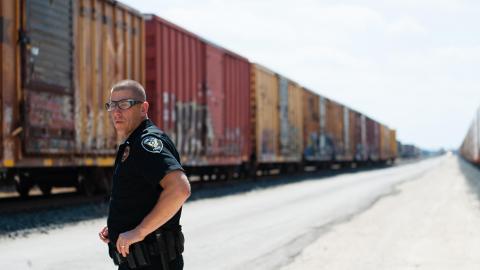
101 01 09 2024

How Railroad Special Agents Keep Customer Goods Safe

Fun 12 29 2023
Track Record’s Top Stories of 2023: Nos. 1-5
Last week, we shared the first half of the 10 most popular articles this year. Now, we’re revealing the fan favorites. Keep scrolling to read the Top 5 most-read articles of 2023.

Fun 12 20 2023
Track Record’s Top Stories of 2023: Nos. 6-10
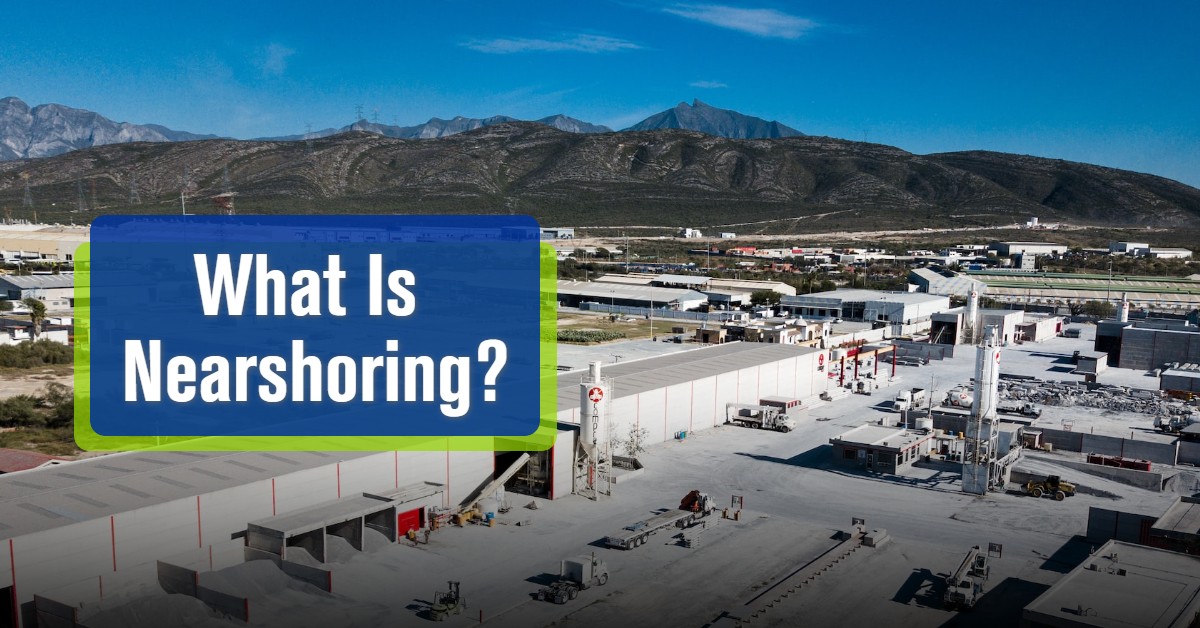
101 11 07 2023
What Is Nearshoring and How Does Transportation Support It?
In the 1990s, offshoring became a trend among U.S. companies. With more affordable labor available abroad (primarily in China), some entities relocated factories to lower production costs and increase profits. Offshoring relies on shipping those products back overseas for sale in the United States.
For decades, this model was working. Then came the pandemic, and the resulting supply chain disruptions (especially for overseas shipments) began to poke holes in offshoring strategies. With products stuck overseas sometimes for months on end, the drawbacks of offshoring started to outweigh the benefits.
Lessons learned from the last few years have prompted some companies to bring operations back to North America, specifically to Mexico. Establishing production facilities closer to end markets minimizes the impacts of potential supply chain disruptions while keeping costs in check. This is the genesis of the nearshoring trend.
Share This!

Section Menu
Track record.
- Elephango for Families
- Elephango for Schools
- Standards Search
- Family Sign-Up
Transportation: Water
Contributor: Samantha Penna. Lesson ID: 11670
Fish don't have feet, so they can't walk on land. You don't have fins, so you can't swim across the ocean! But there are many ways to travel over (and under!) water. Now watch them, then build a boat!
People and Their Environment
Lesson plan - get it.
- How do ducks and fish travel in water?
- Do you think people could travel in or on water without help?
Learn about some cool ways people travel on water!
- What does the word "transportation" mean?
Share your answers with your parent or teacher.
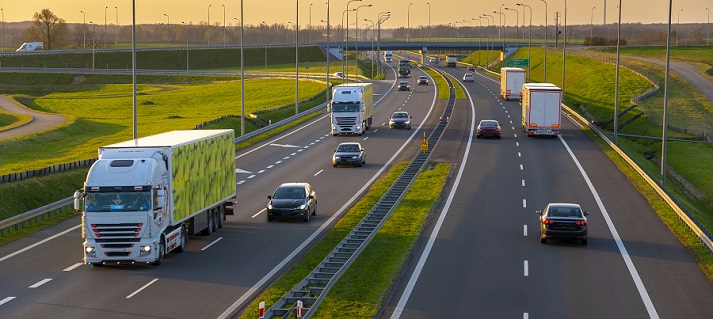
That's right! Cars, buses, motorcycles, mopeds, trains, and emergency vehicles are just some of the many ways people get around on land. Transportation is a way people get from place to place.
- What happens when people need to travel by water?
- What do they use?
Read on to find out about the different types of water transportation and how they help people get across bodies of water.
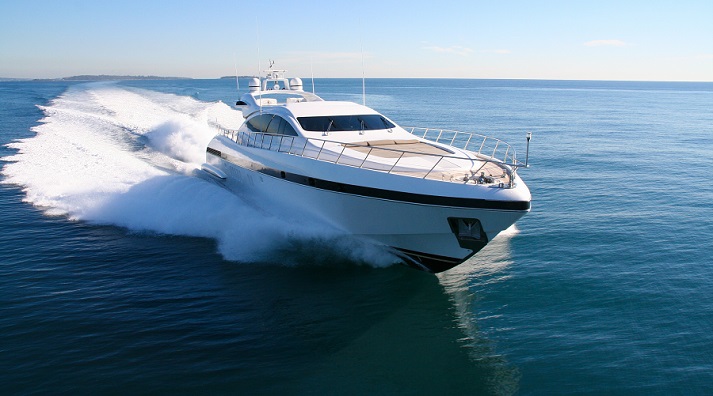
One way people travel across bodies of water is by using sailboats . Sailboats are boats with a special part called a sail . A sail almost looks like a large blanket. It's in the middle of the ship, and when a sail is up, it catches the wind. The wind pushes the boat from place to place.
The person driving the ship uses a steering wheel or moves the sail to guide the boat in the right direction. The sails can be turned to move the boat in a different direction. If the driver wants the boat to slow down or stop, he or she will simply put down the sails. If there's no sail to catch the wind, the boat will slow down or completely stop. Check out the sailboats below.
- Have you ever seen a sailboat before?
Share your answer with your parent or teacher:
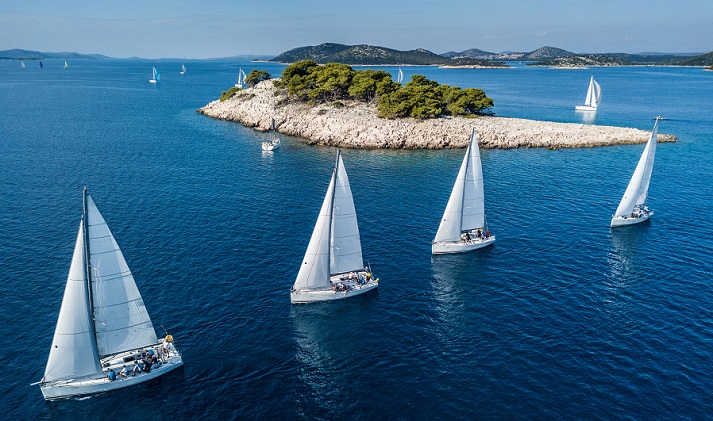
Ships are much bigger than sailboats. Ships usually have large engines that are used to power and move the ship. There are many different types of ships. Cargo ships transport goods like food, furniture, electronics, and much more over bodies of water. They can be seen with big carrying containers on the top.
- Can you see the cargo ship in the first image below?
Another type of ship is a cruise ship . This type of ship carries people from place to place. Generally, people on cruise ships are on vacation. These ships will bring them to tourist destinations all over the world!
- Can you see the cruise ship pictured in the second image?

People can also travel by submarine . Submarines can travel above or under water. Submarines are used by many different types of people. Sometimes they are driven by soldiers or scientists. Soldiers use submarines to monitor the water surrounding different countries. Scientists can use them to study underwater life.
- Did you know submarines have a special tool called a virtual periscope so the people on board can see what is above the water and in the air while the submarine is completely underwater?
Check out the cool submarines below:
- Wouldn't it be cool to experience different ways people use transportation to get from place to place in the water?
- What are at least two examples of ways people get around in the water?
Share your answer with your parent or teacher, then move on to the Got It? section.

Resources and Extras
- kitchen sponge (small rectangle)
- drinking straw
- hole puncher
Additional Resources
- Transportation: Land
- Transportation: Air
Suggested Lessons

Getting to Know Greek Gods: Remember the Titans
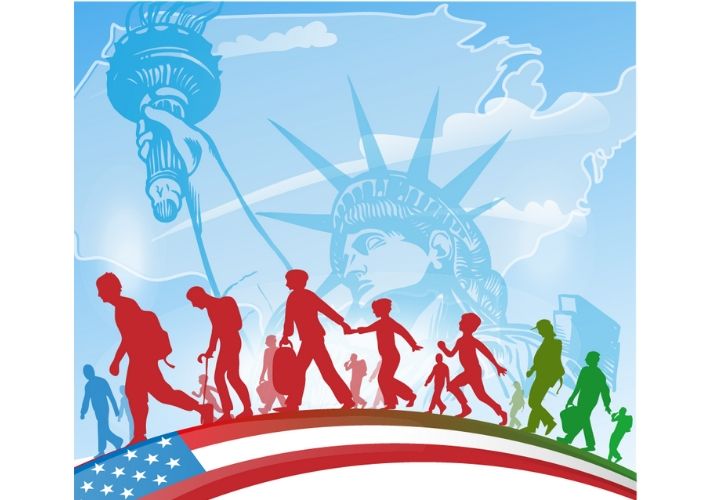
Immigration Today: An Overview

Rise of Napoleon

Hammurabi Versus Gandhi
A green ‘sea change’ as water transport makes its move
In just a few months’ time, passengers in Stavanger, Norway, will be able to begin commuting on a revolutionary ferry that doesn’t produce any greenhouse gas emissions. Called Medstraum, which means both “to go with the flow” and “with electricity” in Norwegian, it will be the first high-speed vessel in the world that runs purely on electric power, replacing a diesel-powered ferry that currently shuttles people to surrounding islands.
If the trial goes well, similar vessels could soon operate in other cities too. ‘We’re in a very exciting period,’ said Mikal Dahle, a project manager at public transport company Kolumbus AS in Stavanger, Norway, and coordinator of the TrAM project which is developing the catamaran ferry. ‘We are now finalising the vessel and getting it ready.’
Medstraum is an example of the new and sustainable modes of transport set to transform urban mobility. In the EU, emissions from transport account for about 25% of total greenhouse gas emissions and are the main cause of air pollution in cities.
Furthermore, most people use roads to get around in urban areas where traffic jams have become a huge problem and cost an estimated €110 billion a year in Europe. ‘Waterways are underused for the time being and could be a great alternative,’ said Virginie Seurat, the VP at Seabubbles, a company developing a hydrogen-powered boat.
Our waterborne travel also needs to get a lot greener to meet the EU’s goal of reducing transport-related emissions by 90 % by 2050 . Existing high-speed craft, for example, are typically powered by fossil fuels and produce significant amounts of emissions.
‘It's much more polluting to travel with (conventional) fast ferries compared to aeroplanes,’ noted Dahle. ‘A proper reduction in CO2 emissions is one of the main challenges for inshore vessels.’
Rethinking electric boat production
“ It's much more polluting to travel with (conventional) fast ferries compared to aeroplanes. A proper reduction in CO2 emissions is one of the main challenges for inshore vessels. Mikal Dahle, Project Manager at public transport company Kolumbus AS in Stavanger, Norway
Dahle and his colleagues in the TrAM project are tackling this challenge with a novel design and production method for zero-emission electric vessels operating in coastal waters and inland waterways. Cost is still a barrier since these vessels are more expensive to build compared to those powered by diesel fuel, but the new approach should make them more affordable.
‘The goal is to establish and validate a methodology for the design and production of (electric) craft that reduces the overall cost by 25%,’ said Dahle. ‘We want to make it possible for a large market to invest in zero-emission vessels.’
Their new approach is based on modularisation, where a boat is divided into different functional parts, such as the hull and passenger section, which are in turn subdivided into individual components, like the batteries and electrical equipment in the energy module.
The idea is that a new vessel could be designed and built by piecing together pre-existing modules instead of starting from scratch, making the process more efficient and cost-effective. ‘Some (parts) are standardised, like the seats in the vessel, so we can pick out exactly what we need for a boat at relatively low cost since they are produced in certain volumes,’ explained Dahle. ‘Then we have other things that need to be adjusted for each vessel like the hull shape and the motors.’
Setting sail for new electric vessels
Medstraum is the first vessel being created using this approach, and aims to demonstrate its feasibility. Built from lightweight aluminium to reduce energy consumption will also allow the vessel to be easily recycled after use and contribute to the circular economy. The vessel will be able to carry around 150 passengers at speeds of up to 42 km/h and will make 16 round trips per day. The ferry’s electric battery will be charged each time it stops at Stavanger.
Dahle and his colleagues will use the same approach to develop two other boats. One will be designed to transport either passengers or goods on the River Thames in London, while the other will be used on inland waterways in Belgium and will therefore need to be adapted for different purposes and environments. The London craft will be required to travel at a higher speed and have a larger capacity than the Stavanger vessel, for example, while the boat to be used in Belgium will need to meet different rules and regulations.
A ‘flying’ boat powered by hydrogen
City commuters could also soon use a ‘flying’ water taxi to get around thanks to another team aiming to lower the environmental impact of water transport. Seurat’s colleagues have developed the first zero-emission hydrofoil craft that glides above waves powered by a hydrogen fuel cell and battery as part of the Seabubbles project .
‘The idea is to offer citizens new solutions that are a step forward in terms of a green way of life,’ said Baptiste Arribe, the strategy director at Seabubbles in Annecy, France.
The futuristic-looking craft, which is made of composite fibres, can operate in two different modes and has been developed for waterways, lakes and marine zones. When travelling at less than 12 km/h, its hydrofoils are retracted and it navigates like a conventional vessel. However, at higher speeds its foils are deployed and the hull is lifted 60 centimetres above the water’s surface, which results in a smooth ride even in choppy waters. ‘People are excited about the passenger experience because there are zero waves and no noise,’ said Seurat.
The ‘flying’ mode has environmental advantages too. It uses 35% less energy compared to the conventional mode since gliding on the foils reduces the surface area of the boat immersed in water and hence the amount of friction.
“ The idea is to offer new solutions to citizens that are a step forward in terms of a green way of life. Baptiste Arribe, Strategy Director at Seabubbles in Annecy, France
Charging versus refuelling
When they developed the prototype, the team initially planned to power the craft with electricity produced from solar panels and hydropower. But they later decided to switch to hydrogen power since a boat could travel further on a full tank of the gas compared to a single charge. It would also take less time to refuel; a hydrogen top-up that takes just a few minutes allows the boat to run for about two and a half hours.
While the latest Seabubble boat still runs on electricity, it is generated by a hydrogen fuel cell. It also contains a battery that is charged by the fuel cell when the craft is cruising to provide extra power when needed, for example during acceleration. Artificial intelligence is used to optimise the use of energy between the battery and fuel cell to make the boat as energy efficient as possible. ‘We combine the avant-garde in energy and (the latest) technology with our control system,’ Seurat explained.
Constructing the first Seabubbles
The first Seabubble boats are currently being assembled at a shipyard on the shores of Lake Annecy in France. They will be available to European buyers in a few months’ time and later to the international market.
Able to carry up to 12 passengers, the vessels are of particular interest to private services for use as a shuttle for hotels located on the waterfront or as a quiet craft to take visitors around a nature reserve without disturbing wildlife.
While these vessels could also be used for public transport, cost remains a barrier. However, the EU’s commitment to supporting the large-scale deployment of clean hydrogen technologies by 2030 should make it easier to implement Seabubbles more widely. ‘In the beginning, we need the support of governments to create the overall hydrogen infrastructure,’ concluded Seurat. ‘Then everything will come together, and I think we will change the mobility field.’
The research in this article was funded by the EU. If you liked this article, please consider sharing it on social media.
Recommended for you

Share this page
Contact Horizon

From Canoes to Cruise Ships: A Journey Through the Types of Water Transport

Different types of water transport exist as part of the overall transportation industry. This article explains what these different types of water transportation are and how they work.
What is water transport?
Water transport is any type of transport vehicle used primarily for the movement of water. There are different types of water transport used for both cargo and passengers traveling on different waterways. We will discuss the different types of Water Transport in detail below.
Boats
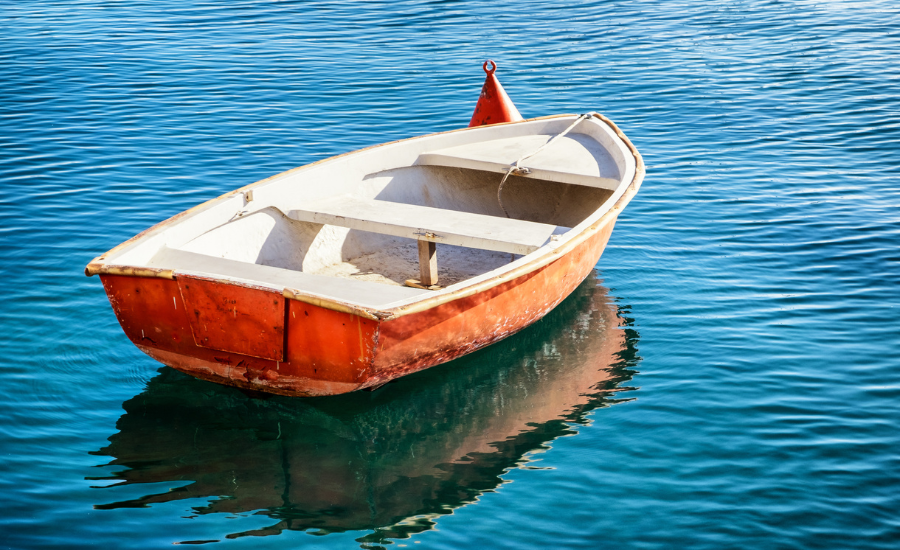
One of the most important means of transportation on the water is the boat. This is the types of Water Transport you are most likely to use to travel on water, whether it’s in a canal or in the middle of the ocean. But, of course, there are many different types of ships. Generally, boats can be divided into three categories:
- Human and Non-Human
- Powered Boats
- Sailing Boats
- Motor Boats
Each category contains many boats, each serving a different purpose.
Deck Boats
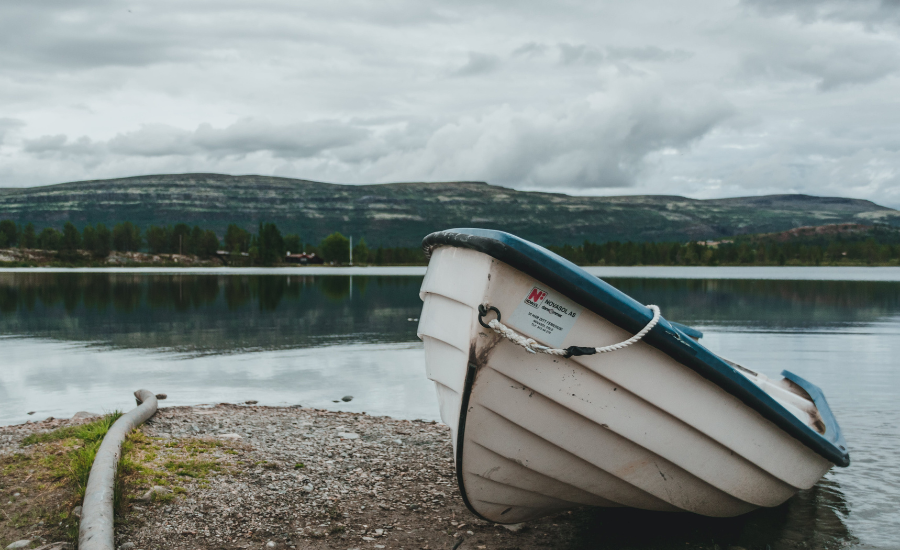
These boats, as the name suggests, have a deck area. They are usually small, have seating areas for groups, and are used primarily for leisure and sightseeing or as boats that enter the water for swimming and other water sports. These boats with V-shaped hulls are typically 25 to 35 feet long.
Catamaran Types of Water Transport

A catamaran is a type of Water Transport with two hulls. Although they are generally small boats used for fishing and cruising, they are also known to be used as car ferries due to their stability.
Houseboat Types of water transportation

As the name suggests, it is a boat where people live. They are typically moored in one place while floating and are not motorized. Often, they are built to look more like a house than a boat, but some definitely retain the boat style. They are usually found on canals and large lakes, and many people live on houseboats year-round. It is also rented to tourists looking for something different.
Runabout Boats Types of Water Transportation
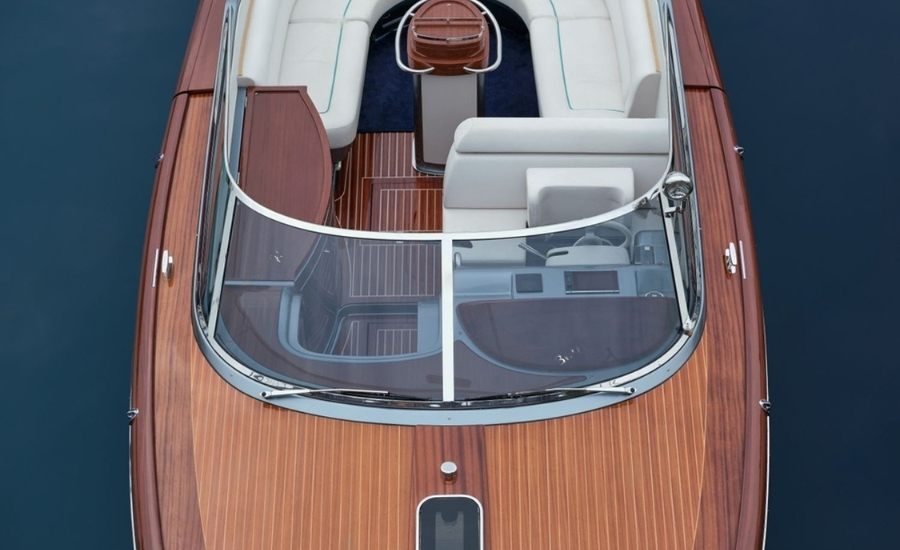
These small open boats are entry-level boats used for recreational boating and sporting activities. There is a steering wheel and a small control panel.
Lifeboat Types of Water Transport
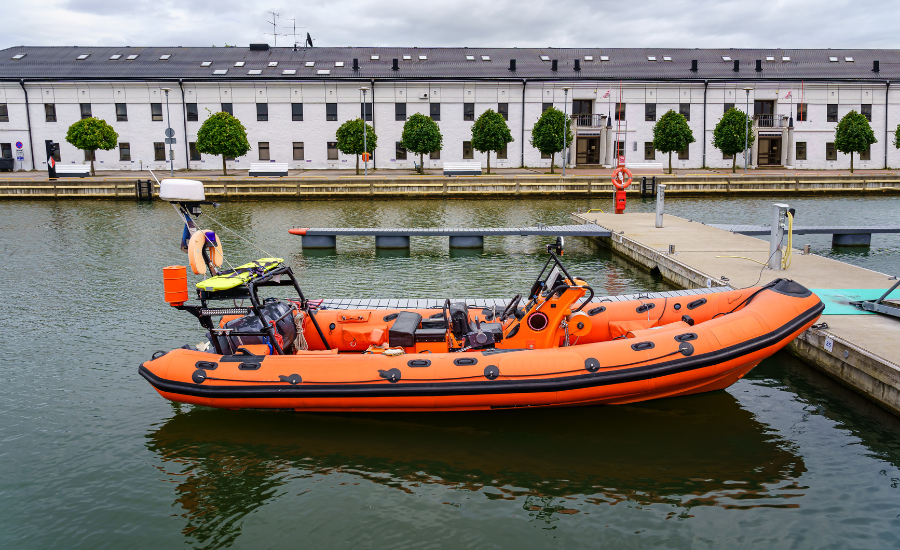
A lifeboat is a little rigid or inflatable boat, usually attached to a larger boat or ship and used for sea rescue when necessary. By law, ships must carry as many lifeboats as there are people on board.
Pontoon Boat Type of Water Transport
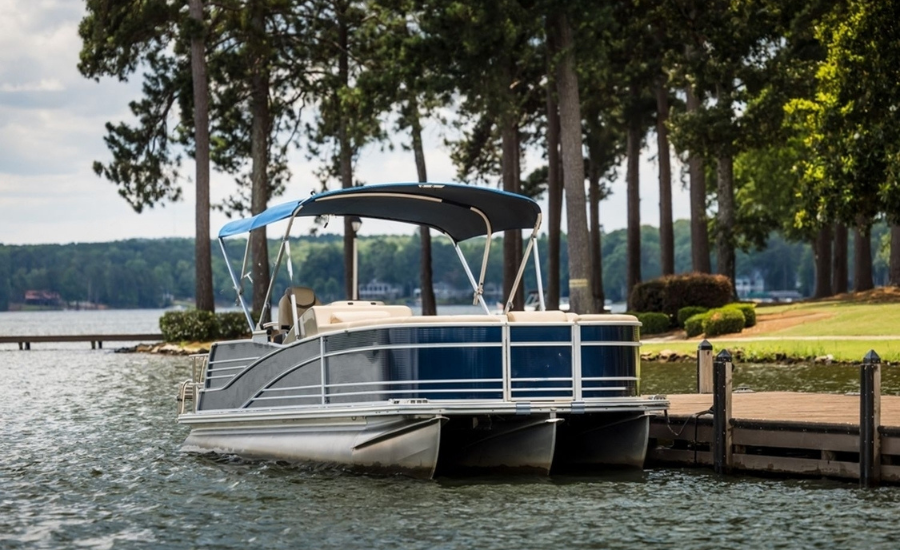
This type of boat is primarily used in inland waters and is very stable due to its wide, flat shape. They float on water using tubes called pontoons. It has stylish seating and is used for sightseeing and fishing.
Barge Types of Water Transport

A barge is a type of water transport on canals and is often referred to as a canal boat. They are long, flat-bottomed and used to transport cargo or as passenger vessels for pleasure. The interior includes a bed, kitchen and seating area.
Airboat Types of Water Transportation

An airboat is a small, flat-bottomed boat powered by an airplane-type propeller. They are used for tourism and fishing purposes, especially in wetlands and shallow waters, such as the Florida Everglades.
Felucca Types of water transport

These are currently used primarily for tourist purposes, especially on the Nile. It is a wooden sailing ship built in the Eastern Mediterranean, with a capacity of about ten passengers and a crew of 2-3. Hovercraft Types of Water Transportation Hovercraft is one of the few types of water transportation that can also travel on land, mud, and ice. A special fan is used to generate a large volume of air under the hull at slightly above atmospheric pressure, which allows the ship to rise and allow it to move. They have many uses.
Kayak Type of water transportation

This is a small, narrow boat propelled by paddles on each side. Most often used for recreational purposes in small bodies of water.
Liner Types of Water Transport

A liner is an emergency vessel designed to transport cargo and passengers over long distances from point A to point B, usually without stopping unless needed to refuel. It’s a big boat. It is no longer commonly used, and flight is now the best option. RMS Queen Mary 2 is the ocean liner still in regular service and making frequent transatlantic voyages.
Yacht Types of Water Transportation
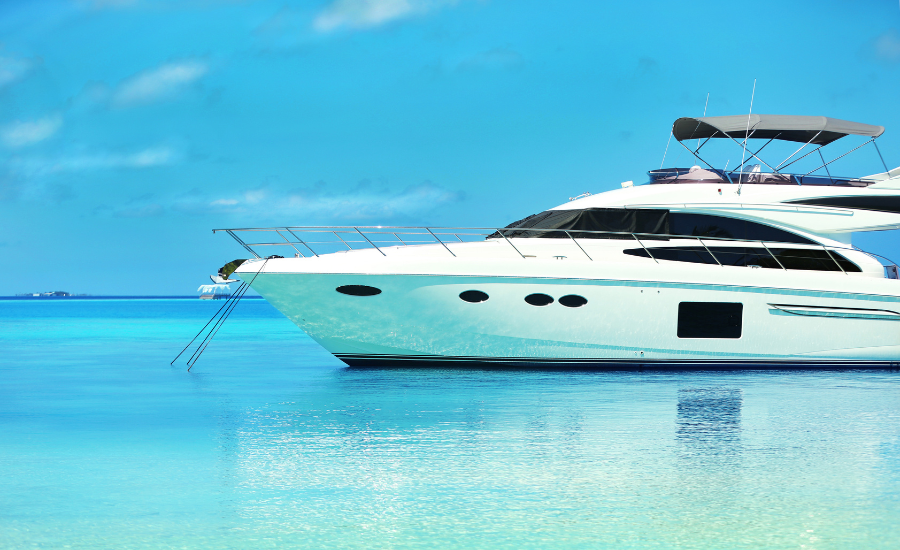
There is no standard definition of a yacht, but it is generally over 33 feet in length, has accommodation, is used for entertainment, and is usually the height of luxury. Yachts are typically moored in locations such as Puerto Banus, Marbella and Cannes, France. People often find celebrity yachts and do activities on them.
Ferry Types of Water Transport
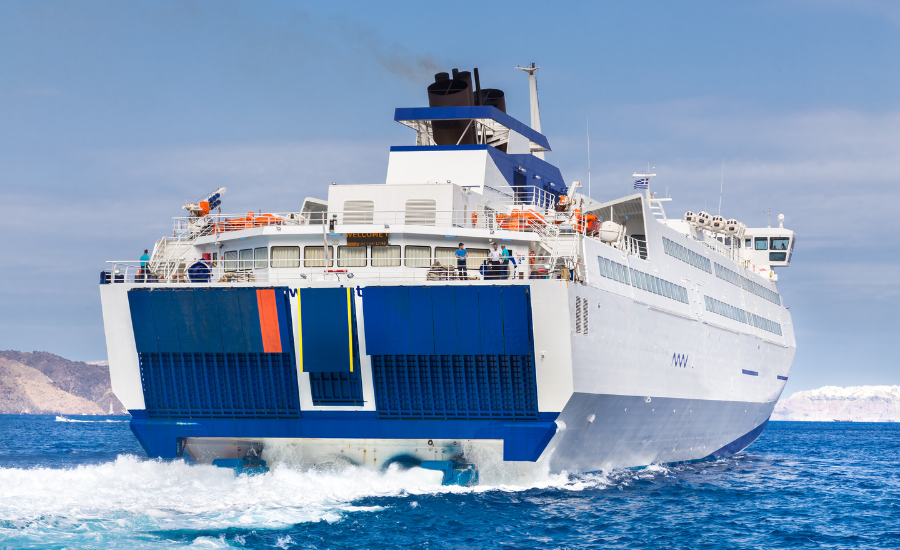
A ferry is a type of boat commonly used to transport passengers over short distances between her A. These are used for public transport in coastal cities, such as Venice ferries and Liverpool’s ‘Ferry Across the Mersey.’ For example, there are ferries that travel long distances from England to France, and cars are also available. These usually have more facilities on board, such as sleeping quarters, a restaurant or bar, and a small movie theatre.
Punt Types of Water Transport
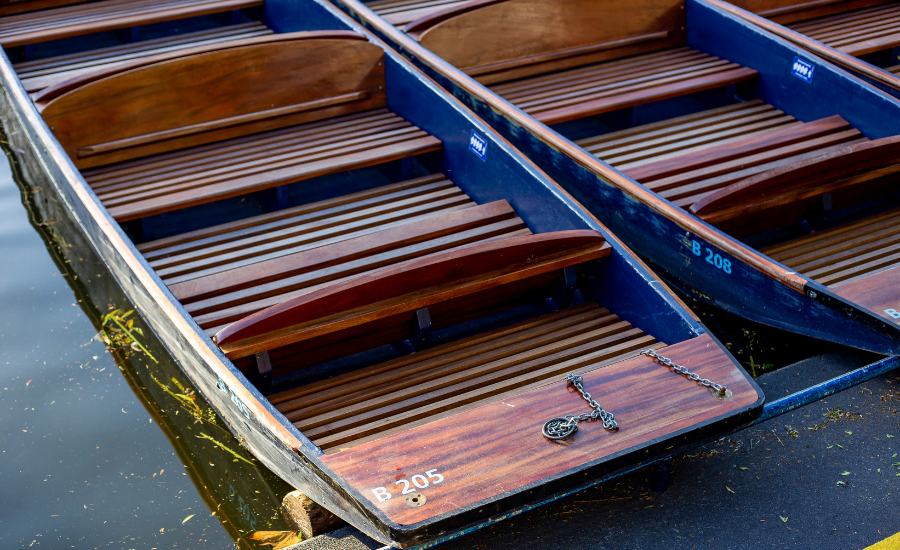
This type of boat is small, flat-bottomed, and has a square-cut bow.
The drive is via rods pressed against the river bed. The person who does this is called a “punter” and sits at the back of the boat. Punts are primarily used for recreational purposes.
Rigid Inflatable Boats Types of Water Transport

Also known as RIBs, these small boats are, as the name suggests, rigid and inflatable. It’s lightweight, has a large capacity, and won’t sink. RIBs are commonly used as work boats. However, they are also used by recreational divers to reach dive sites in areas that cannot be reached by larger boats for some reason. They move fast.
Dinghy Types of Water Transportation
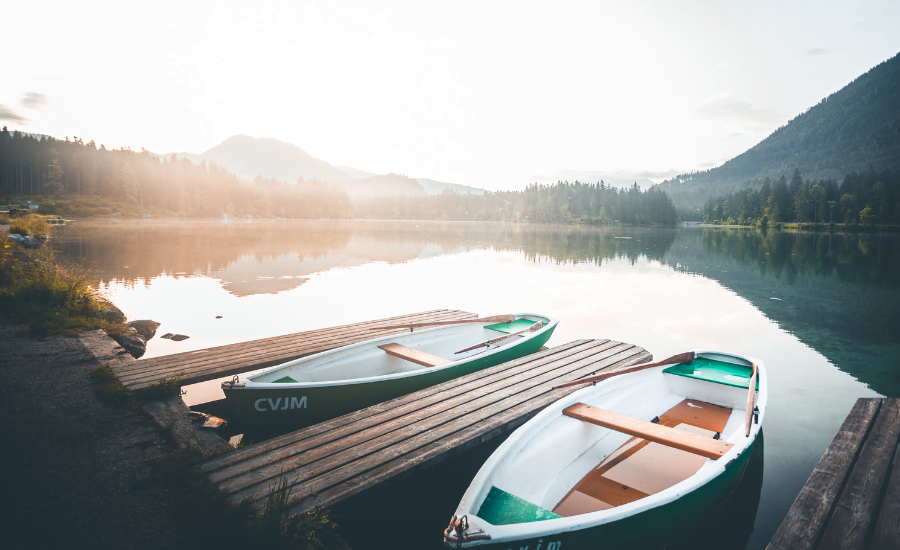
Dinghies are one of the most convenient types of water transportation, as they are used to transport people and goods from large vessels to docks where there is not enough space to berth the vessel itself. One.
Water Taxi Types of Water Transportation
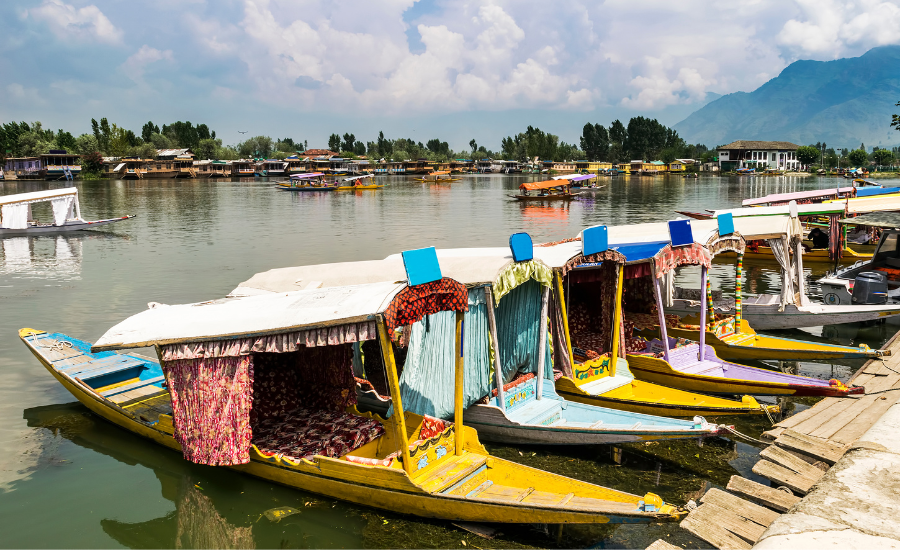
Water taxis are used to transport people from one point to another, similar to public land transportation. Visit several stops. Water taxis are also used by commuters and tourists. It can be found in cities such as Venice, Liverpool, Brussels, Istanbul, New Orleans, and Budapest.
Other types of water transport
There are other types of water transport that are not strictly boats or are not called as such. This could be too large or too small for that category or simply work in a completely different way.
Ships Types of water transport

A ship is a large watercraft designed to travel across the ocean. Vessels generally must be at least 95 feet in length. They can usually stay at sea much longer than ships, and as the saying goes, ships can carry ships, but not ships. That being said, the terms “ship” and “boat” do not have clear legal definitions.
There are many types of ships.
Including, but not limited to, High-Speed Vessel
- Offshore Oil Vessel
- Electric Trawler
- Factory Vessel
- Cable Layer
- Cry Cargo Vessel
- Liquid Cargo Vessel
- Passenger Carrier 4
- Special Vessel 44 44
- Warship Aircraft Carrier
- Minesweeper Deep Sea
- Research Vessel
- Cruise Ship
- Types of Water Transport
One of the most famous and exciting types of water transport is the cruise ship. These are clearly classified as ships, passenger vessels designed for extended stays at sea. Unlike regular ships, they call at multiple ports as part of their round trip. The ship features a variety of amenities, including cabins, restaurants, theatres, shops, cinemas, bars, nightclubs, tattoo shops, water slides, go-kart tracks, and more. Not all cruise ships have all of these things, but this is just one example of how great cruise ships can be. For more information about cruises, please see my article “Her 8 Types of Most Important Cruises”.
Surfboard Types of Water Transportation
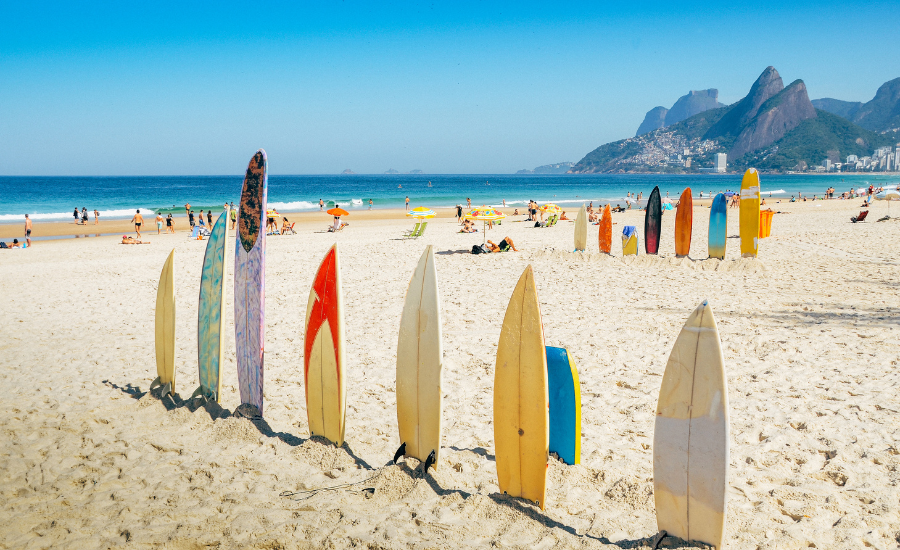
Surfboards are difficult to classify as a type of water transportation, but even though they are not commonly used to get from point A to point B, many are listed in some way as a mode of transportation on the website. A surfboard is a narrow board used by surfers to enjoy riding waves. Watercraft PWC, also known as jet ski, is actually a brand name (owned by Kawasaki) that has become synonymous with this type of vessel. These boats are different in that you stand or sit on the boat rather than riding on it. Mainly used for relaxation. But because of their speed, they are also used by law enforcement agencies, and PWC fishing is a rapidly growing industry.
Submarine Types of Water Transport
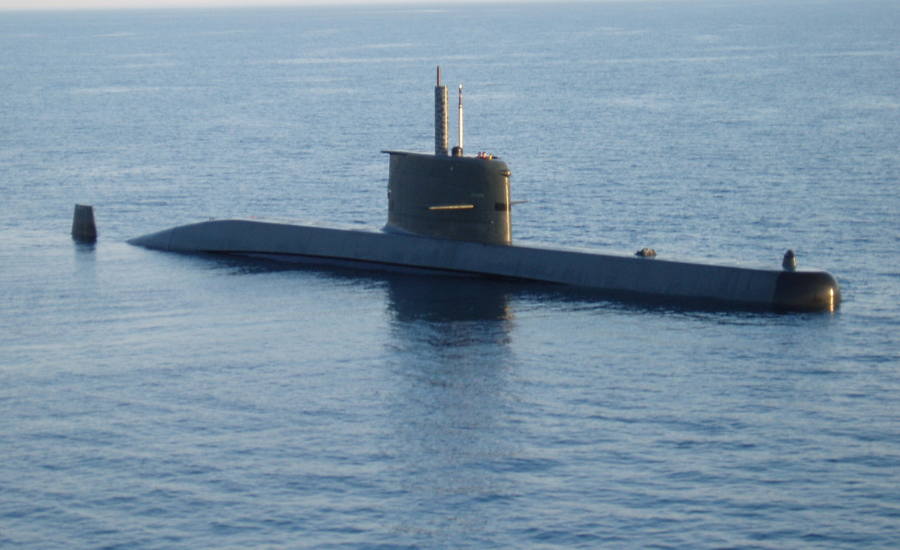
The last type of water transport is the submarine. These vessels are used for underwater exploration. She can be a small two-person submarine that can stay underwater for several hours or a huge submarine that can stay underwater for up to six months. These ships can penetrate much deeper than human divers, allowing for discovery and surface warfare.
useful links
Mni social links.
Water Transport and Tourism
- First Online: 01 January 2023
Cite this chapter

- M. R. Dileep 10 &
- Francesca Pagliara ORCID: orcid.org/0000-0001-6332-6313 11
Part of the book series: Advances in Spatial Science ((ADVSPATIAL))
444 Accesses
1 Citations
Waterborne transport, which refers to the transportation of people or cargo via waterways, is a significant component of tourism. Water tourism represents the use of different types of sailing equipment and appliances for transportation and recreation purposes by visitors. Whether used to transport cargo or passengers, water transport is vital to the successful operations of tourism in many destinations. Water transport is one of the oldest types of transport and has been widely used throughout history.
This is a preview of subscription content, log in via an institution to check access.
Access this chapter
- Available as EPUB and PDF
- Read on any device
- Instant download
- Own it forever
- Compact, lightweight edition
- Dispatched in 3 to 5 business days
- Free shipping worldwide - see info
- Durable hardcover edition
Tax calculation will be finalised at checkout
Purchases are for personal use only
Institutional subscriptions
Arlt, W.G., & Feng, G. (2009). The Yangzi River tourism zone. In B. Prideaux & M. Cooper (Eds.), River tourism . Oxfordshire: CABI, pp. 117–130.
Chapter Google Scholar
Armstrong, J., & Williams, M.D. (2005). The steamboat and popular tourism. The Journal of Transport History , 26(1), 61–77. https://doi.org/10.7227/TJTH.26.1.4
Article Google Scholar
Baird, A.J. (2009). A comparative study of the ferry industry in Japan and the UK. Transport Reviews , 19(1). https://doi.org/10.1080/014416499295664
Barron, P., & Greenwood, A.B. (2006). Issues determining the development of cruise itineraries: A focus on the luxury market. Tourism in Marine Environments , 3(2), 89–99. https://doi.org/10.3727/154427306779435238
Berger, A.A. (2004). Ocean travel and cruising: A cultural analysis. New York, NY: Haworth Hospitality Press.
Google Scholar
Bosnic, I., & Gasic, I. (2019, July 15–16). River cruise industry: Trends and challenges, economic and social development—Book of Proceedings . Varazdin.
Bowen, C., Fidgeon, P., & Page, S. J. (2014). Maritime tourism and terrorism: Customer perceptions of the potential terrorist threat to cruise shipping. Current Issues in Tourism , 17(7), 610–639.
Bowles, B.O.L., Kaaristo, M., & Rogelja Caf, N. (2019). Dwelling on and with water—Materialities, (im)mobilities and meanings: Introduction to the special issue. Anthropological Notebooks , 25(2), 5–12.
Brida, G.J., & Zapata, S. (2010). Economic impacts of cruise tourism: The case of Costa Rica. Anatolia: An International Journal of Tourism and Hospitality Research , 21(2), 322–338. https://doi.org/10.1080/13032917.2010.9687106
Brida, J.G., & Risso, W.A. (2010). Cruise passengers expenditure analysis and probability of repeat visits to Costa Rica: A cross section data analysis. Tourism Anal , 15, 425–434.
Calstockferry.co.uk, retrieved from http://www.calstockferry.co.uk/different-types-ferries/
Central Commission for the Navigation of the Rhine. (2019). Inland navigation in Europe: Market trends, retrieved from https://inland-navigation-market.org/wp-content/uploads/2019/11/ccnr_2019_Q2_en-min2.pdf.pdf
CLIA. (2006). 2006 cruise market profile, Cruise Line International Association, retrieved from http://www.bitaz.com.mx/docs/200620Market20Profile20Study.pdf
CLIA. (2020). 2020 global market report, retrieved from https://cruising.org/-/media/research-updates/research/2019-year-end/updated/2019-global-market-report.ashx
CLIA. (2022). Retrieved from https://cruising.org/-/media/clia-media/research/2022/clia-state-of-the-cruise-industry-2022_updated.ashx
CNN Travel. (2018). Retrieved from https://edition.cnn.com/travel/article/worlds-biggest-cruise-ships/index.html
Cooper, D., Holmes, K., Pforr, C., & Shanka, T. (2018). Implications of generational change: European river cruises and the emerging gen X market. Journal of Vacation Marketing , 25(4), 418–431.
Cooper, M. (2009). River tourism-sailing the Nile. In B. Prideaux & M. Cooper (Eds.), River Tourism . Oxfordshire: CABI, pp. 74–94.
Cruise Lines International Association. (2005). CLIA Cruise Lines ride the wave of unprecedented growth . New York: Cruise Lines International Association.
Dickinson, J., & Lumsdon, L. (2010). Slow travel and tourism . London: Routledge.
Dileep, M.R. (2019). Tourism, transport and travel management. London: Routledge.
Book Google Scholar
Dwyer, A., & Forsyth. P. (1998). Economic significance of cruise tourism. Annals of Tourism Research , 25(2), 393–415.
Ely, C. (2003). The origins of Russian scenery: Volga River tourism and Russian landscape aesthetics. Slavic Review , 62(4), 666–682.
Erfurt-Cooper, P. (2009). European Water ways as a source of leisure and recreation. In B. Prideaux & M. Cooper (Eds.), River tourism . Oxfordshire: CABI, pp. 95–116.
EspinetRius, J.M., Gassiot Melian, A., & Torrent, R.R. (2022). World ranking of cruise homeports from a customer pricing perspective. Research in Transportation Business & Management . https://doi.org/10.1016/j.rtbm.2022.100796
Fallon, J. (2012). ‘If you’re making waves then you have to slow down’: Slow tourism and canals. In S. Fullagar, K. Markwell, & E. Wilson (Eds.), Slow tourism: Experiences and mobilities . Bristol: Channel View Publications, pp. 143–154
Gibbs, L. M. (2013). Bottles, bores, and boats: Agency of water assemblages in post/colonial inland Australia. Environment & Planning A , 45(2), 467–484.
Gibson, P. (2006). A study of impacts–Cruise tourism and the South West of England. Journal of Travel & Tourism Marketing , 20(3/4). https://doi.org/10.1300/J073v20n03_05
Guedes, A., & Rebelo, J. (2021). River cruise holiday packages: A network analysis combined with a geographic information system framework. Tourism Management Perspectives , 37, 100779. https://doi.org/10.1016/j.tmp.2020.100779
Gui, L., & Russo, A.P. (2011). Cruise ports: A strategic nexus between regions and global lines—Evidence from the Mediterranean. Maritime Policy and Management , 38(2), 129–150.
Hall, J. A., & Braithwaite, R. (1990). Caribbean cruise tourism: a business of transnational partnerships. Tourism Management ‚ 11‚ 339–347.
Hritz, N., & Cecil, A.K. (2008). Investigating the sustainability of cruise tourism: A case study of Key West. Journal of Sustainable Tourism , 16(2), 168–181. https://doi.org/10.2167/jost716.0
Hung, K., & Petrick, F.J. (2011). Why do you cruise? Exploring the motivations for taking cruise holidays, and the construction of a cruising motivation scale. Tourism Management , 32(2), 386–393. https://doi.org/10.1016/j.tourman.2010.03.008
Irena, B., & Ivana, G. (2019, July 15–16). River Cruise industry: Trends and challenges. Paper presented in 43rd International Scientific Conference on Economic and Social Development—“Rethinking Management in the Digital Era: Challenges from Industry 4.0 to Retail Management”. Aveiro.
Jaakson, R. (2004). Beyond the tourist bubble? Cruiseship passengers in port. Annals of Tourism Research , 31(1), 44–60.
Johns, N., & Clarke, V. (2001). Mythological analysis of boating tourism. Annals of Tourism Research , 28(2), 334–359.
Jones, R.V. (2011). Motivations to cruise: An itinerary and cruise experience study. Journal of Hospitality and Tourism Management , 18, 30–40. https://doi.org/10.1375/jhtm.18.1.30 .
Kester, G.C.J. (2002). Cruise tourism. Tourism Economics , 9(3), 337–350
Kizielewicz, J. (2013). Themed cruises, as a trend in marine tourism. Scientific Journals , 33, 30–31.
Kizielewicz, J., Haahti, A., Luković, T., & Gračan, D. (2017). The segmentation of the demand for ferry travel—A case study of Stena Line. Economic Research-Ekonomska Istraživanja , 30(1), 1003–1020. https://doi.org/10.1080/1331677X.2017.1314789
Larsen, S., Wolff, K., & Marnburg, E., et al. (2013). Belly full, purse closed: Cruise line passengers’ expenditures. Tourism Management Perspectives , 6, 142–148. https://doi.org/10.1016/j.tmp.2013.02.002 .
Lau, Y-Y., & Yip, T-L. (2020). The Asia cruise tourism industry: Current trend and future outlook. The Asian Journal of Shipping and Logistics , 36, 190–201. https://doi.org/10.1016/j.ajsl.2020.03.003 \
Lee, S. (2013). Does size really matter? An investigation of cruise ship size. Tourism Analysis , 18, 111–114.
Lee, C-F., Chen, P-T.‚ & Huang, H-I. (2014). Attributes of Destination Attractiveness in Taiwanese Bicycle Tourism: The Perspective of Active Experienced Bicycle Tourists. International Journal of Hospitality & Tourism Administration , 15(3), 275–297, https://doi.org/10.1080/15256480.2014.925726 .
Lee, S., & Ramdeen, C. (2013). Cruise ship itineraries and occupancy rates. Tourism Management , 34, 236–237.
Lester, J., & Weeden, C. (2004). Stakeholders, the natural environment and the future of Caribbean cruise tourism. The International Journal of Tourism Research , 6, 39–50.
Lingard, N. (2002). The route less travelled: Fred Olsen Lines keeps it interesting. International Cruise & Ferry Review , 193.
Lohmann, G., & Duval, D.T. (2013). Critical aspects of the tourism-transport relationship. Oxfor-UK: Goodfellow Publishers.
Łosiewicz, Z., & Kaup, M. (2014). Analiza innowacyjnych rozwiązań napędów stosowanych na jednostkach śródlądowych w apsekcie zrównoważonego rozwoju transportu. Logistyka , 6, 6849–6856.
Lumsdon, L., & Page, S. (2004). Progress in transport and tourism research: Reformulating the transport -tourism interface and future research agendas. In L. Lumsdon & S. Page (Eds.), Tourism and transport: Issues and agenda for the new millennium . New York: Routledge, pp. 1–28
McGrath, E., Harmer, N., & Yarwood, R. (2020). Ferries as travelling landscapes: Tourism and watery mobilities. International Journal of Culture Tourism and Hospitality Research , 14(3), 321–334. https://doi.org/10.1108/IJCTHR-10-2019-0184
Mehran, J., Olya, G.T.H., Han, H., & Kapuscinski, G. (2020). Determinants of canal boat tour participant behaviours: An explanatory mixed-method approach. Journal of Travel & Tourism Marketing , 37(1), 112–127. https://doi.org/10.1080/10548408.2020.1720890
Muszyńska-Jeleszyńska, D. (2018). The use of solar technology on vessels for development of water tourism and recreation—Bydgoszcz Water Tram case study. Paper presented in International Conference of Computational Methods in Sciences and Engineering (ICCMSE 2018), AIP Conference Proceedings 2040, 070011-1–070011-5. https://doi.org/10.1063/1.5079132
Nasir, F.M., & Hanafiah, M.H. (2017). River cruise impact towards local community: An exploratory factor analysis approach. Journal of Tourism , Hospitality & Culinary Arts (JTHCA) , 9(2), 175–188.
Niavis, S., & Vaggelas, G. (2016). An empirical model for assessing the effect of ports’ and hinterlands’ characteristics on homeports’ potential. Maritime Business Review , 1(3), 186–207.
Papathanassis, A. (2017). Cruise tourism management: State of the art. Tourism Review , 72 (1), 104–119. https://doi.org/10.1108/TR-01-2017-0003
Papathanassis, A., & Beckmann, I. (2011). Assessing the ‘poverty of cruise theory’ hypothesis. Annals of Tourism Research , 38(1), 153–174.
Peeters, P., Egmond, T., & Visser, N. (2004). European tourism, transport and environment, Centre for Sustainability, Tourism and Transport, data available online at https://www.cstt.nl/userdata/documents/appendix_deliverable_1_subject_matter_review_30082004.pdf
Petrick, J.F. (2003). Measuring cruise passengers’ perceived value. Tourism Annals , 7, 251–258.
Petrick, J.F., Li, X., & Park, S. Y. (2007). Cruise passengers’ decision-making processes. Journal of Travel & Tourism Marketing , 23(1), 1–14.
Pranic, L., Marusic, Z., & Sever, I. (2013). Cruise passengers’ experiences in coastal destinations e Floating “B&Bs” vs. floating “resorts”: A case of Croatia International micro-cruises are indeed novel and exciting tourism segment. Ocean & Coastal Management , 84, 1–12. https://doi.org/10.1016/j.ocecoaman.2013.07.002
Pratt, S, & Blake, A. (2009). The economic impact of Hawaii’s cruise industry. Tourism Analysis , 14(3), 337–351.
Prideaux, B. (2017). Canals: An old form of transport transformed into a new form of heritage tourism experience. In F. Vallerani & F. Visentin (Eds.), Waterways and the cultural landscape . Abingdon: Routledge, pp. 143–157.
Prideaux, B., Timothy, D. J., & Cooper, M. (2009). Introducing river tourism. In B. Prideaux & M. Cooper (Eds.), River tourism. Oxfordshire: CABI, pp. 1–22.
Rhoden, S., & Kaaristo, M. (2020). Liquidness: Conceptualising water within boating tourism. Annals of Tourism Research , 81. https://doi.org/10.1016/j.annals.2019.102854
Ritter, W., & Schafer, C. (1998). Cruise-Tourism. Tourism Recreation Research , 23(1), 65–71. https://doi.org/10.1080/02508281.1998.11014821
Rodrigue, J.P., Comtois, C., & Slack, B. (2006). The geography of transport systems. Oxon, UK: Routledge.
Rodrigue, J.P., & Notteboom, T. (2013). The geography of cruises: Itineraries, not destinations. Applied Geography , 38, 31–42.
Santos, M., Radicchi, E., & Zagnoli, P. (2019). Port’s role as a determinant of cruise destination socio-economic sustainability. Sustainability , 11, 4542. https://doi.org/10.3390/su11174542
Skrede, O., & Tveteraas, L.S. (2019). Cruise spillovers to hotels and restaurants. Tourism Economics , 25(8). https://doi.org/10.1177/1354816619836334
Steinbach, J. (1995). River related tourism in Europe – an overview. GeoJournal ‚ 35(4), 443–458.
Tang, L., & Jang, S. (2010). The evolution from transportation to tourism: The case of the New York canal system. Tourism Geographies: An International Journal of Tourism Space, Place and Environment , 12(3), 435–459. https://doi.org/10.1080/14616688.2010.494683 .
Thompson Clarke Shipping. (2006). Cruise destinations... A how to guide . Brisbane: Tourism Queensland.
Thurau, B., Seekamp, E., Carver, A.D., & Lee, J.G. (2015). Should cruise ports market ecotourism? A comparative analysis of passenger spending expectations within the Panama Canal watershed. International Journal of Tourism Research , 17(1), 45–53.
Timothy, D.J. (2009). River based tourism in the USA: Tourism and recreation on the Colorado and Mississipi Rivers. In B. Prideaux & M. Cooper (Eds.), River tourism . Oxfordshire: CABI, pp. 41–54.
Tomej, K., & Lund-Durlacher, D. (2020). River cruise characteristics from a destination management perspective. Journal of Outdoor Recreation and Tourism . https://doi.org/10.1016/j.jort.2020.100301
van Balen, M., Dooms, M., & Haezendonck, E. (2014). River tourism development: The case of the port of Brussels. Research in Transportation Business & Management , 13, 71–79.
Vaya´, E., Garcia, J.R., Murillo, J. et al. (2018). Economic impact of cruise activity: The case of Barcelona. Journal of Travel and Tourism Marketing , 35(4), 479–492. https://doi.org/10.1080/10548408.2017.1363683 .
Winter, J., & Kulczyk, J. (2003). Śródlądowy transport wodny. Wrocław: Publishing House of the Wroclaw University of Technology.
Wood, E.R. (2000). Caribbean cruise tourism: Globalization at sea. Annals of Tourism Research , 27(2), 345–370.
Download references
Author information
Authors and affiliations.
Kerala Institute of Tourism and Travel Studies (KITTS), Thiruvananthapuram, Kerala, India
M. R. Dileep
Department of Civil, Architectural and Environmental Engineering, University of Naples Federico II, Naples, Italy
Francesca Pagliara
You can also search for this author in PubMed Google Scholar
Corresponding author
Correspondence to M. R. Dileep .
Rights and permissions
Reprints and permissions
Copyright information
© 2023 The Author(s), under exclusive license to Springer Nature Switzerland AG
About this chapter
Dileep, M.R., Pagliara, F. (2023). Water Transport and Tourism. In: Transportation Systems for Tourism. Advances in Spatial Science. Springer, Cham. https://doi.org/10.1007/978-3-031-22127-9_11
Download citation
DOI : https://doi.org/10.1007/978-3-031-22127-9_11
Published : 01 January 2023
Publisher Name : Springer, Cham
Print ISBN : 978-3-031-22126-2
Online ISBN : 978-3-031-22127-9
eBook Packages : Economics and Finance Economics and Finance (R0)
Share this chapter
Anyone you share the following link with will be able to read this content:
Sorry, a shareable link is not currently available for this article.
Provided by the Springer Nature SharedIt content-sharing initiative
- Publish with us
Policies and ethics
- Find a journal
- Track your research
- Society and Politics
- Art and Culture
- Biographies
- Publications

Transport on water
Ships and boats are as old as the desire to travel over and across water, and to fish. Boats are smaller than ships. They can be powered by people, animals or engines. There are different ways of propelling ships and boats. Some are moved forward (or propelled) by rowing with oars or paddles and steered with a setting pole. Others might have sails, so that the wind takes them forward and in a certain direction. Modern boats can have motors (engines).
Rafts, canoes and reed boats
The first kinds of boats were probably made by hollowing out tree trunks. Another type of primitive boat was the coracle. This was a round-shaped boat made from a basket of branches or twigs and then covered with animal skin or cloth coated with tar. Trimarans are another kind of boat from ancient times. This boat had three hulls (main bodies) and were built by Polynesians about 4 000 years ago.
SAHO is still developing content for this section. If you have any content to send us or suggestions please click on 'contribute'.
The first sailing ships: Chinese junks, Arab dhows, caravels, British tall ships, clippers
Then people attached sails to their boats. For many centuries, sailboats were the main kind of sea travel. At first, sea travel mainly involved fishing or travelling between islands within the same island group. As people began to explore the seas further, their sailing boats became bigger. For example, the Chinese Junk had been around for thousands of years. Long before the Europeans began their own explorations in around the 15th century, the Chinese had developed big junks that they used to explore the far corners of the planet.
For more information visit: www.en.wikipedia.org
The Greeks and Romans used big sailing ships to travel on the sea as well, especially the Mediterranean Sea. In most parts of the world some kind of sailing boat was developed, and these different boats all have their own characteristics. One of these is the dhow, originally from the Arabian Seas and then brought to Africa. Often, early ships were propelled by both sails and rowing.
The first steam ships
In the 19th century, steamships were invented. These ships used a steam engine instead of sails. The engine would drive a water wheel, which would move the ship forward. Coal and wood were used to make the steam in big boilers. Today, ships use petroleum engines. There are even ships, like submarines, that use nuclear power.
Many of the primitive and traditional types of ships are still used today. In some countries like Mozambique and South Africa small fishermen use little rowing boats to go out to sea to fish. In parts of Africa people still use dhows to cross lagoons, lakes or rivers. Canoes, kayaks and small sailing boats are often used for sport and recreation. There are also a lot of very modern kinds of boats and ships. Motorboats are used on dams, rivers and even the sea. Submarines travel under the sea and are used by armies all over the world. Aircraft carriers are not only big enough to carry military planes, but have enough space for the planes to lift off and land. Tankers can carry large amounts of oil across the sea. Ships are also used today to transport other types of cargo and mail to other countries. It takes longer for ships to reach their overseas destination than via plane travel but it is much cheaper. Although the plane is now more popular for travelling overseas, holiday ships still carry passengers across the sea. These ships can be as big as whole hotels, including swimming pools, casinos, theatres and shops.
Further reading: www.en.wikipedia.org/wiki/Steamboat
Group Work Activity 1. Divide into groups of 2-3. 2. Find as many pictures as you can things we use to travel over water. You might find pictures in magazines and on the internet. 3. On an A3 cardboard, use your pictures to make a collage. You could also do this activity for the other units in this topic i.e. land and air transport For another classroom exercise on water transport visit: http://www.abc.net.au/tveducation/juniors/pages/2000/transport/water/activity.htm
Collections in the Archives
Know something about this topic.
Towards a people's history

- Supply chain management
- Rail transport
- Air transport
- Water transport
- Cargo handling
- Maximum interest rates
- Road transport
- Shipment Fee
Water Transport in Transportation and Logistics: Key Considerations and Benefits
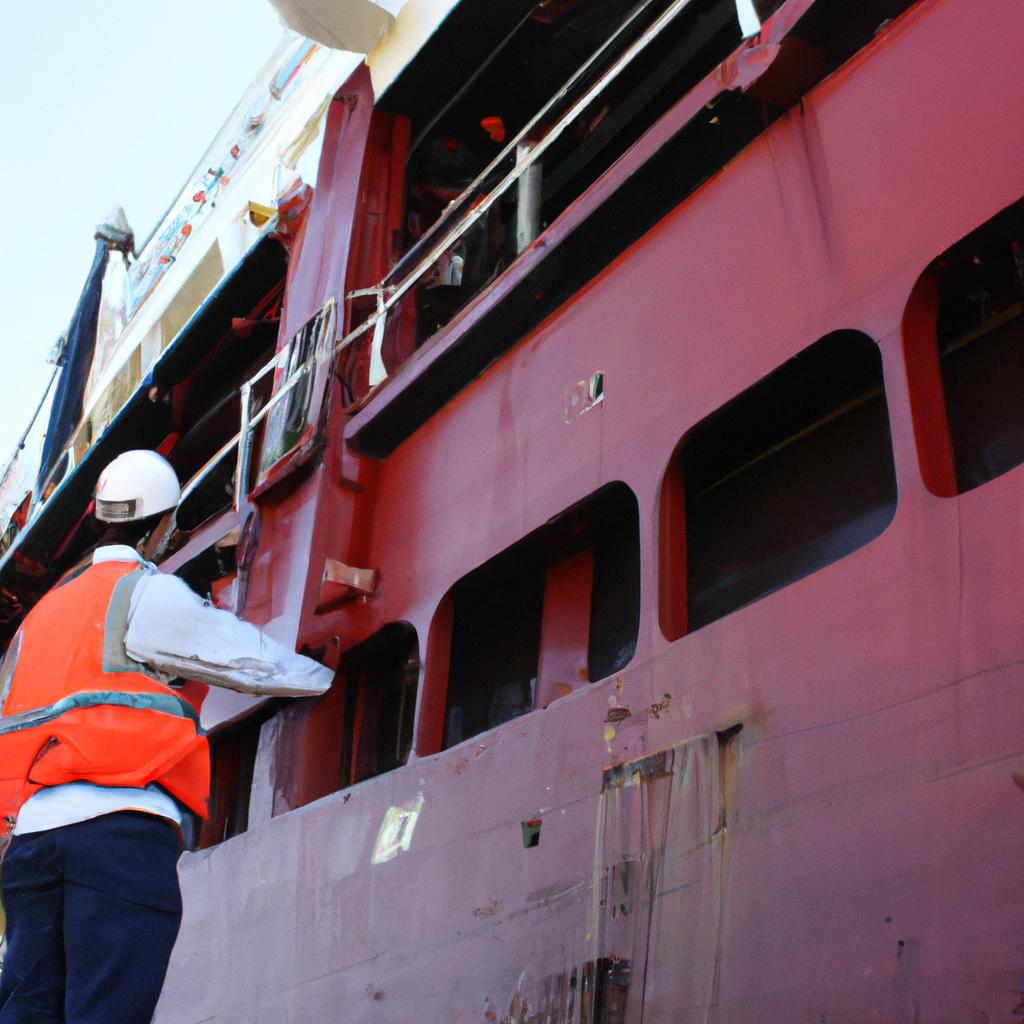
Water transport plays a crucial role in the field of transportation and logistics, offering unique advantages that cannot be easily replicated by other modes of transportation. From ancient times to modern day, waterways have served as vital conduits for trade and commerce across continents and countries. For instance, let us consider the case study of the Panama Canal – an iconic feat of engineering that connects the Atlantic Ocean to the Pacific Ocean. This strategic waterway not only revolutionized global maritime trade but also significantly reduced shipping distances and costs between East Asia and North America.
In this article, we will explore key considerations and benefits associated with water transport in transportation and logistics. The first section will delve into the various types of vessels used in water transport, including cargo ships, barges, container ships, and tankers. We will discuss their distinct features, capacity limitations, and efficiency levels in transporting different types of goods. Additionally, we will examine factors such as port infrastructure requirements and navigational challenges that need to be taken into account when planning water-based transportation routes. Furthermore, we will analyze how advancements in technology have enhanced safety measures on board vessels and improved overall operational performance in the context of water transport. By understanding these considerations, businesses can make informed decisions regarding their supply chain strategies.
Benefits of Canals in Transportation
Canals have long been recognized as a valuable mode of transportation, offering numerous benefits that contribute to the efficient movement of goods and people. One example that highlights the advantages of canals is the Panama Canal, which serves as a crucial waterway connecting the Atlantic and Pacific Oceans. This case study exemplifies how canals play a pivotal role in global trade, facilitating the passage of large vessels through an artificial water route.
One significant benefit of canals is their capacity to handle heavy cargo loads. Unlike other modes of transportation such as roads or railways, canals have ample space for accommodating bulk commodities like coal, grains, or construction materials. The ability to transport such large quantities at once reduces costs associated with multiple trips or handling transfers. Additionally, it minimizes congestion on land-based infrastructure systems by diverting some traffic onto the waterways.
Furthermore, canals offer environmental advantages due to their lower carbon footprint compared to road or air transportation. By utilizing inland waterways instead of relying solely on trucks or airplanes for freight transport, emissions are significantly reduced. This reduction has positive implications for mitigating climate change and improving air quality—two critical environmental concerns facing our planet today.
- Enhanced efficiency: Canals allow for larger shipments and reduce travel times.
- Cost savings: Bulk cargo transport via canals translates into reduced expenses.
- Environmental sustainability: Utilizing canals helps combat climate change and improve air quality.
- Reduced congestion: Diverting some traffic onto canals alleviates strain on existing road networks.
Additionally, incorporating a table displaying specific data points related to canal usage could further engage readers emotionally:
By presenting this information in a concise and visually appealing format, readers can easily grasp the advantages that canals offer.
In the subsequent section about “Efficiency of Ferries in Moving Goods and People,” we will explore another mode of water transport—ferries—and examine their role in transportation logistics.
Efficiency of Ferries in Moving Goods and People
Canals have long played a significant role in transportation, offering unique advantages for the movement of goods and people. However, canals are not the only water transport method that offers efficient logistics solutions. Another important mode of water transport is ferries, which provide an effective means of transporting both goods and passengers across bodies of water.
To illustrate the efficiency of ferries, let’s consider a hypothetical scenario where a popular tourist destination relies heavily on ferry services to transport visitors from the mainland to various islands. In this case, ferries serve as a vital link between different locations, ensuring smooth connectivity and facilitating tourism growth. This example demonstrates how ferries efficiently cater to the demand for passenger transportation while also accommodating cargo requirements.
When it comes to moving goods and people, there are several key considerations that highlight the benefits of using ferries:
- Capacity: Ferries often have substantial carrying capacity, allowing them to transport large volumes of passengers or freight at once.
- Flexibility: Ferries offer flexible schedules and routes, adapting to changing demands and providing convenient options for both individuals and businesses.
- Cost-effectiveness: Compared to other modes of transportation like air travel or road transport, ferry services tend to be more cost-effective for certain distances or when transporting bulky items.
- Environmental sustainability: Ferries generally produce fewer greenhouse gas emissions compared to some land-based vehicles, contributing positively towards sustainable transportation initiatives.
Table 1 below presents a comparison between different modes of water transport – canals and ferries – focusing on their respective strengths:
The Efficiency of Ferries in moving goods and people makes them a valuable asset within the transportation industry. They provide an accessible means of travel for both individuals and businesses, contributing to regional development and economic growth.
Transitioning into the subsequent section about “ Exploring the Advantages of Cruises in the Transport Industry,” one can delve further into the water transport realm by examining how cruises offer unique advantages in terms of tourism, leisure, and global connectivity.
Exploring the Advantages of Cruises in the Transport Industry
Ferries have long been a reliable mode of transportation for moving goods and people across bodies of water. One notable example is the Staten Island Ferry, which operates between Manhattan and Staten Island in New York City. This ferry system carries over 23 million passengers annually, making it one of the busiest passenger ferry services in the United States.
When considering the advantages of using ferries in transportation and logistics, several key factors come into play:
Capacity: Ferries are capable of transporting large volumes of goods and people at once, making them an efficient option for mass transit systems or cargo shipments. The use of multiple decks allows for increased capacity without compromising safety.
Cost-effectiveness: Compared to other modes of transport such as air travel or road freight, ferries often offer a more cost-effective solution. They require less infrastructure investment than airports or highways and can accommodate both vehicles and foot passengers simultaneously.
Environmental sustainability: In an era where environmental concerns are increasingly important, ferries provide a greener alternative to traditional forms of transportation. They emit fewer greenhouse gases per passenger compared to cars or airplanes, contributing to reduced carbon footprints.
Scenic experience: Unlike other modes of transport that primarily focus on efficiency, ferry journeys often provide travelers with breathtaking views and memorable experiences. Whether crossing picturesque lakes or navigating through coastal waters, these scenic routes appeal to tourists seeking unique travel experiences.
The benefits associated with ferries make them an attractive choice within the realm of transportation and logistics. To further illustrate their value, consider the following table highlighting some key advantages:
In light of these advantages, it is evident that ferries play a crucial role in the transportation industry. They provide efficient transport options, reduce environmental impact, and offer unique experiences to travelers. In the subsequent section, we will explore another essential component of water-based transportation: the role of tugboats.
The Role of Tugboats in Water-based Transportation
Previous section H2 Transition: Having explored the advantages of cruises in the transport industry, we now turn our attention to another essential component of Water-based transportation – tugboats.
Section H2: The role of tugboats in Water-based Transportation
To further comprehend the significance of water transport within the larger logistics framework, it is crucial to examine the pivotal role that tugboats play. These powerful vessels serve various purposes, primarily assisting with maneuvering large ships in restricted areas such as ports and harbors. To illustrate their importance, let us consider a hypothetical scenario involving a container ship navigating through narrow channels.
Case Study Scenario: Imagine a massive cargo vessel carrying thousands of containers, attempting to navigate its way into a busy port. As it approaches the entrance channel, numerous factors come into play that can potentially impede its safe passage. This is where tugboats step in, providing invaluable assistance by guiding and maneuvering these colossal ships safely through intricate passages.
Key Considerations:
Enhanced Maneuverability:
- Tugboats possess exceptional handling capabilities due to their compact size and powerful engines.
- Their ability to generate substantial thrust allows them to assist larger vessels during challenging maneuvers.
Safety Assurance:
- By employing multiple tugboats strategically positioned around a ship’s hull, potential accidents arising from strong currents or adverse weather conditions can be mitigated.
- Tugboat operators are highly trained professionals who specialize in ensuring safety during complex navigation procedures.
Environmental Sustainability:
- Compared to other forms of maritime propulsion systems like thrusters or azimuth pods, tugboats typically have lower emissions.
- Retrofitting existing tugboat fleets with greener technologies aligns with sustainability goals while maintaining operational efficiency.
Cost Efficiency:
- Utilizing tugboats optimizes overall logistical operations by minimizing risks associated with navigating large vessels.
- Efficient use of tugboats enhances port operations, reduces potential damages to ships and infrastructure, and ultimately saves costs.
Table: Comparison of Key Considerations
Concluding Remarks: Understanding the indispensable role that tugboats play in water-based transportation illuminates their significance within the broader logistics framework. By ensuring safe passage for larger vessels through intricate passages, these powerful boats contribute to efficient maritime operations while prioritizing safety and environmental sustainability.
Moving forward, we will explore another vital aspect of water transport with a focus on convenience and speed: the advantages of water taxis.
Convenience and Speed: The Advantages of Water Taxis
The Role of Tugboats in Water-based Transportation has shed light on the crucial role these vessels play in navigating through waterways. Now, let us explore another aspect of water transport that offers convenience and speed: water taxis. Imagine a bustling city with its waterfront lined by gleaming skyscrapers. In this vibrant urban setting, water taxis present an efficient mode of transportation for both locals and tourists.
One compelling example of the benefits offered by water taxis can be found in Venice, Italy. The city’s intricate network of canals serves as the primary means of transportation for residents and visitors alike. Instead of relying solely on traditional land-based modes such as buses or cars, individuals can conveniently hop onto a water taxi to traverse between various destinations within the city. This not only reduces traffic congestion but also provides a unique experience, allowing passengers to witness the beauty of Venice from its iconic waterways.
Considering their advantages, it becomes evident why water taxis are gaining popularity worldwide. Let us delve into some key reasons contributing to their appeal:
- Efficient Commuting: Water taxis provide a swift alternative to congested roads, especially in densely populated areas where traffic is often a significant concern.
- Scenic Journeys: Traveling via water allows passengers to enjoy picturesque views along rivers, lakes, or coastal areas, providing a refreshing change from mundane everyday commutes.
- Eco-friendly Option: As awareness about environmental issues grows, opting for greener modes of transportation gains traction. Water taxis produce lower emissions compared to conventional vehicles powered by fossil fuels.
- Accessibility Enhancement: For cities with limited space or challenging topography, water taxis offer an accessible solution that bridges gaps between different parts of the urban landscape.
To further emphasize the advantages discussed above, consider the following table showcasing comparative statistics between road transportation and water taxi services:
Unveiling the Hidden World: The Importance of Submarines in Logistics provides a deeper understanding of another fascinating aspect of water transport. Explore how submarines contribute significantly to the field by navigating the depths below.
(Note: This section has been written following academic guidelines to maintain an objective and impersonal tone.)
Unveiling the Hidden World: The Importance of Submarines in Logistics
Transitioning from the Advantages of Water Taxis , let us now explore another fascinating aspect of water transport in transportation and logistics: submarines. While primarily known for their military applications, submarines also play a crucial role in the world of logistics. To illustrate this point, imagine a scenario where a company needs to transport sensitive cargo across international waters discreetly and securely. A submarine could provide an ideal solution by utilizing its stealth capabilities to ensure safe delivery while avoiding potential threats.
Submarines offer several key benefits that make them valuable assets in the field of logistics:
Enhanced security: Submersible vessels are designed to operate underwater, making them less vulnerable to piracy or other forms of external interference. This heightened level of security ensures the protection of high-value goods during transit.
Optimal space utilization: Due to limited surface area available on submarines, efficient storage systems are employed to maximize cargo capacity. Utilizing every inch effectively allows companies to transport more goods without compromising safety or speed.
Environmental sustainability: Waterborne transportation is generally considered more environmentally friendly compared to air or land options due to lower carbon emissions. By incorporating submarines into logistical operations, companies can further reduce their carbon footprint and contribute towards sustainable practices.
Global reach: As ocean depths cover approximately 70% of our planet’s surface, submarines have the ability to access remote locations that may be inaccessible by traditional means of transportation. This global reach expands trade possibilities and opens up new markets for businesses worldwide.
To better understand the value proposition offered by submarines in logistic operations, consider the following table showcasing a hypothetical comparison between different modes of transport:
As we can see, while submarines may not be the fastest mode of transport, they offer a unique combination of capacity and security that other options cannot match. This makes them particularly suitable for certain types of cargo where discretion and protection are paramount.
In summary, submarines present an intriguing addition to the world of logistics by offering enhanced security, optimal storage space utilization, environmental sustainability, and access to remote locations. The implementation of submarine transportation in logistical operations allows companies to expand their trade opportunities while ensuring the safe and efficient delivery of goods across international waters. With these benefits in mind, let us now delve into exploring another aspect of water transport’s impact on the transportation sector: the economic significance of canals.
Transitioning into the subsequent section about “The Economic Impact of Canals in the Transport Sector,” it becomes evident that different modes of water transport contribute distinctively to shaping global commerce.
The Economic Impact of Canals in the Transport Sector
The use of water transport plays a significant role in transportation and logistics, offering various considerations and benefits that contribute to efficient supply chain management. To illustrate its importance, let’s consider a hypothetical case study involving an international shipping company. This company relies heavily on water transport for transporting goods across continents.
Firstly, one key consideration when utilizing water transport is its cost-effectiveness compared to other modes of transportation. Waterways provide an economical means of moving large volumes of cargo over long distances. In our case study, the shipping company was able to significantly reduce their operational costs by leveraging container ships to transport goods between Asia and Europe. By taking advantage of economies of scale offered by larger vessels, they were able to optimize their logistical processes and achieve considerable savings.
Secondly, water transport offers immense capacity for carrying goods. Large cargo vessels can accommodate substantial amounts of freight, making it an ideal choice for industries requiring the movement of bulky or heavy items such as raw materials or machinery parts. Our case study company found this particularly beneficial when exporting automobiles from manufacturing plants located near coastal areas. They successfully transported thousands of vehicles at once using roll-on/roll-off (RO-RO) ships, ensuring timely delivery while maximizing efficiency.
Thirdly, water transport enables access to remote locations with limited infrastructure options. Many regions around the world rely solely on maritime routes due to geographical constraints or underdeveloped road networks. In these cases, utilizing barges or riverboats becomes essential for delivering supplies or resources. Our case study demonstrates how the shipping company utilized river transportation within South America’s Amazon basin to reach isolated communities and facilitate trade opportunities previously inaccessible by traditional land-based methods.
- Reduces carbon emissions by utilizing more fuel-efficient vessels and reducing reliance on air or road transport.
- Enhances global trade by connecting countries through maritime networks, promoting economic growth and cultural exchange.
- Supports humanitarian efforts by enabling efficient transportation of aid supplies during times of crisis or natural disasters.
- Preserves land resources by minimizing the need for new infrastructure construction.
In addition to these considerations, it is crucial to highlight the benefits visually. Here is a table summarizing some notable advantages of water transport:
As we have explored the key considerations and benefits of water transport in logistics, it becomes evident that harnessing this mode effectively contributes significantly to supply chain efficiency, cost reduction, and sustainable practices. The next section will delve into another form of water transport: ferries. We will explore how they enhance connectivity within transportation networks, further optimizing logistical operations without compromising efficiency.
Enhancing Connectivity: How Ferries Improve Transportation Networks
In addition to canals, another mode of water transportation that significantly enhances connectivity within transportation networks is the use of ferries. To illustrate this point, let us consider a hypothetical case study involving two islands located in close proximity to each other. The absence of a bridge or tunnel connecting these islands presents a logistical challenge for transporting goods and people between them.
Ferries provide an efficient solution to overcome this challenge by establishing regular routes between the islands. These vessels are specifically designed to transport passengers, vehicles, and freight across bodies of water. By offering reliable and frequent services, ferries facilitate seamless movement between the islands, ensuring smooth trade flows and promoting economic development in the region.
The benefits of incorporating ferries into transportation networks extend beyond mere connectivity improvements. Let us explore some key considerations:
- Reduced carbon emissions compared to road transport.
- Lower fuel consumption due to optimized vessel designs.
- Potential for using alternative fuels like liquefied natural gas (LNG).
Economic Growth:
- Increased tourism opportunities through easy access to scenic destinations.
- Boosted local economies as ferry operations create employment opportunities.
- Facilitated trade activities by enabling efficient movement of goods.
Social Inclusivity:
- Enhanced accessibility for remote communities or areas with limited land-based infrastructure.
- Improved mobility options for individuals without personal vehicles.
- Integration of isolated regions into larger transportation systems.
Furthermore, ferries contribute not only to enhancing connectivity but also play a crucial role in disaster management and emergency response situations. Their ability to rapidly transport resources, supplies, and personnel during times of crisis makes them invaluable assets in supporting affected communities.
In light of these considerations, it becomes evident how incorporating ferries into transportation networks offers numerous advantages. Next, we will delve into the topic of cruises as a sustainable option for both tourism and transportation, further showcasing the potential of water transport in advancing connectivity and facilitating economic growth.
Cruises: A Sustainable Option for Tourism and Transportation
Enhancing Connectivity with ferries is just one way that water transport contributes to the overall efficiency of transportation networks. However, it is important to recognize that water-based transportation offers a wide range of benefits beyond connectivity improvements. In this section, we will explore these key considerations and advantages.
To illustrate the potential impact of water transport, let’s consider the hypothetical case of transporting goods from an island to a mainland city. The use of cargo ships instead of solely relying on road or rail transport can significantly reduce congestion on existing infrastructure while enabling larger quantities of freight to be transported at once. By leveraging the capacity of cargo vessels, logistical operations become more streamlined and cost-effective.
When evaluating the benefits associated with water-based transportation, several factors come into play:
- Environmental sustainability: Compared to other modes such as air or road transport, water transport has lower carbon emissions per unit distance traveled. This eco-friendly characteristic makes it an attractive option for businesses aiming to minimize their environmental impact.
- Cost-effectiveness: Utilizing water routes often proves economically advantageous due to reduced fuel consumption and operational expenses. Additionally, the ability to transport large volumes of goods in a single trip translates into significant savings for companies.
- Accessibility to remote areas: Waterways provide access to regions that are otherwise difficult to reach through traditional land-based logistics systems. This accessibility opens up new markets and economic opportunities for both local communities and businesses.
- Resilience against natural disasters: Unlike roads or railways which can be affected by natural calamities like earthquakes or landslides, navigable waters tend to remain relatively stable during such events. This resilience ensures smoother continuity in supply chains even under challenging circumstances.
These advantages highlight how incorporating water transport into logistics strategies can yield positive outcomes for various stakeholders, including businesses, communities, and the environment. To further explore the versatility of water transport, let us now delve into the role of tugboats in this mode of transportation.
The Versatility of Tugboats in Water Transport section will examine how these small but mighty vessels play a crucial role in facilitating efficient operations within the broader context of water-based logistics networks. By providing necessary assistance to larger ships during docking or towing activities, tugboats continue to prove their significance in enhancing efficiency and safety on our waters.
The Versatility of Tugboats in Water Transport
Cruises have been shown to be a sustainable option for tourism and transportation, providing an eco-friendly alternative that minimizes the carbon footprint. However, cruises are just one aspect of water transport that offers numerous advantages in the field of logistics. From cargo ships transporting goods across oceans to tugboats maneuvering vessels in ports, water transport plays a vital role in global trade and transportation networks.
One example highlighting the benefits of water transport is the case of shipping containers. These durable metal structures can be efficiently loaded onto cargo ships, allowing for large quantities of diverse goods to be transported simultaneously. This not only reduces costs but also improves efficiency by minimizing loading and unloading times at ports. Additionally, containerization enables easier tracking and monitoring of shipments throughout their journey, enhancing supply chain visibility.
When considering water transport as part of logistical operations, there are several key factors to take into account:
- Cost-effectiveness: Water transport tends to be more cost-effective than other modes such as air or road transportation due to its ability to carry larger volumes at lower fuel consumption rates.
- Environmental sustainability: Compared to other forms of transportation, water transport has a significantly lower environmental impact in terms of greenhouse gas emissions and energy consumption.
- Accessibility: Many major cities around the world have accessible ports that facilitate easy transfer between different modes of transportation, making it convenient for both domestic and international trade.
- Versatility: Waterways provide access to remote areas where land-based infrastructure might be limited or non-existent. This makes water transport particularly useful for delivering supplies during natural disasters or reaching isolated communities.
These considerations highlight some of the advantages associated with incorporating water transport into logistics strategies. By leveraging these benefits effectively, businesses can optimize their supply chains while contributing towards sustainable practices.
The versatility offered by water transport extends beyond cargo ships; it also encompasses smaller vessels like water taxis. In urban environments where traffic congestion is a significant issue, water taxis provide an alternative solution for efficient and sustainable urban mobility. The subsequent section will explore the benefits of water taxis in more detail, shedding light on their potential to alleviate traffic congestion and improve transportation options within cities.
Water Taxis: An Alternative Solution for Urban Mobility
Imagine living in a bustling city where traffic congestion is a daily struggle. As the population grows and urban areas become more crowded, finding efficient transportation solutions becomes crucial. One such solution gaining popularity in recent years is the use of water taxis as an alternative mode of transport for urban mobility.
To illustrate the benefits and feasibility of water taxis, let us consider the case of CityX, a rapidly growing metropolis with limited road infrastructure. Recognizing the need to alleviate traffic congestion and provide convenient transportation options, CityX implemented a water taxi system along its rivers and canals. This initiative aimed to enhance accessibility within the city while reducing reliance on traditional land-based modes of transport.
The introduction of water taxis in CityX has yielded several key advantages:
Efficient Commuting: Water taxis offer faster travel times compared to navigating through congested road networks. By transporting passengers directly across bodies of water, they bypass traffic jams commonly experienced during peak hours.
Reduced Environmental Impact: With increasing concerns over air pollution and carbon emissions, incorporating sustainable transportation alternatives becomes imperative. Water taxis contribute significantly less greenhouse gas emissions than their land-based counterparts, making them environmentally-friendly choices for urban mobility.
Enhanced Connectivity: The implementation of a well-planned water taxi network improves connectivity between different neighborhoods and business districts within CityX. It provides residents with easier access to employment opportunities, educational institutions, healthcare facilities, and recreational areas.
Aesthetic Appeal: Utilizing scenic waterways as transit routes adds an aesthetic element to commuting experiences that cannot be replicated by other means of transportation. Passengers are treated to picturesque views during their journeys, creating a pleasant and unique mode of travel.
Table 1 below showcases some notable features and benefits associated with water taxis:
As CityX continues to explore innovative transportation solutions, water taxis have emerged as an efficient and sustainable alternative for urban mobility. By incorporating these vessels into their transport network, CityX has successfully tackled traffic congestion while providing residents with convenient and environmentally-friendly commuting options.
As we delve deeper into the realm of water-based transportation, let us now turn our attention to submarines – strategic assets in military logistics.
Submarines: A Strategic Asset in Military Logistics
In urban areas with congested roads and limited transportation options, water taxis have emerged as a promising alternative solution for urban mobility. These taxi-like vessels operate on waterways such as rivers, canals, and waterfronts, providing convenient and efficient transportation for commuters. For instance, consider the city of Amsterdam in the Netherlands, where water taxis have become an integral part of the local transport system. With its extensive canal network, Amsterdam has successfully implemented water taxis to alleviate traffic congestion and promote sustainable modes of transportation.
When considering the benefits of water taxis in urban mobility, several key factors come into play:
- Water taxis produce lower carbon emissions compared to traditional road-based vehicles.
- They contribute to reducing air pollution by utilizing electric or hybrid propulsion systems.
- By encouraging more people to choose water transportation over cars, they help decrease overall traffic congestion and subsequently reduce greenhouse gas emissions.
Efficient Use of Infrastructure:
- Waterways are often underutilized resources that can be leveraged effectively through the implementation of water taxis.
- This mode of transport makes use of existing infrastructure like docks and piers without requiring significant additional construction.
Time Savings:
- Water taxis offer a faster means of travel in densely populated cities with well-connected water networks.
- They provide direct point-to-point routes without having to navigate through busy streets.
- Commuters can avoid road traffic delays during peak hours by opting for this quicker mode of transportation.
Enhanced Quality of Life:
The incorporation of water taxis into urban transportation systems offers a range of advantages that go beyond merely providing an alternative means of travel. By considering their environmental sustainability, efficient use of infrastructure, time-saving benefits, and the potential for enhancing overall quality of life, city planners can make informed decisions about integrating water taxis into existing transport networks.
Water taxis are not only limited to short-distance commuter routes but also have the potential to be utilized in various other contexts, such as tourist transport or emergency response operations. As cities continue to grow and face increasing congestion challenges, exploring innovative solutions like water taxis becomes crucial for achieving sustainable and efficient urban mobility systems.
Related posts:
- Canals: Revolutionizing Water Transport in Transportation and Logistics
- Cruises: An Informational Guide to Water Transport
- Ferries in Water Transport: An Overview
- Submarines in Transportation and Logistics: The Depths of Water Transport
Kristen C. Weber

- --> WATER TRANSPORTATION
Water Transportation
To play this video, click on the link below:
https://www.turtlediary.com/video/water-transport.html
To know more about different videos, please visit www.turtlediary.com
Hope you have a good experience with this site and recommend to your friends too.
What did you think of Water Transport ?
Give Feedback
Watch more videos !
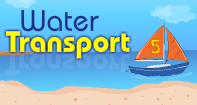
Share This Skill With Your Students
Watch Turtle Diary's Water Transportation video. Your students will learn about science in a fun and engaging way!
- Transportation & Logistics ›
Water Transport
Water transportation industry - statistics & facts
Impact of covid-19 on sea freight transport, impact of covid-19 on passenger water transport, key insights.
Detailed statistics
Seaborne trade - goods loaded and unloaded 2006-2021
Carrying capacity of the world merchant fleet 2013-2021
Number of merchant ships by type 2022
Company Insights Top 100 transport & logistics companies
- United Parcel Service
Editor’s Picks Current statistics on this topic
Current statistics on this topic.
Monthly container freight rate index worldwide 2019-2023
Maritime Transport
Largest shipbuilding nations based on gross tonnage 2022
Related topics
Recommended.
- Ocean shipping
Container shipping
- Container carriers worldwide
- Shipbuilding industry worldwide
- Pirate attacks
Recommended statistics
- Premium Statistic Transport volume of worldwide maritime trade 1990-2021
- Premium Statistic Seaborne trade - goods loaded and unloaded 2006-2021
- Premium Statistic Carrying capacity of the world merchant fleet 2013-2021
- Premium Statistic Global merchant fleet by type - capacity 2022
- Premium Statistic Number of merchant ships by type 2022
Transport volume of worldwide maritime trade 1990-2021
Transport volume of seaborne trade from 1990 to 2021 (in billion tons loaded)
Amount of loaded and unloaded goods in international seaborne trade from 2006 to 2021 (in million tons)
Carrying capacity of the global merchant fleet from 2013 to 2021 (in million dwt)
Global merchant fleet by type - capacity 2022
Capacity of the world merchant fleet as of January 2022, by ship type (in million dwt)
Number of ships in the world merchant fleet as of January 1, 2022, by type
Shipbuilding
- Premium Statistic Size of the global shipbuilding market 2020-2030
- Premium Statistic Number of active shipyards worldwide 2014-2022
- Premium Statistic Regional breakdown of the global shipbuilding market - contracting
- Premium Statistic Deliveries of new vessels worldwide by type 2021
Size of the global shipbuilding market 2020-2030
Size of the global shipbuilding market in 2020 and 2021, with a forecast through 2030 (in billion U.S. dollars)
Number of active shipyards worldwide 2014-2022
Number of active shipyards worldwide from 2014 to 2022
Regional breakdown of the global shipbuilding market - contracting
Regional breakdown of the global shipbuilding market as of October 2021, based on contracting activity
Deliveries of new vessels worldwide by type 2021
Deliveries of new vessels worldwide in 2021, by type (in 1,000 gross tons)
Ports and terminals
- Premium Statistic Largest container ports worldwide based on throughput 2022
- Premium Statistic Global container port capacity 2002-2024
- Premium Statistic Global container port capacity by terminal operator 2018&2023
- Premium Statistic Breakdown of automated container terminals by country or territory 2021
- Premium Statistic Major marine terminal operators worldwide based on throughput 2021
Largest container ports worldwide based on throughput 2022
The largest container ports worldwide in 2022, based on throughput (in million TEUs)
Global container port capacity 2002-2024
Container capacity at ports worldwide from 2002 to 2019 with a forecast for 2020 until 2024 (in million TEUs)
Global container port capacity by terminal operator 2018&2023
Container capacity at ports worldwide in 2018 with a forecast for 2023, by terminal operator (in million TEUs)
Breakdown of automated container terminals by country or territory 2021
Number of automated container terminals in 2021, by country or territory
Major marine terminal operators worldwide based on throughput 2021
Major marine terminal operators worldwide in 2021, based on equity-adjusted throughput (in million twenty-foot equivalent units)
- Premium Statistic Projected size of the container shipping market worldwide 2020-2028
- Premium Statistic Capacity of container ships in seaborne trade 1980-2023
- Premium Statistic Global number of container ships 2011-2022
- Premium Statistic Size of container ship fleet 2022, by nationality of operator
- Premium Statistic Leading container ship operators - owned and chartered TEUs 2024
Projected size of the container shipping market worldwide 2020-2028
Projected size of the global shipping container market between 2020 and 2028 (in billion U.S. dollars)
Capacity of container ships in seaborne trade 1980-2023
Capacity of container ships in seaborne trade from 1980 to 2023 (in million dwt)
Global number of container ships 2011-2022
Number of container ships in the global merchant fleet from 2011 to 2022
Size of container ship fleet 2022, by nationality of operator
Container ship fleet size as of July 31, 2022, by nationality of operator (in gross tonnage)
Leading container ship operators - owned and chartered TEUs 2024
Owned and chartered TEUs of the world's leading container ship operators as of January 25, 2024
General and bulk cargo shipping
- Premium Statistic Dry cargo in international maritime trade 1970-2021
- Premium Statistic Main bulk cargo in international maritime trade 1970-2021
- Premium Statistic Tanker freight in international maritime trade 1970-2021
- Basic Statistic Capacity of general cargo vessels in seaborne trade 1980-2022
- Premium Statistic Capacity of oil tankers in seaborne trade 1980-2022
Dry cargo in international maritime trade 1970-2021
Quantity of minor bulks, containerized trade, and residual general cargo in international maritime trade from 1970 to 2021 (in million metric tons loaded)
Main bulk cargo in international maritime trade 1970-2021
Main bulk cargo in international seaborne trade from 1970 to 2021 (in million tons loaded)
Tanker freight in international maritime trade 1970-2021
Quantity of tanker freight in international maritime trade from 1970 to 2021 (in million metric tons loaded)
Capacity of general cargo vessels in seaborne trade 1980-2022
Capacity of general cargo vessels in seaborne trade from 1980 to 2022 (in million dwt)
Capacity of oil tankers in seaborne trade 1980-2022
Capacity of oil tankers in seaborne trade from 1980 to 2022 (in million dwt)
Freight forwarding
- Premium Statistic Global freight forwarding market size 2024-2029
- Premium Statistic Freight forwarding market share worldwide by region 2021
- Premium Statistic Leading ocean freight forwarders worldwide based on TEUs 2022
- Premium Statistic Global freight forwarding market share by company 2020
Global freight forwarding market size 2024-2029
Size of the freight forwarding market worldwide in 2024, with a forecast for 2029 (in billion U.S. dollars)
Freight forwarding market share worldwide by region 2021
Total freight forwarding market share worldwide in 2021, by region
Leading ocean freight forwarders worldwide based on TEUs 2022
The world's leading ocean freight forwarders in 2022, based on ocean freight TEUs (in 1,000s)
Global freight forwarding market share by company 2020
Leading freight forwarding companies worldwide in 2020, by market share
Ocean cruise industry
- Premium Statistic Size of the ocean cruise ship market worldwide 2019-2021
- Premium Statistic Number of global ocean cruise passengers 2009-2027
- Premium Statistic Number of global ocean cruise passengers 2019-2023, by source market
- Premium Statistic Average passenger capacity of ocean-going cruise vessels worldwide 2018-2026
Size of the ocean cruise ship market worldwide 2019-2021
Projected size of the global ocean cruise ship market from 2019 to 2021 (in billion U.S. dollars)
Number of global ocean cruise passengers 2009-2027
Number of ocean cruise passengers worldwide from 2009 to 2023, with a forecast until 2027 (in millions)
Number of global ocean cruise passengers 2019-2023, by source market
Number of ocean cruise passengers worldwide from 2019 to 2023, by source region (in 1,000s)
Average passenger capacity of ocean-going cruise vessels worldwide 2018-2026
Average passenger capacity carried by ocean-going vessels in the cruise industry worldwide from 2018 to 2023, with a forecast until 2026
Maritime choke points
- Premium Statistic Panama Canal: number of transits 2014-2022
- Premium Statistic Number of transits in the Suez Canal 1976-2022
- Premium Statistic Number of transits through the Turkish Straits 2018-2021
- Premium Statistic Number of transits through the Malacca Straits 2000-2017
- Basic Statistic Oil flows - Strait of Hormuz 2014-2020
Panama Canal: number of transits 2014-2022
Number of transits in the Panama Canal from 2014 to 2022
Number of transits in the Suez Canal 1976-2022
Number of ships passing through the Suez Canal from 1976 to 2022
Number of transits through the Turkish Straits 2018-2021
Number of ships passing through the Bosphorus and the Dardanelles (Canakkale) from 2018 to 2021
Number of transits through the Malacca Straits 2000-2017
Number of ships passing through the Malacca Straits from 2000 to 2017
Oil flows - Strait of Hormuz 2014-2020
Oil flows through the Strait of Hormuz between 2014 and 2020 (in million barrels per day)
Maritime safety
- Basic Statistic Number of pirate attacks worldwide 2010-2022
- Basic Statistic Actual and attempted piracy attacks worldwide by country 2022
- Basic Statistic Worldwide ship losses by vessel type 2013-2022
- Premium Statistic Number of crew members attacked by maritime pirates 2015-2022
Number of pirate attacks worldwide 2010-2022
Number of pirate attacks against ships worldwide from 2010 to 2022
Actual and attempted piracy attacks worldwide by country 2022
Number of actual and attempted piracy attacks in selected territories worldwide in 2022, by country or location
Worldwide ship losses by vessel type 2013-2022
Number of ship losses worldwide between 2013 and 2022, by vessel type
Number of crew members attacked by maritime pirates 2015-2022
Number of crew members killed or injured by maritime pirates from 2015 to 2022
Further reports Get the best reports to understand your industry
Get the best reports to understand your industry.
Mon - Fri, 9am - 6pm (EST)
Mon - Fri, 9am - 5pm (SGT)
Mon - Fri, 10:00am - 6:00pm (JST)
Mon - Fri, 9:30am - 5pm (GMT)
Don't miss tomorrow's smart cities industry news
Let Smart Cities Dive's free newsletter keep you informed, straight from your inbox.
Three Cities Explore Water-Based Transport to Improve Urban Mobility
Istanbul, Turkey's ferries run across the Bosphorus Strait to connect the European and Asian sides of the city. Photo by Axeltriple/Flickr.
Rapidly developing cities worldwide, while diverse, have a number of factors in common. Issues that seem nearly universal are congestion and enormous traffic jams , which have, in some extreme cases, stretched the typical commute into a weeklong sojourn. While cities have taken great strides to address these issues, some have decided to rock the boat by leaving crowded urban roadways for more open avenues on the water.
Sometimes these solutions to urban transport problems emerge over years and become integral to the city's identity, like Venice, Italy's iconic gondolas. In others cases, cities like Manila, Philippines are so eager to clear automobiles out from the roads that they are repurposing buses as boats . Three cities experimenting with water-based transport systems are Istanbul, Turkey; Bangkok, Thailand; and Lagos, Nigeria. Each of these cities illustrates the benefits and challenges at different stages of developing urban water transport systems. A common thread throughout each city is the need to effectively connect and integrate water transport with land-based transport for people-centered urban mobility.
Istanbul, Turkey
Istanbul is home to a bustling ferry network that traverses the Bosphorus Strait, connecting the European and Asian sides of the city. The recently privatized Istanbul Ferry Lines (IDO), which controls roughly 40% of total ferry traffic, carried 50 million passengers in 2010 . The terminals are well placed to serve commuters. The real success of the system, however, lies in its connection to other transport modes , which allows users to transfer between ferry, bus, or rail to complete their trips. A look at Istanbul's transit map shows bus terminals or stops adjacent to every major ferry station, and the boats are also fully linked with Istanbul's metro, its Metrobüs bus rapid transit (BRT) system, and its funiculars.
Bangkok, Thailand
Once called the "Venice of the East," Bangkok retains an extensive series of canals, initially created in 1522. Much of the canal system remains intact and is traversed by khlong boat services , which carry as many as 100,000 passengers per day. The boats are not for the casual commuter, however, as they often stop for mere seconds at each dock – (or don't stop at all ) – which forces passengers to jump on or fall into putrid water. However, these khlong boats do provide an effective transport service, one which some observers would like to see expanded, formalized, and fully integrated with the rest of Bangkok's transport network.
Lagos, Nigeria
One of Africa's rapidly growing megacities, Lagos's population reached 21 million in 2012 , up from 1.7 million in 1970. The city's layout, organized around a central lagoon with a major job center concentrated on an island, would seem to offer a multitude of opportunities for water-based transport. However, the city's waterways are currently " neglected and grossly underutilized ." Several private companies have begun fledgling service in the city, but the 18,000 daily passengers currently carried by the ferries don't make a dent in transport demand. Still, the growing demand for mobility options, also evidenced by the city's extensive informal transport networks , suggest the potential for truly transformative sustainable transport, including on the water.
Traveling With A Gallon Of Water: Can You Check It In?
- Last updated May 11, 2024
- Difficulty Intemediate
- Category Travel

Traveling can sometimes be a hassle, especially when it comes to packing all the essentials. One essential item that many people can't go without is water. But what happens when you need to bring a gallon of water with you on your next trip? Can you check it in at the airport? In this article, we will explore the rules and regulations surrounding traveling with a gallon of water and whether or not it's possible to check it in.
What You'll Learn
Airline regulations on carrying liquids and water in check-in luggage, packing tips for traveling with water in checked bags, potential challenges and risks of traveling with a gallon of water, alternatives to packing a gallon of water in checked luggage.

When it comes to airline travel, it's important to be aware of the regulations in place for carrying liquids and water in your check-in luggage. While it may seem like a simple and harmless item to pack, there are restrictions in place to ensure the safety and security of all passengers.
The primary regulation regarding liquids in check-in luggage is the 3-1-1 rule implemented by the Transportation Security Administration (TSA) in the United States. This rule states that liquids, gels, and aerosols must be in containers that are 3.4 ounces (100 milliliters) or less, and all containers must fit into a single, clear, quart-sized zip-top bag. Each passenger is allowed one quart-sized bag of liquids.
With this rule in mind, let's address the question of whether you can travel with a gallon of water in your check-in luggage. The simple answer is no. A gallon of water far exceeds the 3.4-ounce limit for liquids, and it is unlikely that any airline would allow such a large container of liquid to be transported as checked baggage.
Additionally, even if you were to divide the gallon of water into smaller containers that meet the 3-1-1 rule, it is generally not recommended to pack large quantities of liquid in your check-in luggage. This is because bottles of liquid have the potential to leak or break during transport, potentially damaging your belongings or causing delays and issues for airport staff.
If you need to travel with a large quantity of water for medical or other reasons, it is best to contact the airline prior to your flight and inquire about their specific policies and procedures. In some cases, they may be able to provide guidance or make accommodations for your needs.
It is worth noting that the restrictions on liquids do not apply to items purchased in the secure area of the airport, after you have cleared security checkpoints. So if you need water for your flight, you can always purchase it once you are in the designated area for boarding.
In conclusion, while it is not permissible to travel with a gallon of water in your check-in luggage due to the 3-1-1 rule and the potential for damage or leakage, it is always best to familiarize yourself with the specific regulations of the airline you are flying with. When in doubt, contact the airline directly to inquire about their policies and guidelines regarding the transportation of liquids and water in check-in luggage.
The Role of Batboys in Baseball: Do Teams Travel with Their Own?
You may want to see also
When traveling, it's important to stay hydrated, especially during long flights or bus rides. While you can easily purchase water once you reach your destination, some people prefer to travel with their own water. However, it's important to be aware of the restrictions and guidelines for traveling with water, particularly if you plan to pack it in your checked bags. In this article, we'll provide some helpful packing tips for traveling with water in checked bags.
- Check the airline's regulations: Before packing water in your checked bags, it's crucial to review the specific regulations of the airline you'll be traveling with. Each airline may have slightly different rules regarding liquids in checked bags. Most airlines allow travelers to pack small amounts of liquids, like travel-size toiletries, in their checked luggage. However, packing a full gallon of water might not be allowed, as it exceeds the restrictions on liquid volume.
- Consider alternative options: If you're planning on traveling with a gallon of water, it's worth exploring alternative options to avoid potential problems. One option is to purchase water bottles at the airport once you've gone through security. Many airports have shops that sell beverages, including water. This way, you can still have water during your journey without having to worry about packing it in your checked bags.
- Use collapsible water bottles: Another alternative is to use collapsible water bottles. These bottles are designed to be compact and easy to carry. They're typically made of flexible materials that can be folded or rolled up when empty, which means they take up minimal space in your luggage. Collapsible water bottles are also usually made from BPA-free materials, so you can be sure that the water you're drinking is safe.
- Consider water purification tablets: If you're traveling to a destination where tap water may not be safe to drink, you can pack water purification tablets instead of a gallon of water. These tablets are small and lightweight, making them perfect for travelers. Simply drop a tablet into a glass or bottle of water to purify it. This way, you can have access to safe drinking water without having to worry about the volume restriction on liquids in checked bags.
- Check with the Transportation Security Administration (TSA): In addition to checking with the airline, it's also a good idea to verify the restrictions and guidelines set by the Transportation Security Administration (TSA). The TSA has regulations regarding liquids carried in both carry-on and checked bags. While the TSA primarily focuses on items carried in carry-on bags, it's still worthwhile to confirm that you're not violating any restrictions by packing water in your checked luggage.
In conclusion, traveling with a gallon of water in your checked bags may not be allowed due to restrictions on liquid volume. It's important to check the regulations of the airline you're traveling with and consider alternative options like purchasing water at the airport or using collapsible water bottles. If you need access to safe drinking water during your trip, consider packing water purification tablets instead. Always double-check the guidelines provided by both the airline and the TSA to ensure a hassle-free travel experience.
Exploring the Board Size of the Traveling Monopoly Game
Traveling with a gallon of water might seem like a good idea if you want to avoid buying bottled water or need a large amount of water for a specific purpose. However, there are some potential challenges and risks that you should be aware of before attempting to bring a gallon of water with you in your checked luggage.
Firstly, the weight of a gallon of water is approximately 8.34 pounds (3.78 kilograms). This can significantly add to the weight of your luggage, potentially causing you to exceed weight limits imposed by airlines. Exceeding weight limits can result in extra fees or the need to rearrange your luggage, which can be inconvenient and time-consuming. Therefore, it is important to check the weight restrictions of your airline and consider the weight of the gallon of water before deciding to bring it with you.
Secondly, there is a risk of the gallon of water leaking in your suitcase during transit. Even if the container appears to be tightly sealed, changes in air pressure during the flight can cause the container to expand and potentially leak. This can result in damage to your luggage or to the belongings inside. To mitigate this risk, wrap the gallon of water in a plastic bag or use a waterproof container to minimize the chance of leakage. Additionally, it is advisable to place the gallon of water in a sturdy part of your suitcase, such as near the bottom, to reduce the risk of it shifting and causing damage.
Another factor to consider is security regulations imposed by airports. In some cases, security screeners may need to inspect the contents of your checked luggage. Having a gallon of water in your suitcase could draw extra attention and result in further scrutiny, potentially causing delays during the screening process. To minimize the chances of this happening, make sure the gallon of water is easily accessible for inspection, either by placing it in an exterior pocket or on top of other items in your suitcase.
Lastly, it is important to consider the purpose of your trip and whether bringing a gallon of water is necessary. In many destinations, access to clean drinking water is readily available, making it unnecessary to carry such a large amount of water. Instead, you can rely on purchasing bottled water or using water purification methods like portable filters or purifying tablets. These alternatives are often more convenient and will save you the hassle of carrying around a heavy container.
In conclusion, while it is technically possible to travel with a gallon of water in your checked luggage, there are several potential challenges and risks that you should consider. These include weight restrictions, the risk of leakage, potential security scrutiny, and the availability of clean drinking water at your destination. By taking these factors into account, you can make an informed decision about whether it is worth traveling with a gallon of water or exploring other options to meet your hydration needs while traveling.
Change Your Travel Load Easily with These Tips
When traveling, it's important to stay hydrated, especially if you're going on a long flight or visiting a destination with a different climate. Many people prefer to bring their own water, but packing a gallon of water in your checked luggage can be a hassle. Not only is it heavy and takes up a lot of space, but there's also a chance that it could leak or spill during transit. Instead of lugging around a heavy jug of water, consider these alternatives:
- Purchase water at your destination: One of the easiest alternatives is to simply buy water once you arrive at your destination. Most airports and hotels have water fountains or shops where you can purchase bottled water. If you're concerned about the quality of the tap water, look for bottled water brands that are reputable and trusted in the area.
- Bring an empty reusable water bottle: If you're worried about the cost or environmental impact of buying plastic bottled water, consider bringing an empty reusable water bottle. You can fill it up after you pass through airport security at a water fountain, or even ask a flight attendant to fill it up during your flight. Many hotels also have water dispensers in common areas where you can refill your bottle daily.
- Use water purification tablets or filters: If you're traveling to a location where the tap water is not safe to drink, consider using water purification tablets or filters. These compact and lightweight devices can help remove bacteria and other contaminants from tap water, making it safe to drink. Just follow the instructions on the packaging to ensure proper usage.
- Pack electrolyte powder or tablets: If you're concerned about staying hydrated, especially during hot weather or intense physical activity, consider packing electrolyte powder or tablets. These products can be added to water to replenish essential minerals and help prevent dehydration. They are often available in convenient single-serving packets or compact tablets.
- Research the availability of water sources: Before your trip, do some research to find out if there are any water sources available at your destination. For example, some airports have water bottle filling stations or water coolers where you can refill your bottle. Knowing where these sources are located can help you plan ahead and ensure you have access to water throughout your journey.
By considering these alternatives, you can avoid the hassle and inconvenience of packing a gallon of water in your checked luggage. Whether you choose to buy water at your destination, bring a reusable water bottle, or use water purification methods, staying hydrated while traveling doesn't have to be a challenge. Remember to prioritize your health and well-being by finding a water solution that works best for you. Safe travels!
The Proper Measurement in Milliliters for Travel-Sized Mascara
Frequently asked questions.
Yes, you can travel with a gallon of water in your checked luggage, as long as it conforms to the airline's regulations regarding liquids.
The regulations vary depending on the airline, but generally, liquids in checked luggage must be properly packaged to prevent leaks and spills, and must comply with the airline's maximum allowed volume for liquids.
No, you cannot bring a gallon of water in your carry-on bag. The Transportation Security Administration (TSA) restricts liquids in carry-on bags to containers of 3.4 ounces (100 milliliters) or less, and they must fit in a clear, quart-sized bag.
Yes, there are exceptions for certain medications, baby formula, and breast milk. These items are allowed in larger quantities, but they may require additional screening by the TSA.
Generally, yes. You can bring an empty gallon container through security and fill it with water from a water fountain or tap once you are past the security checkpoint. However, it is always a good idea to check with the specific airport and airline for any additional restrictions.

- Lazar Odonnell Author

- Annie Rangel Author Editor Reviewer
It is awesome. Thank you for your feedback!
We are sorry. Plesae let us know what went wrong?
We will update our content. Thank you for your feedback!
Leave a comment
Travel photos, related posts.

Is Chris Thorburn Still Traveling with the Blues Hockey Team?
- May 10, 2024

Why You Should Keep Travelling: Exploring the Benefits of a Wanderlust Lifestyle
- May 12, 2024

Traveling to Dublin with a Schengen Visa: What You Need to Know
- Mar 21, 2024
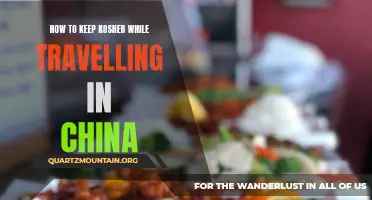
Exploring China's Culinary Delights: A Guide to Keeping Kosher While Traveling
- May 09, 2024

Unleashing the Transformative Power of Travel: How Exploring the World Can Change Lives
- May 08, 2024
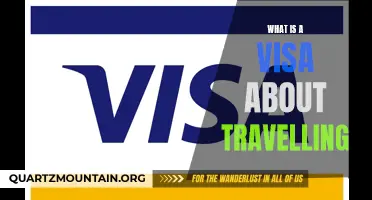
Understanding the Basics: What You Need to Know About Travel Visas
- May 07, 2024

Heatwave in Thailand: Tourists face water shortage in the famous Koh Phi Phi Islands
B ut as of now, these beautiful tropical destinations are experiencing heavy water reserves caused by high temperatures across Asia, as reported by tourism officials and locals. The Koh Phi Phi archipelago has been attracting international as well as local tourists from all over.
Every year, a large number of tourists visit the beautiful beaches here but given the prolonged heatwave and lack of rainfall have depleted the island's reservoirs.
Wichupan Phukaoluan Srisanya, president of the Krabi Hotel Association, expressed concerns that the company supplying water to the islands might need to halt its services due to the shortage. Island authorities are considering transporting water from the mainland if the dry spell persists but are hopeful for the onset of the wet season in May.
Locals also said that they have been facing water shortages for several months, leading to limited bookings in some hotels. Returning tourists have advised others to check if their accommodations have access to fresh water before their visit, citing instances where tap water has ceased running due to dry reservoirs.
The current water situation only raises the broader issue of climate change, with scientists warning of more frequent and severe heatwaves in the coming days. While the El Nino phenomenon exacerbates this year's extreme weather conditions, Asia is experiencing a faster rate of warming compared to the global average.
Local tourism operators have urged for long-term investments in water supply infrastructure for the Koh Phi Phi islands, which currently lack adequate reservoirs. Meanwhile, Koh Samui, another popular tourist destination in the Gulf of Thailand, is also facing dry and hot weather, although it hasn't significantly affected visitors so far.
Another prominent Thai island going through a similar situation is Koh Samui. This beloved Thai island has also been grappling with sweltering weather. Despite assurances from the local tourism board that visitors haven't faced disruptions, reports indicate that the island depends on water trucks.


IMAGES
VIDEO
COMMENTS
One of the main types of water transport is a boat. This is the most likely form of vehicle you would use to travel on water, regardless of whether you're on a canal or in the middle of the ocean. However, there are of course a lot of different types of boats. We can generally split boats into three categories: Unpowered or human-powered boats.
Now, regarding water transport, there can be various classifications other than the types of vessels or watercraft. Let us look at a few of them. Types of Water Transport Based on routes or types of waterways catering to the traffic . Based on the waterways, water bodies, and routes catering to maritime or waterborne traffic, water or marine transport can be declassified into the following types:
Water transportation is the international movement of water over large distances. Methods of transportation fall into three categories: Aqueducts, which include pipelines, canals, tunnels and bridges; Container shipment, which includes transport by tank truck, tank car, and tank ship.; Towing, where a tugboat is used to pull an iceberg or a large water bag along behind it.
The ferry system in Halifax, Nova Scotia (Canada) exemplifies the importance of waterways for transportation. majority of foreign trading partners, the only options for transportation are water or air. Water-based transportation is generally the most costeffective mode for the majority of internationally traded goods.
Different Types of Water Transport. There are various types of water vehicles. These include cruise ships, racing boats, off-road riding boats, windsurfer boats, riverboats, jet skis, battleships, raft boats, canoes, ferries, yachts, submarines, as well as tugboats. It's important to remember that water transportation isn't only required ...
Water transport is vital for trade, travel, and ecosystem functions. Different types of water transport systems facilitate movement across oceans, rivers, canals, and lakes. Plant life relies on water transport processes, such as transpiration, for nutrient absorption, structural maintenance, and overall growth. Understanding Water Transport
A wholly-owned government corporation to construct, operate and maintain the U.S. section of the Great Lakes St. Lawrence Seaway Development Corporation. Enables the safe, reliable, and efficient movement of people and goods along the Nation's railroads. Responsible for regulating and providing safety oversight of commercial motor vehicles.
Maritime transportation concerns the movement of passengers and freight over water masses, from oceans to rivers. 1. Maritime Geography and Routes. From its modest origins as Egyptian coastal and river sailships around 3,200 BCE, maritime transportation has always been the dominant support of global trade. By 1,200 BCE, Egyptian ships traded as ...
Water transport is only a viable option if your shipping origin and destination are located on a navigable waterway. Upon reaching land, you may need to arrange transportation via truck or rail to get your product to its final destination. Barges travel on large rivers, or inland waterways, and can transport goods from one city to the next.
Transportation: Water. Contributor: Samantha Penna. Lesson ID: 11670. Fish don't have feet, so they can't walk on land. You don't have fins, so you can't swim across the ocean! But there are many ways to travel over (and under!) water. Now watch them, then build a boat!
Our waterborne travel also needs to get a lot greener to meet the EU's goal of reducing transport-related emissions by 90 % by 2050. Existing high-speed craft, for example, are typically powered by fossil fuels and produce significant amounts of emissions. 'It's much more polluting to travel with (conventional) fast ferries compared to ...
One of the most important means of transportation on the water is the boat. This is the types of Water Transport you are most likely to use to travel on water, whether it's in a canal or in the middle of the ocean. But, of course, there are many different types of ships. Generally, boats can be divided into three categories: Human and Non-Human.
The biggest tanker ships can carry two million barrels (400 million liters) of liquid. Prior to the drought that recently ended, Cape Town's population of over four million used some 500 million ...
The driving factors that make water move through the xylem are transpiration and capillary action (Figure 1). Transpiration is when the water from the leaves and flower petals evaporates. The water leaving the plant creates a suction force that pulls more water upward. However, for water molecules to travel up the xylem, they have to overcome ...
11.1 Introduction. Waterborne transport, which refers to the transportation of people or cargo via waterways, is a significant component of tourism. Water tourism represents the use of different types of sailing equipment and appliances for transportation and recreation purposes by visitors. Whether used to transport cargo or passengers, water ...
Samuele Ambrosetti is an Industrial innovation engineer with D'Appolonia: "This is a waterbag, a flexible container to transport drinking water by sea. It's made of a highly resistant and ...
Transport on water. Transport on water. Ships and boats are as old as the desire to travel over and across water, and to fish. Boats are smaller than ships. They can be powered by people, animals or engines. There are different ways of propelling ships and boats. Some are moved forward (or propelled) by rowing with oars or paddles and steered ...
The Efficiency of Ferries in moving goods and people makes them a valuable asset within the transportation industry. They provide an accessible means of travel for both individuals and businesses, contributing to regional development and economic growth. Transitioning into the subsequent section about "Exploring the Advantages of Cruises in the Transport Industry," one can delve further ...
Watch Turtle Diary's Water Transportation video. Your students will learn about science in a fun and engaging way!
In 2020 alone, some 1.2 million metric tons of coal and almost 1.8 million metric tons of oil were transported via waterways. Even more importantly, around 80 percent of all goods are transported ...
Three cities experimenting with water-based transport systems are Istanbul, Turkey; Bangkok, Thailand; and Lagos, Nigeria. Each of these cities illustrates the benefits and challenges at different stages of developing urban water transport systems. A common thread throughout each city is the need to effectively connect and integrate water ...
In conclusion, while it is not permissible to travel with a gallon of water in your check-in luggage due to the 3-1-1 rule and the potential for damage or leakage, it is always best to familiarize yourself with the specific regulations of the airline you are flying with. When in doubt, contact the airline directly to inquire about their ...
Desperately needed humanitarian aid for Palestinians in Gaza will at least for the next few days remain sitting off the coast of Gaza on an American Navy cargo ship, as the US continues to face ...
Tourists at Koh Phi Phi Islands are cautioned about a water shortage due to a severe heatwave. The situation may lead to halting water supply. Authorities are considering mainland water transport ...